“I MIGHT NEVER BE ABLE TO RECONCILE THE FACT THAT SOMEONE ELSE HAD TO DIE FOR ME TO LIVE. EVERY MORNING, I WAKE UP, AND I KNOW I HAVE SOMEONE ELSE’S HEART. ”
JASON LANGE
ASSISTANT HEAD OF MIDDLE SCHOOL
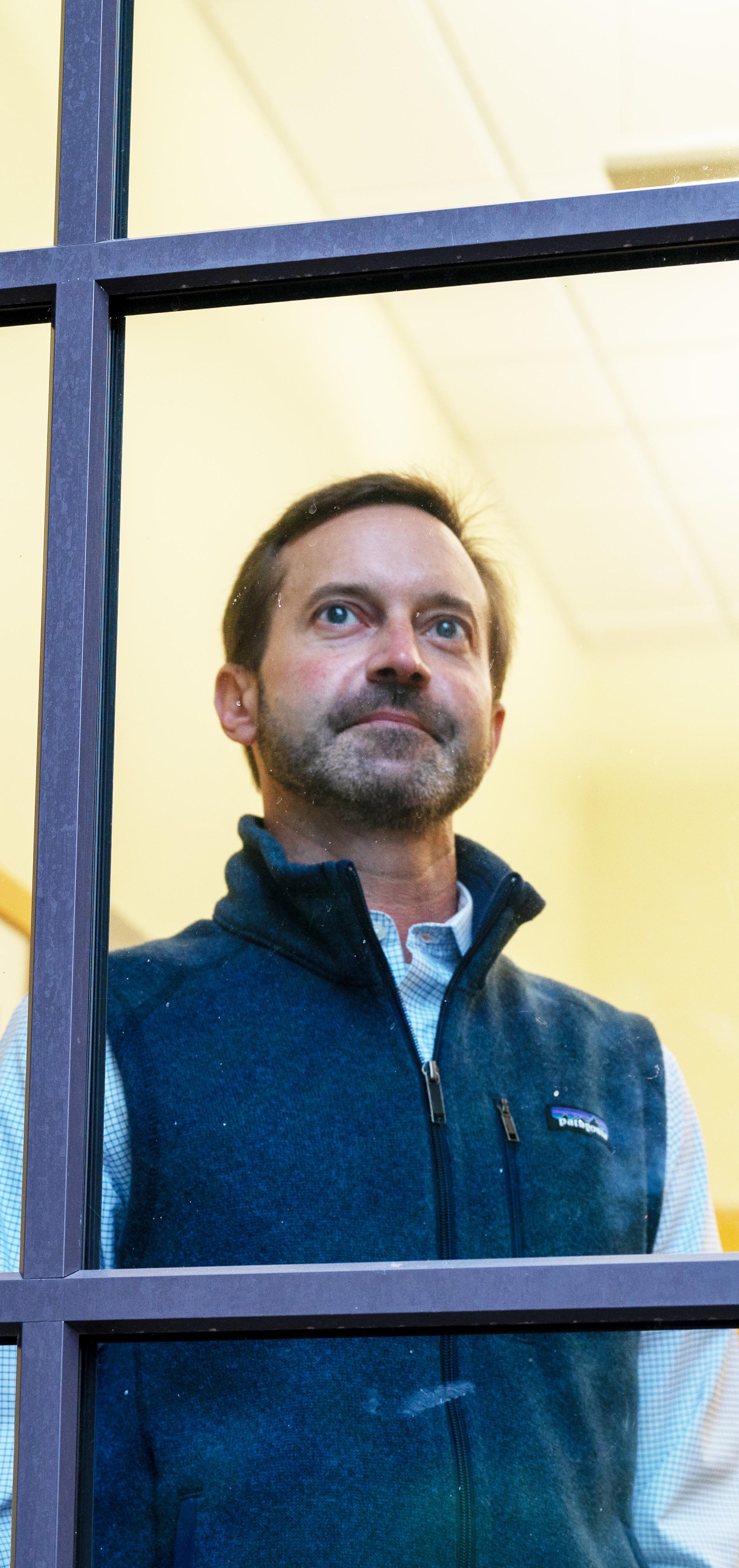
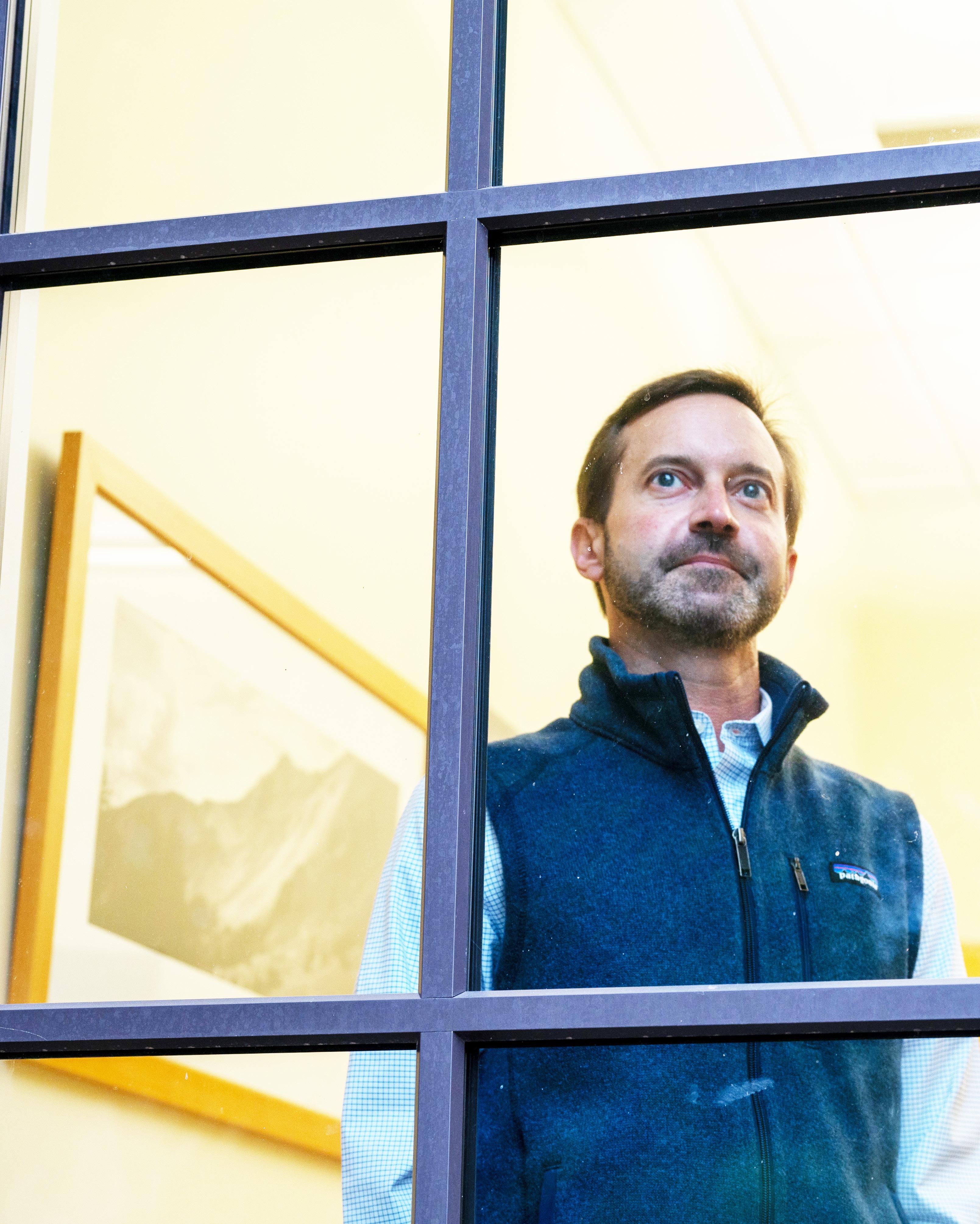

Lion ReMarker Volume 70, Issue 6 • St. Mark’s School of Texas • Friday, April 19, 2024 CHECK OUT THE SENIOR SPECIAL SECTION INSERT INSIDE Issues 3 Academics 8 Life 13 Focus 14 Editorials 20 Reviews 22 Sports 23 Inside Heart of a The newest edition of Focus explores the unique stories of community members. BACK HOME From the administration offices, Lange looks upon the Quad he missed during absence due to a heart transplant surgery. PHOTO / ZACHARY BASHOUR Visit smremarker.com for up-to-date coverage and web exclusive stories including: Junior Lukas Palys’ performance at Carnegie Hall Golf team shines at consecutive high-profile tournaments Learning Leadership with D Magazine’s Dupree Scovell Men’s Mental Heatlh Week brings new discussions to campus The journey of seniors committed to play sports in college SEE MATTERS PAGE 14
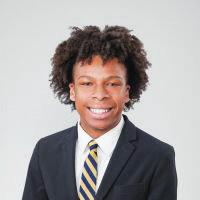
Ever since he was dissed two weeks ago by Kendrick Lamar, I’ve spent my free time listening to more Drake than normal (which is already a lot.) I guess I’ve been trying to remind myself just how good my favorite artist is despite attacks from his peers.
The penultimate track on his mixtape “If You’re Reading This It’s Too Late” is the best storytelling rap performances of Drake’s career. The song “You & The 6” is a tribute to both his mom Sandra Graham and his native Toronto. In the chorus, he says “You and the 6 raised me right.” In two verses, he claims that the two entities most responsible for making him who he is are the woman who birthed him and the city he calls home.
I can’t think of anything more true.
My mom and I have a lot in common. We’re both night owls: the late nights I’m not at school are spent on the kitchen island working with her. We share our passion for government and politics: my mother has spent the majority of her professional career in public service, a life I hope to follow. Both of us come from strong Church of Christ backgrounds; our youth is characterized by Sunday School and church events more than anything else.
Second to our faith, Dallas is the thing we most share. I’m a proud second-generation Dallasite. My mom, other than a few years spent in Austin, has lived here her entire life. And her love for this city is not only evident to anyone who’s ever met her, but lives on in me more than my brothers.
When we had the chance to move houses in the metroplex, my mom was adamant that we remain in Dallas-proper. I asked why she wanted to stay in city limits, and she said, “To be a citizen of this city means something. To pay taxes in Dallas, to vote for the Dallas mayor means something.”
As I think about the things most important to me, I reflect on my relationship with this city. Dallas and I have a love-hate relationship. I wrote my college essay on how living in a city that is basically two different towns is frustrating. A city that prides itself on contentment and prosperity is somehow always under construction.
But aren’t we all just like the city that, despite its potholes and unfinished bridges, is vibrant, grounded and full of opportunity.
I’m not going to college in Dallas.
The odds that end up back in this city as a working adult aren’t great. And yet, just like my mom, I love this city with all of me.
It is a difficult thing to have strong conviction and moral foundation while constantly looking to progress and evolve. To be content and forward-looking is hard for anyone to do, let alone an 18-year old. The only thing better at teaching that lesson than Dallas is my mother.
I’m going to miss a lot about home.
I’ll miss driving on the tollway while listening to 9AM in Dallas and going to Chuy’s or Rita’s with my family.
I hate that my weeknights won’t be filled with working Mavs games and yelling at Caleb and Luke to come eat dinner.
And, I’ll miss my mom, too.
Mom: You & the 214 raised me right.
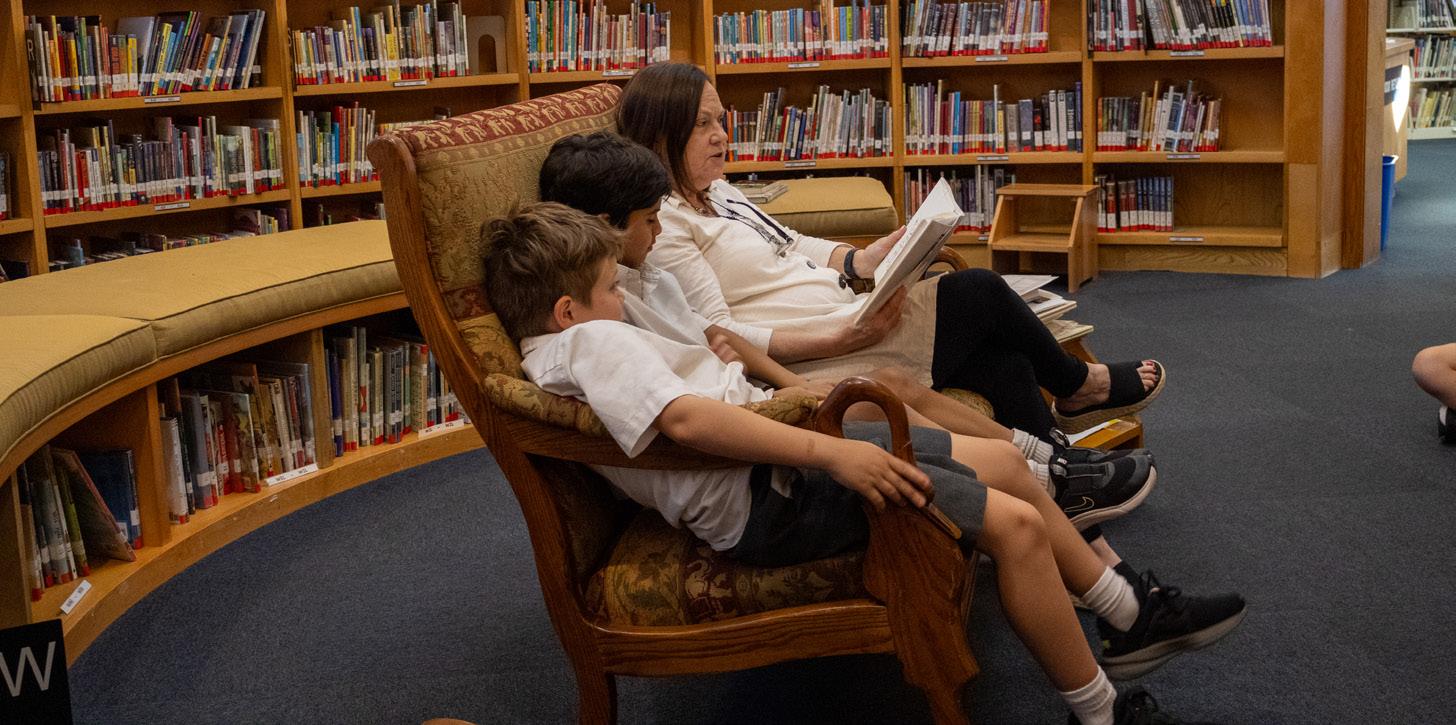


06 The making of Magic Mind
16
08
13
20
IN BRIEF
COMMUNITY SERVICE Habitat for Humanity finished another house this month, creating a permanent home for a family in need. The work was done by Upper School students who helped the on-site construction of the home by putting up walls and placing the roof. Volunteers younger than 16-years old painted the fence and decorated the porch.
SIXTH GRADE CAMPOUT Members of the class of 2030 embarked on the annual sixth grade campout April 4 and returned on April 5.
During the trip, Marksmen visited Mill Creek Farm
in East Texas, a property owned by the Crow family. The campout, which lasts a little more than 24 hours, is intended to teach students the basic tenets of camping, helping prepare them for three consecutive years of future campouts that will culminate in the Pecos Wilderness Trip during the summer before their first year in Upper Schoool.
PSAT On March 26, sophomores took the new digital Practice Scholastic Aptitude Test 10 (PSAT 10.) The PSAT 10 is a national examination consisting of a reading and writing section and a
math section that lasts for a total of two and a half hours. The test assesses readiness for college-level academic work and provides practice for the Scholastic Aptitude Test (SAT), which students will take as a part of the college application process.
AUSTIN STREET On April 8, students will have their last opportunity of the year to serve dinner to those in need at the Austin Street Shelter. The event lasts from 4 to 8 p.m. and allows students not only to serve food, but also to interact with different individuals who can provide interest-
27
ing perspectives and lessons life. In addition, the event often includes concerts from members of campus clubs, an update on the project’s impact and some interactive activity.
CORRECTION: In the March print edition of The ReMarker, there was incorrect statistic in the infographic accompanying a column by on the ADHD medication shortage. The statistic read “129 million kids between the age of 5-19 have ADHD in the U.S.” 129 million is the number of children diagnosed with ADHD in the world, not the country.
Bulletin
The story of William Hicks ’10 and his new productivity drink.
to
in and contribute to the
Old and ever new Alumni continue
invest
school at record rates.
in-depth look at the meaning and process of the Family History Paper.
Something to write home about An
The creation of the whole boy
Students have found difficulty balancing school, sports, clubs, etc.
Living between generations
How does living with parents and grandparents impact a student’s life?
Taking the baton
I ns I de | R e M a R ke R Friday, April 19, 2024 | P age 2 Cathey’s Column You & The 214
Despite being just a freshman, Harman Pope excels in varsity sports.
Noah
Cathey Design Director
very first steps
04 The
up the ranks
23 Rising
the show on the road
in the Fine Arts at ISAS Arts Festival.
12 Taking
Marksmen shine
Fred Perpall is shattering the ceiling in corporate America.
In a post-pandemic era, early in-person education is vital.

Marksmen weigh AP test benefits
With AP exams taking up spots in students’ busy schedules and on their college applications, Marksmen use a variety of strategies in preparing for them.
By Andrew Ye and William Kozoman
AP exams serve an important role in the many advanced classes that Marksmen take. For some students, though, the choice to take these exams is a complicated one.
Students take most AP classes as juniors and seniors, but sophomores can take AP exams the summer before, such as with the AP World History exam, whch requires some self studying. College Counseling Coordinator Vanessa Leyva sees this opportunity as a good foray into AP classes, helping to provide an early look into what they are like.
“I think it’s a great introduction to AP standardized testing,” Leyva said. “This is the first standardized exam you can take following the PSAT 10 and it can really help you see how APs work.”
After taking their first AP exams in sophomore year, some students may choose to self study for even more. For Junior Carson Bosita, they play a big role in college decisions because they serve as another method to test each student’s ability in a given subject.
“Every teacher explains something differently; some might be really easy and others more difficult while revolving around the same material, so it’s a good benchmark for college decisions,” Bosita said. “Last year, I took the AP
Music Theory exam and chose not to take the AP World History test since music theory was a topic I was already relatively familiar with.” AP exams account for the difficulty of each class, but they may also include concepts that aren’t otherwise taught in every curriculum.
“You need to nail maybe four or five concepts super well and fill in everything else with time,” Bosita said. “But we have our finals basically at the same time, which I think is very unbalanced for some subjects and it could be dangerous because of all the additional pressure for kids who want to do well on AP tests.”
Though they present some extra difficulty, AP exams account for a special spot in a student’s portfolio, demonstrating their aptitude through a different lens.
“If there were no AP exams, colleges would look deeper into other standardized tests that students take, like the HSK and SAT,” Bosita said. “This really makes it hard to choose what you need to study. This year, I chose to work with (Chinese instructor and Master Teacher Janet) Lin on preparing for the AP Chinese exam and it ties in well with the HSK, alleviating my workload a bit.”
AP classes and exams help a student stand out amongst the pack as being particularly capable.
“Fundamentally, AP exams are like extra credit: they can help, but you can also choose not to show them to colleges,” Bosita said. “And of course, (colleges) also look very closely at your


Five Minutes With Computer Science Teacher
Ivann Grande
extracurriculars.”
College credit can serve as a motivating factor for students to take AP exams. On the other hand, seniors may choose not to take certain AP exams if the college they are planning to attend doesn’t recognize them for credit. Senior Hudson Brown, who will be attending Harvard University next year, had this exact scenario play out for him.
“Harvard doesn’t accept any AP credit unless you’re trying to graduate in three years, which defeats the whole purpose of going there and meeting people,” Brown said.
Though Brown took many AP exams his junior year, he quickly decided that taking several AP exams simply wasn’t worth it anymore since the test scores wouldn’t help him in college.
“I went to Ms. Leyva, and I went to unregister for all of my AP exams,” Brown said. “Ten minutes later, I got $470 back.”
However, it’s worth considering that both Bosita and Brown represent special cases, and most students simply take whichever AP exams correspond to the classes they take. For the average student, Leyva has some simple advice –to be diligent, but not to worry about it much.
“A good number of students at St. Mark’s take AP exams, which is phenomenal,” Leyva said.
“We have students who do very well and it’s a great opportunity to show how well you did in a class after being in it for a year or a semester. It’s a great opportunity.”
“I teach the sixth and eighth graders and with the age groups being a bit different, they each have their own personalities and that’s helped me really enjoy the experience here.”
“I was a software engineer straight out of college, but I found out that I had a lot more of a passion for teaching, so I decided to completely pursue it, specifically computer science.”
“I got really big into what’s called SQL or MySQL, which is a language used for data and algorithms. I know that a lot of students are into game development, so maybe teaching a course on game development as an elective would be fun.“
Friday, April 19, 2024 R e M a R ke R Page 3
LEARN BY FLIGHT
Through the use of drones, computer science instructor
PHOTO / ANDREW YE
Ivann Grande has added unique ways for students to learn to program.
PHOTO / TIGER YANG
HARD AT WORK Students in Janet Lin’s AP Chinese class use the Language Lab to take an online test to prepare for the
AP
exam towards the end of the school year.
Addressing early childhood education
Despite in-class learning returning after the COVID-19 pandemic, attendance rates across the country are falling faster than ever before, leading to too many students missing out on the chance to experience valuable instruction time in their earliest years.

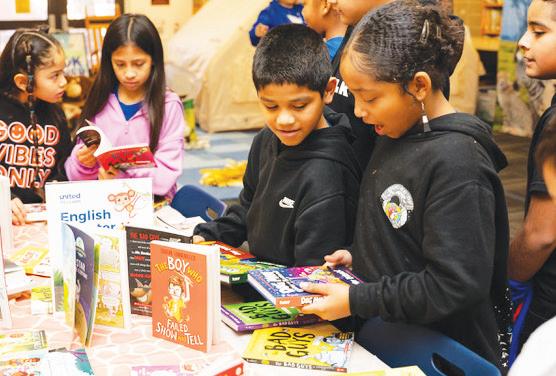 By Hilton Sampson, Arjun Poi and Josh Goforth
By Hilton Sampson, Arjun Poi and Josh Goforth
In schools across the country, hallways remain unfilled. In classrooms, books are still unopened, pencils unsharpened. Chairs are sitting empty.
More than ever before, students are missing school, and their chance to experience valuable in-class learning is fading.
According to a New York Times article, the number of “chronically absent” students has risen to 26 percent across the country, a 15 percent increase since before the pandemic, leaving many wondering if students will ever fully return to the classroom.
The COVID-19 pandemic has left attendance rates falling, and there are no signs of slowing down, even as in-person classes have returned.
These absences not only affect a student’s education, but also public school funding. Since the state determines funding based on attendance, rising absences are leaving many schools with decreasing financial resources to put kids on a path to success.

“It’s so important to get back in the classroom,” Chief Impact, Strategy, and Operations Officer for United Way of Metropolitan Dallas Susan Hoff said.
At United Way, Hoff works to create opportunities for all North Texans to thrive, including access to education.
As a children’s advocate, she has previously served as the CEO and President of ChildCareGroup, a local organization focused on improving child care services, and as a teacher and parent educator.
For young children especially, Hoff knows the importance of in-person learning and the negative ramifications for those who don’t get enough face-to-face instruction time.
“When they get to kindergarten,” Hoff said, “they might have a harder time getting along with others, which is a really, really big part of school and life.”
Hoff knows that cognitive, social, emotional and physical development are all critically important, and identifying struggles early on is important to address to provide the best path to performance in the classroom.
“Kids who have fewer experiences and fewer neural connections don’t have as rich of a foundation as they need to move forward,” Hoff said.
Creating new neural connections, or links between brain cells known
P age 4 | Friday, April 19, 2024 R e M a R ke R | I ssues
PHOTO / COURTESY UNITED TO LEARN
PHOTO / COURTESY UNITED TO LEARN
PHOTO / TIGER YANG
LIBRARY LEARNING Lower School librarian Barbara Kinkead reads to her students.
BOOKS BRING JOY Students enjoy new books at the United to Learn Book Bash, (right) and experience a newly built story walk around their school playground. (far right)
CLASSROOM READINESS
Statistics from New York Times, Department of Education, National Center for Education Statistics of public schools students in the U.S. are considered “chronically absent”
1 in 3
5, 7
26% points decline in reading, math levels respectively for nine year old students since 2020 fourth graders across the country are are proficient in reading
22% decline in pre-K enrollment in the U.S. during the COVID-19 pandemic
as synapses, are a crucial part of brain development as the brain is roughly 90 percent developed by age 5.
“From the time a baby is born, every second there are about a million neural connections being made,” Hoff said. “That’s where the brain is building all these connections that are going to hardwire your brain so you can learn as you move forward.”
The rate of these connections, however, can be influenced by the environment a child is living in, making a healthy and safe enriching environment important for early brain development.
“Interactions with your parents, grandparents or early childhood teachers are all helping to drive those connections,” Hoff said. “If a child doesn’t have support in their environment, maybe if they’ve got challenges, they don’t have enough to eat or they don’t have adults around them who are talking, listening and singing to them, the brain doesn’t make as many connections.”
According to the CDC, (Center for Disease Control and Prevention) children grow the most in safe environments with the ability to freely play and explore, which Hoff echoes.
“You need to have a lot of really different and enriching experiences,” Hoff said, “so that your brain is getting fired up and ready to roll for the rest of your life.”
Hoff believes that with investing in those earliest years, the social return and also economic return on investment is profound, making her work at United Way all the more meaningful.
“I find it really fascinating in a scientific way,” Hoff said. “Knowing how much opportunity there is in the first five years of life is infinitely fascinating to me, and there are infinite opportunities.”
One nonprofit organization aiming to address the issue of early childhood education is United to Learn, which works to accelerate student achievement in schools. The group is currently working with 75 schools and across Dallas and will soon increase that number to 100.
One of their main goals is to increase student literacy rates.
“It’s hard to think that there is a more important skill than knowing how to read,” Founder and CEO of United to Learn Abigail Williams, mother of junior Noah Williams, said.
Literacy by third grade is an essential benchmark for a child’s educational development. Up until third grade, students are learning to read, and teachers tend to feed instruction to their students. After third grade, students are reading to learn.
“It’s very critical, and that’s part of the reason that we talk so much specifically about third grade reading,” Williams said. “It aligns with how our brains are developed and it aligns with how our school and curriculum have been designed.”
United to Learn tackles the goal of teaching students to read by trying to nurture a love for reading. In one school, the organization built a “storybook walk”, where students would follow a trail around a field and read pages of a book at stations set up across the trail.
“We also invest in book bashes, which are full-day literacy parties where kids can come and shop for their very own books, and they find books that they find interesting,” Williams said.
One of the biggest challenges facing students that United to Learn works with is poverty. Out of the 36,000 students that the organization
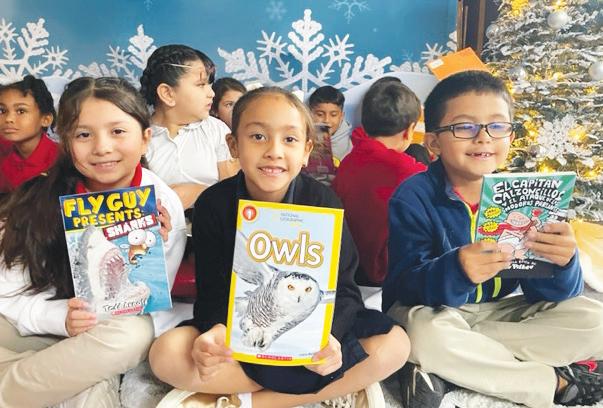
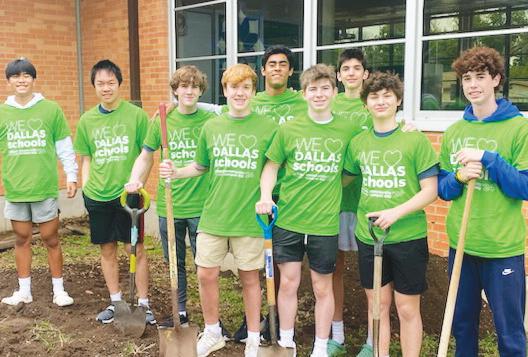
works with, nine out of 10 children are living in poverty.
“Poverty brings with itself a lot of challenges,” Williams said. “Whether that be around food insecurity, health care access or mental health care access, just the stressors of knowing whether or not your family has what they need really is a burden to a child. If a child comes to school in the morning, and they’re hungry and worried about when rent is getting paid, it’s a lot of stress on an 8 or 10-year-old child.”
To help alleviate these problems, United to Learn has sent home books and school supplies and has also partnered with local churches and other organizations to supplement food and fulfill household needs.
“I FIND IT REALLY FASCINATING IN A SCIENTIFIC WAY. KNOWING HOW MUCH OPPORTUNITY THERE IS IN THE FIRST FIVE YEATS OF LIFE IS INFINITELY FASCINATING TO ME, AND THERE ARE INFINITE OPPORTUNITIES.“
- Susan Hoff
Like Hoff and Williams, Lower School Librarian Barbara Kinkead has devoted much of her life to the growth and development of future generations, primarily working with students in elementary school. In order to cultivate a more involved, effective method of learning within her students, her teaching goes far beyond a standard curriculum.
“We definitely do a lot of basic core skill development,” Kinkead said, “but I think we really go out of our way to make sure we incorporate the social, emotional aspect of it within it. One of the best things about teaching at St. Mark’s is that we have a lot of autonomy to go above and beyond teaching the basic skills.”
In addition to teaching the phonetics and proficiency involved in reading, Kinkead aims to instill her students with the communication skills necessary to work and bond with others. As a librarian, Kinkead uses literature to form unfamiliar scenarios, giving her students enduring knowledge applicable beyond the classroom environment.
“We try to incorporate the ideas of how you get along with others, how you feel about yourself and how you make your choices,” Kinkead said. “I think a poor education truly would be just a basic teaching of the skills: how to add, how to subtract, how to multiply and how to divide without seeing the bigger picture.”
By imagining themselves in place of their favorite characters, Kinkead believes students can embody the traits and virtues, emphasized in books new, old, fantasy or nonfiction, that can help prepare them for their lives’ toughest moments.
“I do a lot of encouraging reading for pleasure,” Kinkead said. “I think reading as a skill is certainly important, but I think reading for pleasure is something that can take you through all sorts of times in your life, if you know that you can escape into a good book.”
I ssues | R e M a R ke R Friday, April 19, 2024 | P age 5
MAKING A DIFFERENCE Students at the United to Learn Book Bash show off their newly earned books (top). Student volunteers here attend a United to Learn Community Campus Day (bottom).
PHOTOS / COURTESY UNITED TO LEARN
Energizing the market
After a decade, William Hicks ‘10 returned to Dallas to work as the CEO of Magic Mind, which claims to have the world’s first mental performance shot. The company is donating $50,000 to the Austin Street Center.
 By Will Clifford and kevin ho
By Will Clifford and kevin ho
When William Hicks’ ‘10 childhood friend, James Beshara, got sent to the ER, his whole life turned upside down. Beshara suffered a caffeine overload, causing his heart to beat well above the normal resting rate. As he was confined to his hospital bed, he realized that drinking more coffee would only put his life in more danger.
In an attempt to help his friend find an alternative source for mental stimulation, Hicks traveled across the country to California. There, the duo spent years concocting the world’s first mental performance shot, experimenting with different herbs and chemical mixtures. That small start-up company, now known as Magic Mind, has earned millions in revenue.
The colorful bottle contains two fluid ounces of the green formula and aims to crush major productivity inhibitors that plague daily life by boosting brain clarity and focus.
“Magic Mind helps elevate your mental performance by sharpening your mind with our nootropics, which decrease your stress and cortisol levels and your adaptogens to give you calm, sustainable energy through half a cup of coffee’s worth of caffeine from matcha,” Hicks said. “It’s not a coffee replacement. It’s a tool you can use to get the most out of your brain and body.”
Hicks’ journey to becoming the CEO of Magic Mind began as soon as he graduated from Princeton as a political economics major, as he would hone his numerical analysis proficiency and join Barclays investment-banking division in New York. However, he discovered that the job didn’t suit his long-term aspirations.
“I learned a lot of quantitative skills, but I wasn’t really having any measurable effect on the success of my group, let alone the company,” Hicks said. “I would sometimes spend 100 hours a week working, and I realized it was a relationship business. It was really discouraging to see all the blood, sweat and tears go into it and not really yield measurable output. But I’ve always had a penchant for management, leadership and entrepreneurship.”
Still, even after he left Barclays and worked as the Chief Operating Officer (COO) at Brami Snacks for five years, he still felt like he was missing something. So when he moved from New York to Los Angeles during the COVID-19 pandemic and learned that Beshara had launched Magic Mind in the area, Hicks promptly began supervising him and became the first full-time hire.
For three years now, Hicks and Beshara used their combined expertise to move the company forward. The duo scaled up Magic Mind to double-digit employee numbers and is looking to expand exponentially. Already, the company has garnered unsponsored celebrity endorsement, launched in retail and advertised internationally. Hicks doesn’t see their momentum stopping anytime soon.
“It’s been a phenomenal journey,” Hicks said, “And the company really exists with the mission to elevate mental wealth, which is a concept we’ve been pushing on to the world — to reconsider mental health away from a conception that’s only followed by the word ‘crisis’ to one that’s actually something you invest in on a daily basis, like your physical health or your financial wealth.”
In addition to Magic Mind’s influence worldwide, it maintains a strong link to a charitable purpose, one that Hicks believes is the core component of the business.
“We donate 5 cents from every bottle sold to a

charity supporting mental well-being, typically for at-risk populations,” Hicks said. “When we were in San Francisco and Los Angeles, we were supporting charities in those areas. As I moved back to Dallas this year, we realized we had donated $150,000, and I was able to advocate to send $50,000 of that to a charity of my choice here in Dallas, and it was a natural choice to choose Austin Street Center, where I’d done so much work at St. Mark’s during my time there.”
As for Hicks’s love for the adventure of being a pillar in helping Magic Mind reach new heights, he believes these dreams of entrepreneurial success originate from his time as a student at the school.
“St. Mark’s had such an unbelievable impact on me,” Hicks said. “I held all my first leadership positions at St. Mark’s, and I feel like I learned more during high school than anywhere else. You don’t have to do high-level calculus when you’re running a business; you have to do quick arithmetic and have a keen sense for numbers, intuitively. That was all developed at St. Mark’s.”
As time passes and society undergoes significant changes, Hicks feels that future generations will eventually need to embrace a sense of entrepreneurship, especially since technological advancements will likely lead to more opportunities for creative innovation and self-driven fulfillment.
“Just getting started is the key thing,” Hicks said. “A lot of people think about it and get in the trap of studying to be an entrepreneur in order to procrastinate being one, rather than just doing it. Find something that you’re passionate about and interested in and maybe one day you wake up and decide to give it a shot.”
Planetarium to receive state-of-the-art upgrades
By Ronit Kongara
Since its opening in 2019, the Winn Science Center’s planetarium has transported countless students and teachers among the stars with its stateof-the-art SciDome 7 projection system. However, throughout the years, it’s become obsolete. Recently, a new system called the Digistar 7 was brought to St. Mark’s to upgrade the planetarium.
The Digistar 7 is the latest and most advanced planetarium system created by Cosm. The new upgraded system will replace the old computers that ran the projection dome, add two new tuning cam-
eras and use new software to run the planetarium shows. At first glance, the changes will only be a quieter atmosphere and a better full-dome projection. However, the fundamental differences will be in the shows themselves.
With the new computers and software, they will now be of higher quality and run smoother. The new software will access a cloud library to project real-time data and shows created by other planetariums across the nation onto the wide screen.
“They’re going to have really high resolution visuals that are produced in real time,” Master Teaching Chair and Planetarium Director Dr. Michael Lane
said. “Now you can fly basically anywhere in the universe using an Xbox controller.”
Around the last week of May, the new system will be installed, overwriting all of the previous programs, bringing a bittersweet end to the old projection system.
With Digistar 7, Lane hopes to hold shows more frequently and add visual aids to classes for interested students to come in and watch.
“I want to have a continuously running program displaying pre-planned shows so people can just come in during their free time and experience it,” Lane said.
MAGICAL GROWTH Magic Mind continues to expand across the country and can be found in a growing number of stores (left). William Hicks, leading the charge for his company Magic Mind, aims to not only build a successful business, but also to help give to community organizations across the country (right).
PHOTO / COURTESY WILLIAM HICKS
P age 6 | Friday, April 19, 2024 R e M a R ke R | I ssues
PHOTO / HILTON SAMPSON
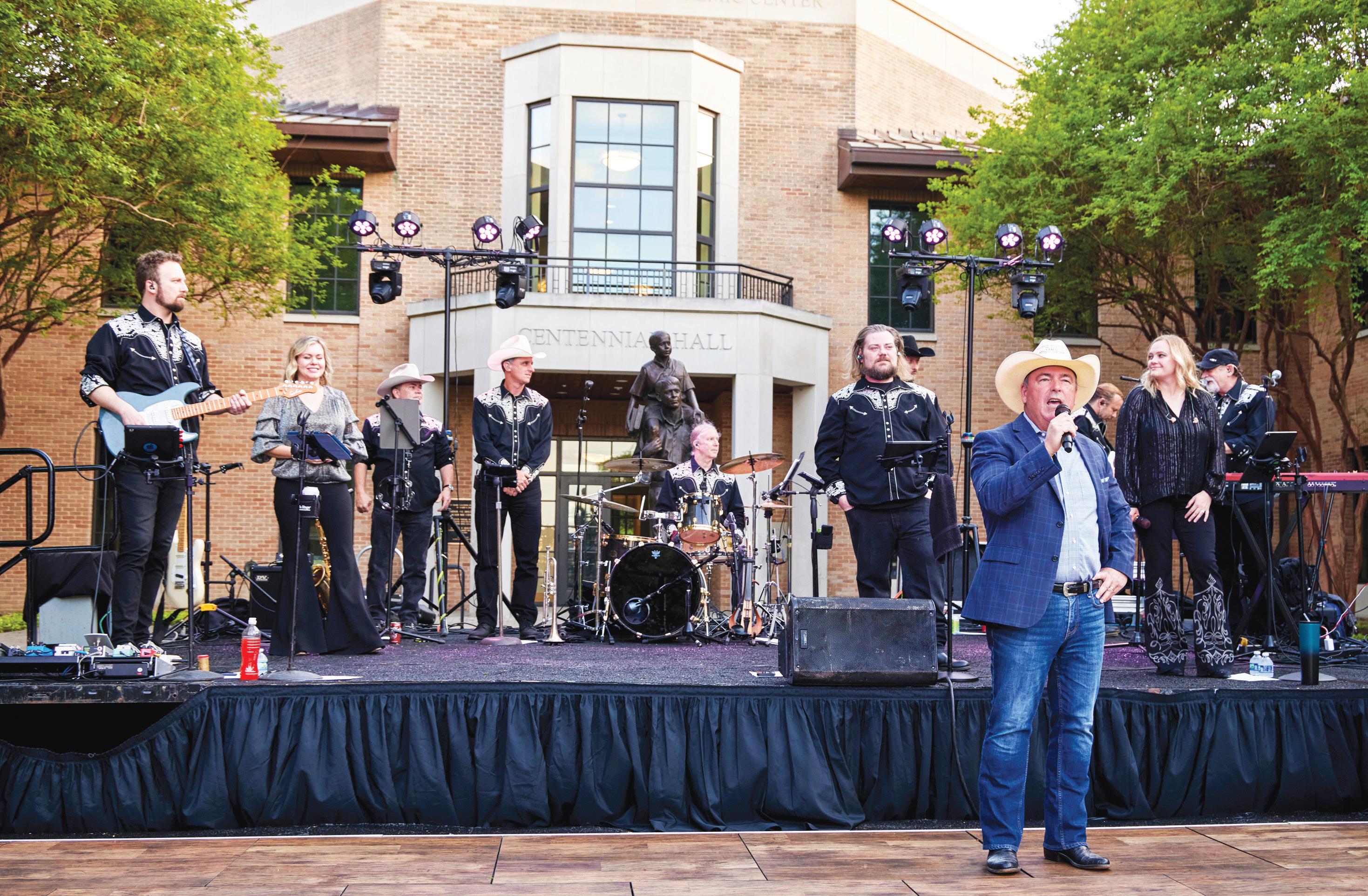
Parents’ Association hosts Celebrate Community event
From entertaining live preformances to Texas-inspired decorations, the Parents’ Associations brought the entire community together to celebrate the school.
By tejas Allada, Christopher Guffey and Rohan Kakkar
At 6 p.m., 500 people enter campus. An hour later, a car is auctioned off.
The Celebrate Community Event is the Parents’ association’s (PA) most significant community event.
Headlined by a silent auction and raffle tickets for a new car, the Celebrate event aims to provide a truly fun and relaxing experience for parents and teachers to come together as a community and bond over the school. The event is the culmination of effort from the PA and the chairs of the event, Chris Kennington and Desiree Rogers, who have worked tirelessly since September to begin planning the event.
The first step of the event is to create a theme to base the food, music and decorations on. Every year has a unique theme, and it is critical to the overall success of the event. This year’s was “The Pride of Texas.”
“We want to emphasize what a wonderful school St. Mark’s is and what it means to the Texas community at large and specifically Dallas,” Kennington said. “(The theme) kind of just came to us because lions live in prides, and we always talk about the pride, the den, the paws and everything lion related and it just kind of clicked, lions the pride of Texas.”
However, the theme was not only chosen to signify the school’s value to Texas but also to showcase the best of Texas to the guests of the event. With so many people moving to Texas in recent years, Kennington felt that this was the right decision.
“We wanted to make it more like our community event,” Kennington said. “We all come from different places, different schools, different states, and different countries. But now, we’re all here and (Dallas) is
our home and what we are about, and so we’re going to have a really good backyard barbeque to celebrate.”
While the theme is crucial to the event, the main attraction of the event is the silent auction. Parents and donors of the school often provide luxury items and teachers generously donate their own time for events that parents of the school can purchase for their kids.
“We have a suite for a home football game for the Dallas Cowboys, a Mavericks suite to watch the Mavericks play, and we also have Mavericks floor seats that are available,” Kennington said. “A lot of times a parent sees a favorite teacher associated with an auction item, and that encourages them to bid on that item.”
“WE WANT TO EMPHASIZE WHAT A WONDERFUL SCHOOL ST. MARK’S IS AND WHAT IT MEANS TO THE TEXAS COMMUNITY AT LARGE AND SPECIFICALLY DALLAS.”
- Chris Kennington
Another highlight of the night is the car raffle. Each year a brand new car is parked near the entrance of campus prior to the event, and the winner of the car gets decided on the night of the event.
“Sewell automotive has generously donated a car for us to raffle off and so they have done this every year for us, which is so so nice,” PA president Cindy Hanson said. “It’s always really fun to see who wins it and you always get excited for that person when they win the drawing.”
This year, the whole premise of the event is to have fun and a good time.
Administrators share insight into admissions
By Christopher Guffey
Each year, the admission cycle continues to add new features to improve the attractiveness of the school. This year in particular, the admissions team has been increasingly reaching out to different school districts our school hasn’t affected, as well as adding more new additions and revamping the touring process.
One way they’ve improved the system a lot was the refinement of the visits after they were stopped during covid. They’ve done this by shortening the length of tours to still include the majority of the day without sacrificing traffic problems early in the morning.
Besides just giving students tours, there is a new emphasis on giving their family member tours as well.
“This is the first year we really scheduled small group campus tours for families. we want to offer as many possibilities for a family to get on campus and experience our school firsthand.” Admission Officer Korey Mack ‘ 00 said, “I think we’re continually dedicated to opening up opportunities for families to get on campus and see what it is that we do in person.”
These new additions have expanded St. Marks’ influence on the Dallas Metroplex.
“I think it’s gotten a little more casual because you know, spring is very busy,” Hanson said. “You just come by, enjoy the band, dance, drink and have fun, and it’s not just this huge commitment, like it was in prior years so it’s casual.”
The Celebrate Community Event is easily the biggest and most planned out event of the year, and that isn’t all the PA plans out.
Since the beginning of the school year, the PA is active and ready to collaborate with others on campus. Hanson feels that with such a board of 112 parents, the PA is able to equally represent each facet of the community.
“We work with the administration and division heads for planning purposes throughout the year,” Hanson said. “We meet with them and grade representatives once a month to share and receive information. We also work with the Student Council which is a very collaborative relationship. We help out for homecoming, Upper School spirit parties, Fan Blizzard, Spring Fever, and other events.”
The PA also organizes a lot more events as well, so preparing and organizing these events earlier on is imperative.
“It starts more in the spring, We don’t even wait till summer. Mrs. Steinbruck is already up there with me right now,” Hanson said. “So after spring break from now to the end of the school year, they’re already gearing up planning for next year’s activities.
The PA, however, doesn’t get as much recognition for a lot of the things they do.
“A lot of PA volunteers spend countless hours of behind the scenes work that people might not necessarily see,” Hanson said. “But I think they really help with the culture of the school and feeling welcome.”
“The level of choice within the traditional Independent School District is starting to show itself in the list of schools that have which boys apply to our school,” Mack said.
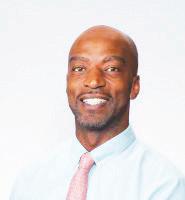
This is an especially good sign, as reaching out to farther school districts can be a challenge for private schools.
“We’re starting to build higher levels of interest from magnet schools within the Independent School District,” Mack said.
Admitting students from these magnet schools doesn’t just help to increase the diversity of the student body, it also allows for St. Mark’s to gain more traction around where these students live.
“It helps a lot when you get a couple of students from that school then report back to their neighborhood about the type of experiences that they’re having at St. Mark’s, which generates interest,” Mack said, “The more familiar our counselors are with colleges, the more likely we are to get boys to apply to those colleges,” Mack said. “The same can be said about these different local schools and our efforts to strengthen relationships witht heir counselors.”
Although the influx of diverse applicants is great, each year, there are still applicants that get an offer but choose not to take it.
“When a student declines an offer, we definitely reflect and try to think of ways in which we could have been more attractive,” Mack said.
Applicants declining their offer to St. Mark’s tell the admissions office that they still have work to do, and they continue to work hard to better the admissions process.
“We do a good job of constantly discussing ways that we can improve how we present the school,” Mack said. “As an office, we continue to grow.”
PHOTO / COURTESY DAVE CARDEN
I ssues | R e M a R ke R Friday, April 19, 2024 | P age 7
COMMUNITY TIME Headmaster David Dini gives a speech to the fellow guests
Korey Mack Admission Officer
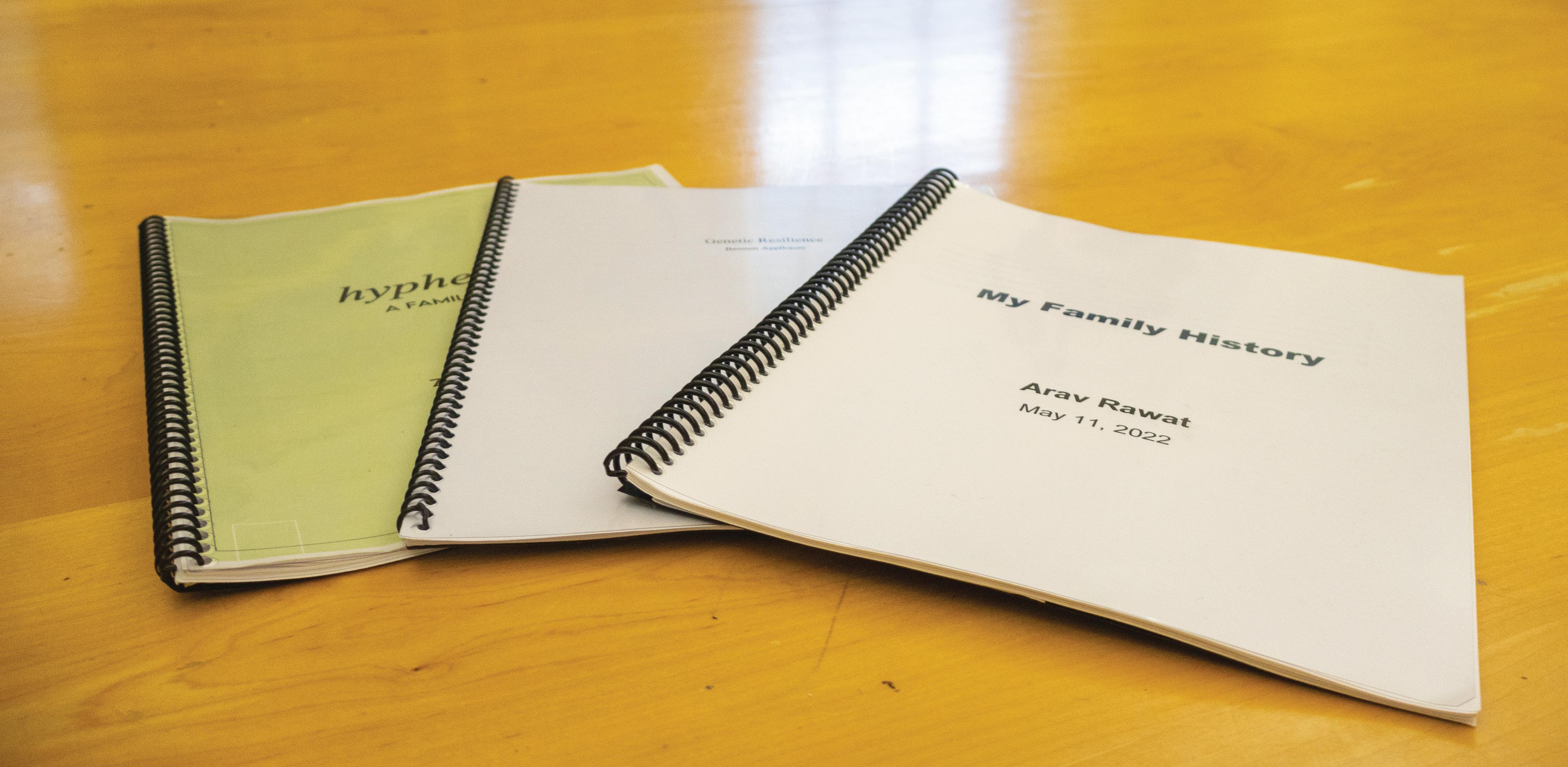
Family history paper leaves legacy
The family history paper has been a vital part of a Markman's journey through Upper School. Sophomores for the past 40 years have written about their family, but what is the significance in this?
By Oliver Peck and Nolan Marcus
Every year, sophomores are given a momentous task: the legendary Family History Paper. Each year, each student interviews his family members to try to find his story: where he came from, what life for his parents and grandparents were like, and how he ended up here.
No story is the same nor is the takeaway from it, but every single student writes his story.
But why? Why does one’s family history matter? What can one gain from looking into the past when trying to better his present and future? Or is his paper just a sophomore year assignment with no true significance besides learning some cool family trivia?
When the project was first introduced 40 years ago, it lacked deep meaning. However, around 15 years ago, there was a pendulum shift, and the paper gained a unique purpose.
“Back then, it was mainly just a long research paper on your family and where you came from,” Victor F. White Master Teaching Chair David Brown said. “The paper has evolved over the years since then. Once the character and leadership program led by (Malcolm K. and Minda Brachman Master Teaching Chair Dr. Martin) Stegemoeller took hold here about 15 years ago, it was suggested that we combine family history with character and leadership, so it underwent some significant revision.”
This change shifted the focus of the paper for students; now, they talk not only about their family, but also themselves. Looking deeper, students begin to discover how their family has shaped them and con-
sider the kind of person they want to become.
“Your family has a telos,” Stegemoeller said. “Your telos has been shaped by that telos. Is that the telos you want? Are you gonna tweak it? Why? Why not?”
The paper forces students to choose whether or not they want to continue with their own family’s virtues, revise them or even disregard them altogether. Over the years, many aims and goals that students have discovered are not necessarily positive things.
“I don’t have a bunch of values that are just in my
“THE PAPER LETS THEM THROW THEMSELVES INTO THEIR FAMILY MEMBERS' LIVES AND TELL THE STORIES OF WHERE THEY'RE COMING FROM. ”
-Martin Stegemoeller
DNA,” Dr. Stegemoeller said. “They are transmuted to me through my family, so that family makes a big difference in your own views. If you’re not self aware, if you’re not grateful, if you don’t even know where you came from and if you don’t have a pretty concrete sense of the virtues that are going to carry you through challenges, you’re not going to thrive.”
Due to this importance, self-knowledge is a virtue that is emphasized at the school, but many writers believe it can only be achieved through learning about your roots and where you came from.
“One of the important tenets of character and leadership is asking hard questions about who you
are and what you believe and who you want to be,” Brown said. “And it’s really hard, we believe, to do that sufficiently unless you know where you’ve come from, and the goals and aims of your family members who came before you and how that has contributed to who you are.”
In addition to the personal character aspect of the paper, it also serves as a way for students to learn about their family’s history. Often, students hear impactful stories or uncover niche details that alter their entire perspective of their family’s history.
“I’ve discovered that a lot of students are excited to find out some things they didn’t know were true about their family,” Brown said. “It seems that a lot of the older generations, grandparents who perhaps went through wars, are not eager to talk about such things. They sometimes are hurtful, but when they’re asked about it directly, things come out that students go, ‘whoa, that’s in my history.’”
These stories can also help students better understand their family’s hardships and the virtues that came from it.
“There’s kids whose families have had a decent amount of crime in the past, or whose parents are first or second generation immigrants,” Stegemoeller said. “And the paper lets them throw themselves into their family members’ lives and tell the stories of where they’re coming from.”
So not only does the project leave an impact on the student, but also their family as a whole.
SEE STRENGTHENING PAGE 10
Total solar eclipse captivates students and teachers
By Rohan Kakkar
A roar of excitement from more than 1,000 members of the school’s community erupted from the football field on April 8 at 1:41 p.m. Marksmen, young and old, collectively stared into the sky with childlike awe and excitement during the few precious minutes of totality during the solar eclipse.
A total eclipse is one of the rarest natural phenomena, as it requires the moon’s orbit to come in front of the sun, blocking the sunlight and essentially creating a few minutes of darkness during the day.
Members of the community were fortunate to witness a total solar eclipse, where the moon blocks 100 percent of sunlight and only leaves the sun’s corona exposed, helping create the feeling of night during the day,
Dr. Michael Lane, Science Teacher, Director of the Planetarium and Leonard N. “Doc” Nelson Alumni Master Teaching Chair, had been waiting his whole life to view an eclipse. He gave presentations in the Planetarium to all Middle and Upper school students and faculty for weeks before the eclipse, to ensure that all members of the community would be prepared to
fully enjoy the experience.
“When the eclipse reached totality and that little part of the clouds that opened up, my heart was racing,” Lane said. “I was like, ‘oh my God’, this is going to actually happen. I was sitting amongst the eighth graders, and we were all just getting so excited that this was going to happen and there’s just the spontaneous kind of cheering and excitement.”
For the full story on the Eclipse festivities on campus, visit smremarker.com
Page 8 R e M a R ke R Friday, April 19, 2024
PHOTO / WINSTON LIN
FAMILY FOREVER English instructor Dr. GayMarie Vaughan often uses past family history papers as an example for her current students.
Individual vs. group work
In work environments, collaboration skills are necessary, but in a classroom setting, individual prowess is commonly favored. Teachers discuss the balance between collaborating and working alone, reflecting on real-world dynamics.
 By Joseph Sun and Weston Chance
By Joseph Sun and Weston Chance
In a school where each class has around 15 students, everyone is familiar with each other.
But, in a company with thousands of colleagues, that personal connection seemingly disappears. Managing a small team for history class group projects and two-person English presentations about Song of Solomon becomes obsolete and impractical for working at a large corporation.
Besides the occasional Google Slides presentation and chemistry lab, the school rarely offers team-building opportunities in the classroom and instead emphasizes the importance of individual ability and work.
After several years of experience working with companies on Wall Street, English Department Chair Michael Morris believes in a combination of both group and individual activities.
“It’s good for the school to focus on preparing students for that kind of work,” Morris said. “I think we do it at a good level, but maybe that’s something that teachers could continue to prioritize.”
Before coming to the school, School Chaplain and Episcopal Priest Stephen Arbogast boasted a long career in finance, and similar to Morris, believes that there should be always a balance between collaborative and individual work.
Here, the ultimate goal is to prepare students for the next level of education. This places a heavy emphasis on the importance of individual work as students are being assessed by institutions for their own individual merits.
“It would, of course, be wonderful to teach more collaborative skills, but I think we can’t kid ourselves that the college admissions process limits the amount of flex-
ibility we have toward teaching students,” Arbogast said. “We’re required as professionals to assess them and we’re required to assess them as individuals, not as members of teams.”
Another problem teachers face in instituting collaborative work is the difficulty of fairly evaluating the success of the group, contrary to the business world, where there are clear indicators of achievement.
“I think the biggest difference is that although there are a lot of subjective factors in business, at the end of the day, most things are quantified by dollars,” Arbogast said. “And so it’s much easier to assess the success of some activity than it is in determining whether someone is writing an essay better.”
Despite the contrasts between evaluating the success of groups in the professional world and the classroom,
“IT’S GOOD FOR THE SCHOOL TO FOCUS ON PREPARING STUDENTS FOR THAT KIND OF WORK. I THINK WE DO IT AT A GOOD LEVEL, BUT MAYBE THAT’S SOMETHING THAT TEACHERS COULD
CONTINUE TO PRIORITIZE ”
- Michael Morris
many similarities persist between the two.
“In English class for example, every time that you go home with a reading assignment, that’s like the independent work in finance,” Morris said. “Then you bring it back to the group, it’s not a team of four, it’s a team of 15, a class, and then the teacher is trying to coordinate the efforts of all of the students to contribute back to the to the group.”
While occasional collaboration occurs in the classroom, instructors still predominantly emphasize individual work for their students, which may be more similar to the professional world.
“There was group work, but there was also lots of individual work,” Morris said. “What the senior person would do is delegate different assignments to different members of the team, then you would go off and do your work and then bring it back to the team. Even though it’s different, a discussion versus a small team meeting, there are real parallels.”
Even outside the classroom, students have the opportunity to participate in student led organizations, allowing them to develop leadership skills through balancing teams.
For sophomore Michael Yang, robotics has been a huge part of his high school experience. Along with others, Yang founded the first robotics team participating in First Tech Challenge, or FTC.
“We have nine people.” Yang said. “ It was hard starting a new team this year because I had to work with the captains a lot to manage everyone. It’s hard to get everyone to communicate and work together efficiently.”
To build a high-level, competitive robot, Yang had to balance several aspects, from leading the team to ordering parts. Through the founding process, engineering and robotics teacher Stewart Mayer has helped Yang and the team.
“While Mr. Mayer doesn’t really do much of the actual leading, he teaches us how to manage, as he was the CEO of a company,” Yang said. “He always gives us a lot of tips on how we can help everyone to become a more efficient leader.”
Head of Upper School explains significance of end of year awards
By Kevin Ho
As the May 30 Commencement for the Class of 2024 approaches there are several major awards announced. Each of the prizes has a purpose that pertains to specific aspects of the school, congratulating and honoring exemplary students nominated for their achievements.
On that evening, the Headmaster’s Cup, the School Flag and the J.B.H Henderson Citizenship Cup will be presented. Combined, these three accolades form the platform of diverse excellence that, nterim Head of Upper School John Ashton believes, embodies the school’s philosophy.
First the Citizenship Cup, awarded by the Head of Upper School, is given to the senior who possesses sincere altruism for others in addition to integrity. Next, the Head of Upper School also presents the School Flag, which symbolizes the remarkable allegiance that a senior has to the school community. And lastly, the Headmaster’s Cup is given by
the Headmaster to an especially accomplished and virtuous Marksman who best represents the attributes that the school aims to provide its students with. In determining who earns these awards, faculty members participate in a thorough selection process through lengthy discussions. When the faculty meets together, several people nominate a student and affirmatively speaks on his behalf, providing reasons for why the student reflects the qualities of a particular award. This part of the procedure is common to selecting all award recipients.
The sole distinction is that for the Headmaster’s Cup, the Headmaster has a couple of days to deliberate before making a final decision, while faculty members vote on their final nominees for the School Flag and Citizenship Cup awards.
In school history, rarely have there ever been cases where seniors were evenly matched for nominations. Ashton recalls that the only time such an event occurred was during the COVID-19 pandemic in 2020.
“Each member of the Class of 2020 was awarded the School Flag because of the way they handled them-
selves during the pandemic,” Ashton said. “It’s not that we just felt sorry for them — we had discussions. We just felt that the way they handled themselves was of such resilience, optimism and enthusiasm during very difficult circumstances. It was tremendous, and they all earned the school flag.”
For Ashton, the three major school awards include the balanced emphasis on a student’s character and achievements. He believes the awards help foster a culture of honor and respect that reaches all corners of the school community.
“For those who are here now and those who’ve come before us, we want to recognize extraordinary effort and exceptional performance,” Ashton said. “The philosophy behind recognition is to do just that. We have a set of fundamental principles and values for the school that we all believe in here. Having these recognitions honors aspiration, but those are just the outcomes of what’s most important, which is how you guys move here throughout the day with each other, how you treat one another, the values you live by and then certainly the contributions you make on campus.”
A c A demics | R e m AR ke R Friday, April 19, 2024 | P A ge 9
GRAPHIC / JOSHUA GOFORTH
GEARS TURNING Some students work well individually but others work more productively in groups.
Colleges return to mandatory testing
Regardless of criticism surrounding the accuracy of standardized test scores in the college application process, many top colleges are switching back to test mandatory
By Oliver Peck, Kayden Zhong and Doan Nguyen
In early 2020, with the advent of COVID-19, standardized testing centers across the country that administered SAT and ACT tests were forced to close. The change prompted many colleges to make the tests optional. But recently, many top universities, such as Dartmouth and Yale, have announced that for fall 2025 application test scores will once again be mandatory.
These quick changes come as the exams themselves are undergoing significant makeovers. For example, this past March, CollegeBoard introduced a digital version of the SAT—two-thirds the time, half the questions and a new adaptive system with the online calculator Desmos installed.
These changes have been met with divided reactions. Some experts believe that the digitization will benefit well-prepared students and make the test more forgiving; others disagree, and among other claims argue that staring at a screen for extended periods of time can be damaging to students’ health.
Critics of standardized tests, which have been used for decades in the college admission process, have long argued that the tests are poor gauges of academic success, and that more affluent students held an unfair advantage due to better access to test preparation materials. Many had previously hoped that the switch to test-optional would be permanent.
Some colleges believe otherwise. In a statement from MIT’s Dean of Admissions Stuart Schmill, he pointed to research done by an analysis team that indicated that SAT scores helped significantly in predicting a student’s academic readiness. Another study conducted by a group called Opportunity Insights based out of Harvard found that students from different socioeconomic backgrounds who had the same standardized test scores were likely to receive similar grades in college.
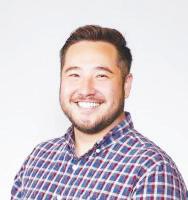
Associate Director of College Counseling Josh Shandera believes that the reversal comes with its own pros and cons, and cautions against jumping to conclusions with the data.
“A lot of colleges are comparing data from students pre- and post-COVID, with and without test scores,” Shandera said. “For a lot of schools, test averages had been really inflated because only students with really high test scores were submitting them.”
With the reintroduction of mandatory test scores, the data pool being used will become more representative. And Shandera thinks that although scores will be required, colleges may decide to factor in the scores less than they had prior to the pandemic.
Even so, these varied policies have been the cause
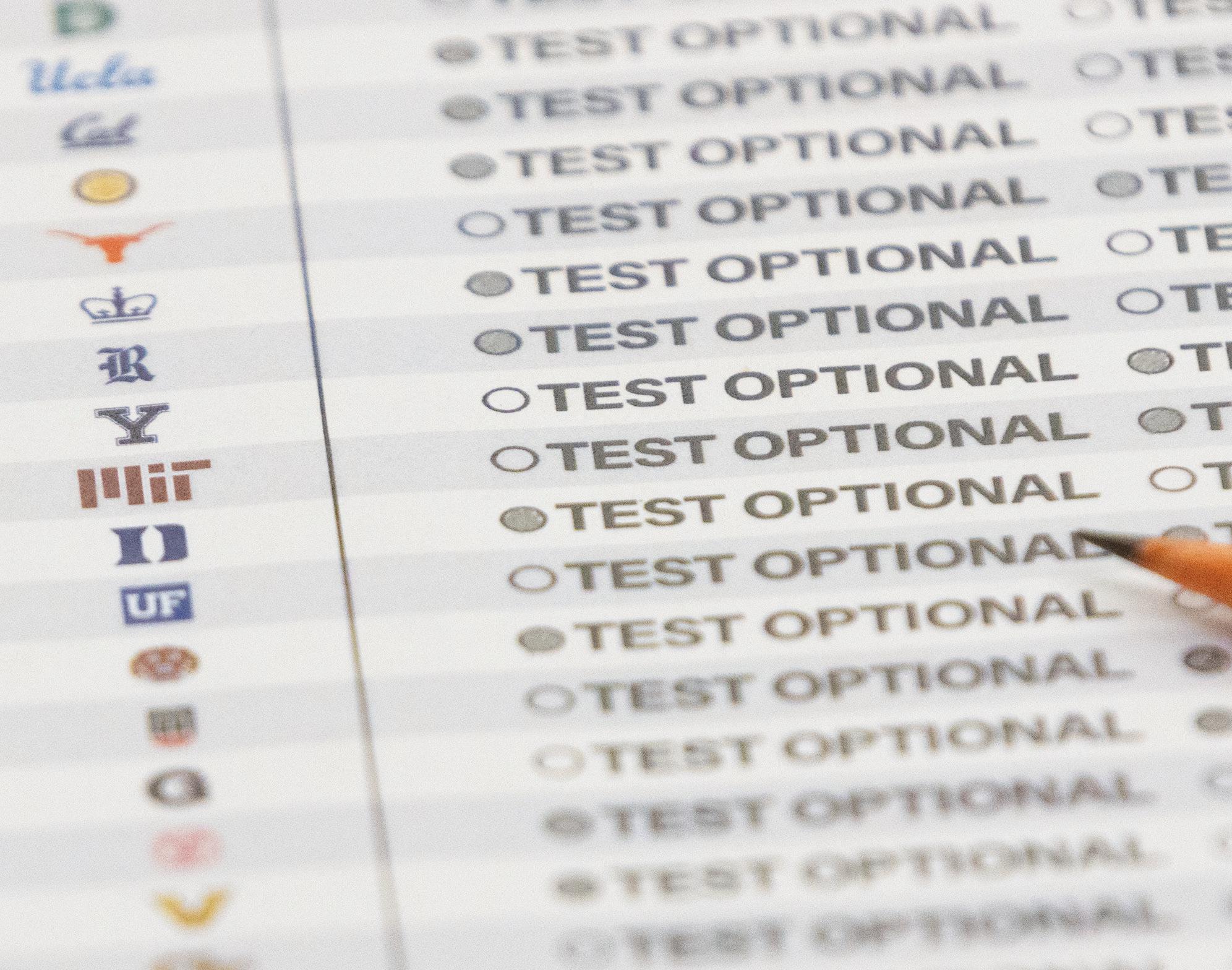
CHANGING TIDES Almost 80 percent of colleges stayed test-optional as of last year, however, more and more schools are reverting back to requiring test scores.
of much confusion and anxiety in students across the nation applying to schools.
“Do I need a test score? Do I send one? Who's looking at it? How much are they looking at it? There’s a whole bunch of different things (to consider),” Shandera said. “We tell students to still plan for prep if you want to anticipate taking standardized tests, and then when it comes time to actually apply, we can figure out what you do with the score.”
Some students prepare months in advance, with books like the Princeton Review, or with digital materials like Revolution Prep. Junior Matthew Freeman is one of many students who use outside test preparation. He supports the change back to mandatory test scores.
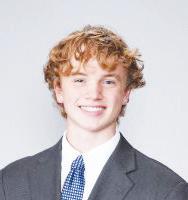
“I'm submitting a score personally, and so I think it'll allow colleges to look at my scores along with people that may have similar grades,” Freeman said. “Colleges post an average score range, and if you submit a score that's below the range, that's going to hurt you, but if you submit a score in the range or above the range, that's going to help you a lot.”
While standardized test scores might not neces-
“I THINK THE SWITCH BACK TO TESTING PROVIDES A MORE HOLISTIC VIEW ON THE STUDENT IN QUESTION AND THEIR ABILITIES AS A STUDENT.” George Hoverman
sarily reflect how ‘smart’ somebody is, they can offer a more comprehensive report on a student, adding another element to the admissions decision. Officials at Brown, Yale and Dartmouth also found that many students who withheld their scores thinking it would hurt their application would have boosted their chances by submitting them.
“I think the switch back to testing provides a more holistic view on the student in question and their abilities,” junior George Hoverman said. “Although it’s not perfect, testing can also help differentiate between students in different schools.”
Though the majority of colleges are still electing to stay test-optional for the coming fall application, many more are bound to follow the switch back to testing in the future. The chasm between submitting scores or not only continues to grow, and the scene of this integral part of highschool culture is in the middle of complete change.
Strengthening bonds, discovering roots through Family History Paper
CONTINUED FROM PAGE 8
"A lot of families spend a lot of time on it together,” Dr. Stegemoeller said. “It brings them together. And a decent number of boys self-report that it's the most meaningful assignment they've ever done. They don't need to self-report that, so I take them pretty seriously.”
For teachers, the Family History Paper allows them to better connect to their students and learn their story.
“The main thing I get out of it is the chance to sit for 45 minutes to an hour with students and talk with them about their lives,” Brown said. “We're not just talking about their writing, I'm getting to know them on another level.”
Both Stegemoeller and Brown have written
Family History Papers of their own, researching their respective family history to better understand their own virtues and life values.
“I just did it on my own five summers ago,” Dr. Stegemoeller said. “It was right before my twins came along, so I thought a lot about how to raise them. They're being raised more or less diametrically opposite of how I was raised, so it was very valuable to me personally to think through all that.”
Like Stegemoeller, Brown was able to discover more about himself through his writing, finding that he appreciated his family even more and was able to further deepen his bond with his family.
“As I wrote about them, things would come to my mind that I hadn't considered,” Brown said. “The more I wrote and explored, the more I un-
derstood clearly how I am a part of them and how I am a product of them. That was really eye-opening. I thought I was a pretty independent person, but things I said I would never say to my children that my parents always said to me, I say all the time.”
However, the paper also helped Brown to branch out from his familial beliefs and develop his own ideas.
“In some ways, I have become more independent,” Brown said. “I pulled away from some of the beliefs that my parents and my forefathers had. It was kind of a revelation to me that things I swore to myself earlier in my life I would never depart from, I have departed from because I had become my own person and developed my own beliefs and ideas.”
P age 10 | Friday, April 19, 2024 R e M a R ke R | a cade M ics
PHOTO / JOSH GOFORTH
Josh Shandera College Counselor
George Hoverman Junior
Lower Schoolers learn technology, gain advantage
As the world becomes increasingly reliant on the technology, teaching skills like coding and working with robots at an early age provides a unique experience for younger students.
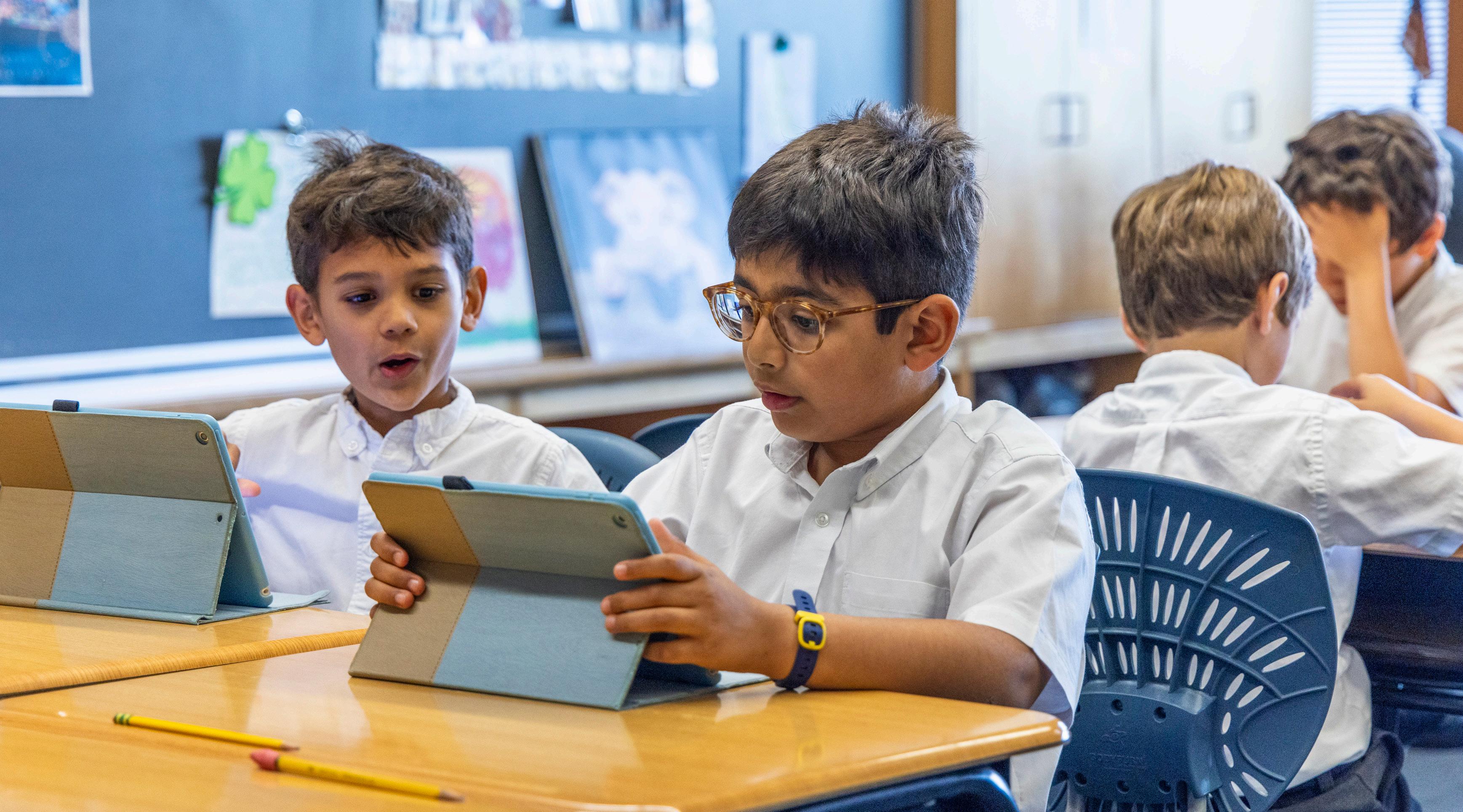 By Eric Yi and Ronit Kongara
By Eric Yi and Ronit Kongara
In a digital world where computers are so prevalent, many people expect technology to be used everywhere in academic classrooms. Technology often has the potential to expand understanding on a topic, by adding different perspectives. However, some people emphasize the downsides to technology.
Beginning in first grade, students are introduced to technology in both science and computer science classes. In computer science teacher Aimee Whitaker’s Lower School classes, students are introduced to basic coding, digital citizenship and work with robots. Similarly, Lower School science specialist Matt Dillon focuses on teaching about various technologies, giving them opportunities to explore.
“We’ll use iPads and we'll do some virtual reality activities with goggles,” Dillon said. “We will also teach the third grade boys how to use Inkscape and use that with the laser cutter to make something. In fourth grade, we teach them CAD in Tinkercad and then they can start making things on a 3D printer just to introduce them to that.”
Dillon believes that having accessible technology in the classroom brings the added benefit of allowing the students to be involved with different experiences that they otherwise wouldn’t be able to have, but
technology also comes with several downsides.
“I think one of the things that happens as we get too reliant on technology, we lose the aspect of hands-on-learning,” Dillon said. “Are students learning something as well as if they can actually feel it, pick it up and physically move it from one side of their desk to the other? Why would I want a kid to get on a computer and try to digitally pollinate a flower when I can have them hand-pollinate a flower in real life, have that flower develop into a seed and then take home a plant that has gone through that whole process?”
Lower School classrooms give students a foundation in their exposure to new technology, but as students grow older and transition into Upper School, being able to effectively use technology is imperative—almost all assignments require students to use computers for various purposes.
For some, however, this usage appears to be overwhelming. To address this issue, Latin and Classics instructor David Cox attempts to keep Marksmen from needing to use their laptops in the classroom. He believes that computers serve more as sources of distractions to students in the classroom rather than being useful learning tools.
“I oppose using laptops,” Cox said. “I think there’s no place for them in the classroom. I’m not opposed to technology; I think it’s a wonderful tool, but a lot
of students cannot open their laptops without going down some rabbithole. For example, with fifth graders, as soon as a laptop opens, they all flock to it like moths to the candle. It’s really more of a distraction than a tool.”
But, Cox still appreciates technology’s helpful aspects when devices are actually used as tools. He believes that the internet can help reinforce what a teacher has taught during the class, as countless websites provide anecdotes that supplement in-class learning. For Cox, these aspects are beneficial for students in understanding new material.
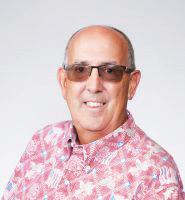
In the end, both Dillon and Cox share similar viewpoints: technology can either be a useful tool or a detriment when teaching, and they both strive to discover a healthy balance between hands-on activities and digital learning for students.
“There’s a place for technology and there’s a place for reality,” Dillon said. “And as a teacher, I think we’re responsible for giving the student the best of both worlds.”
Record number Marksmen qualify for second round of Physics Olympiad
By Rohan Kakkar
This year, a record-breaking five Marksmen qualified for the second round of the U.S. Physics Olympiad team. Out of 5,000 U.S. high school students who take this first test, only 400 students qualify for the second round of testing, and considering that five of them all attend the same school is remarkable.
The first test, the F=ma exam, evaluates advanced physics topics and requires at least 15 out of 25 points to be earned proceed to the next round, further showcasing the difficulty of the test.
The five Marksmen consisted of juniors Surya Dinesh and Deven Pietrzak, and seniors Kevin Lu, Rishi Rai and Matthew Gomez. Some members, like Dinesh, have qualified for multiple years in a row. Physics teacher Stephen Houpt has always been
involved in the Physics Olympiad, and this year the record-breaking number of Marksmen came as no shock to him.
“(The U.S. Physics Olympiad team) is selecting the best and brightest students across the U.S. and in order to do that, they have to ask hard questions,” Houpt said. “However, they were really well prepared.”
While the F=ma exam is very challenging, the second test, called the Physics Olympiad (USAPhO), is even more difficult and extends into a theoretical knowledge of physics. It requires complete knowledge of advanced physics subjects and narrows down the 400 students to just 25.
“The first test is multiple choice, but the second test is all free response,” Houpt said. “It’s very difficult, and apparently this year, it was almost all topics that aren’t covered in, for instance, AP Physics 1. It’s all concepts
like relativity and optics and other advanced physics. For example, the highest scorer this year on the F=ma exam scored a 19 out of 25 whereas they would score a 100% on an AP Physics C test.”
While most studnets who take the test are juniors or seniors, there have been some exceptions. Houpt even recalls that a freshman qualified for the second round one year.
The five students took the exam on April 2, and are currently waiting for their results. If they advance, they will attend the U.S. Physics Team Training Camp from May 31 through June 11 at the University of Maryland. From there, only five students are selected to represent the U.S. at the International Physics Olympiad in Iran from July 21 to July 29.
A c A demics | R e m AR ke R Friday, April 19, 2024 | P A ge 11
PHOTO / COURTESY DAVE CARDEN HANDS ON Second graders Declan Tolia and Hridaan Soni use iPads in their Lower School classroom.
Matt Dillon Lower School Instructor
Marksmen perform at fine arts
From orchestra to photography, students of different Fine Arts studies went to Austin to show off their various talents at the annual Independent Schools Association of the Southwest (ISAS) Arts Festival.



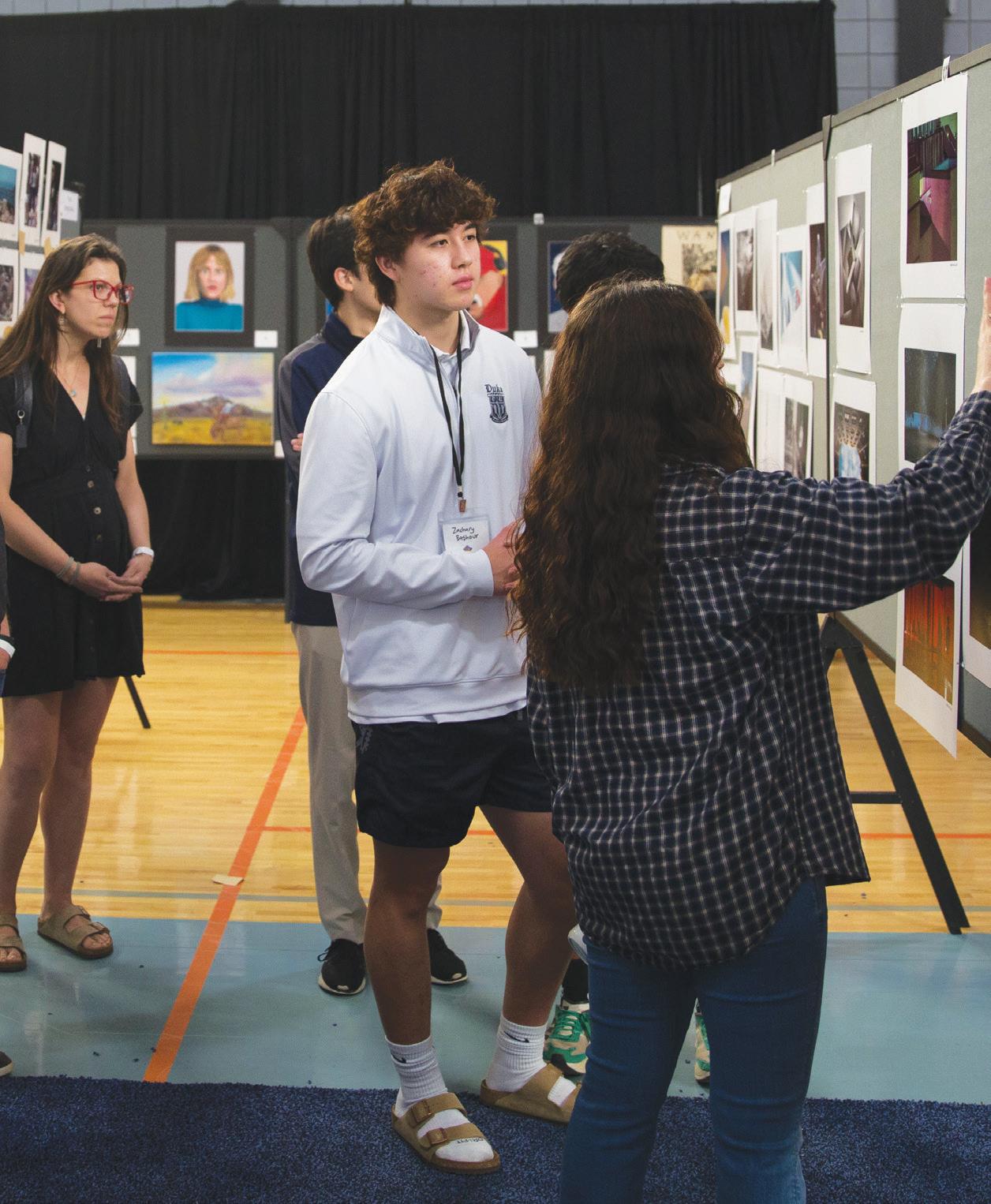
P age 12 | Friday, April 19, 2024 R e M a R ke R | a cade M ics
PHOTOS / COURTESY ANALISA RODRIGUEZ & TIGER YANG
ISAS ARTS FESTIVAL BREAKDOWN 54th annual ISaS LOCATION: AUSTIN DURATION: 3 DAYS HOST: ST. ANDREW’S EPISCOPAL SCHOOL 11 FRESHMEN 22 SOPHOMORES 41 JUNIORS 39 SENIORS ATTENDANCE BY CLASS: FROM ACROSS THE STATE: more than 3000 students more than 40 schools 20 performance opportunities
FESTIVAL OF THE ARTS Juniors Jediel Sarfo and Ethan Zhang play the violin and piano respectively (top left) Sophomore Brady Wyatt and junior Calvin Yates perform in the band (top right) Artwork from St. Mark's students are displayed (bottom left) Senior Zachary Bashour admires the work of photographers at ISAS (bottom right).
Generational wisdom
Many Marksmen live in multi-generational households. Senior Lucas Blumenthal and Junior John Householder discuss how their grandparents have influenced and continue to influence their lives.
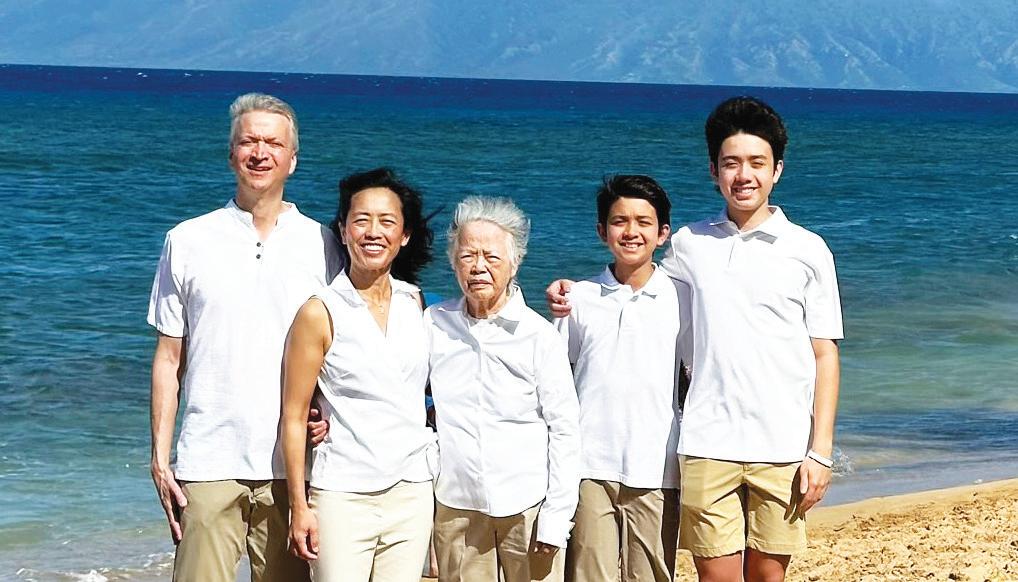 By Akash Manickam and Matthew Hofmann
By Akash Manickam and Matthew Hofmann
Exhausted after a tough football practice, senior Lucas Blumenthal shuffles up the steps of his house and slowly opens the door. As he steps into the house, the rich smell of Chinese food wafts down the hallway.
His stomach grumbling, Blumenthal walks down the hallway and sees a variety of dishes and platters organized on the counter. He can’t wait to eat.
However, it wasn’t his mom, dad or even younger brother who prepared the traditional Chinese meal sitting on the counter. Rather, it was his grandmother who lives with his family that prepared the delicious meal.
A member of a multi-generational household, Blumenthal has grown up with his grandmother as a constant presence in his home. Right before he was born, she moved into the house with his parents, and has lived with the family since.
The original reason for her moving in was to help Blumenthal’s mom raise him and eventually his younger brother Sammy. Blumenthal’s grandmother stayed with the family when they moved to Dallas as well, continuing to take care of the kids while Blumenthal was entering fifth grade.
“It’s always cool to come home and have a home-cooked meal from your grandma,” Blumenthal said. “When both my parents were at work, or when I was younger or when my parents would go out of town, we wouldn’t have to get a babysitter because my grandma was with us. And she’s always there to give us encouragement when school is hard.”
These home-cooked meals are some of Blumenthal’s favorite memories with his grandmother and are something that he feels many of his friends don’t get to enjoy. The meals, often Chinese food due to his grandmother’s Chinese heritage, are something that unifies his family.
But like conflicts between any close family member, Blumenthal also clashed with his grandmother from time to time, one of which was when Blumenthal wanted a dog. Adamantly opposed to adding the dog to the family, Blumenthal’s grandmother did not want the added responsibility that she would have with a pet. But her opposition did not stop Duke, the new family dog, from joining their family.
“I had been asking for a dog for like five years and I was always told no,” Blumenthal said, “and my grandma was
also like ‘I’m not taking care of this dog’. But we finally got one a couple of years ago, and he’s now my grandma’s best friend. They hang out all day together and it’s really cute.”
Many other Marksmen grow up under the same roofs as their grandparents, but for junior John Householder, the relationship was a little different.
“She’s extremely independent,” Householder said. “She’s getting old. She’s got cancer at the moment, but she likes to do everything herself. She makes her own meals. She’s very self sufficient. I get to say hi to her all the time, I get to see her when she comes down to eat, but otherwise, we live our own separate lives.”
Despite Householder’s grandmother leading an independent lifestyle, he still enjoys the connection he has with her.
“It’s not as connected as the traditional multi generational household,” Householder said, “but it’s good to see her every day and talk to her and ask her how her day was, and just continue my relationship with my my grandmother.”
Householder’s grandmother immigrated to America from Vietnam almost half a century ago, and Vietnamese values still guide his family to this day.
“In Vietnamese culture, we are always taught to respect our elders,” Householder said. “So it’s always out of respect and out of love anytime I interact with her. I always keep that in mind. And I think that’s good for anyone, respecting those who are older than you, especially your parents and especially your grandparents who have sacrificed so much. When my grandmother came to the United States, my grandfather actually stayed back to fight for the South Vietnamese, and they didn’t see each other for almost two decades, and she stayed faithful. That was really cool.”
Ultimately, the biggest impact and benefit to both students was the constant presence and wisdom their grandmothers were able to impart to the families. While hanging around in the family room with Duke and his grandmother, Blumenthal has learned many life lessons and has heard tons of anecdotes that impact him greatly. But none more than the simple reminder of the importance of family, something that he feels having his grandmother in the house truly creates.
“The biggest thing that she says is the importance of having like a strong family and being close together,” Blumenthal said. She always organizes big family events with our cousins at my house and being able to be close with my extended family is really cool and it is all because of her.”
COMMENTARY Living in the shadow of siblings
 Vikram Singh Head Writer
Vikram Singh Head Writer
“Oh you must be Kabeer and Arjun’s brother.” A sentence I have heard so many times, it sometimes gets exhausting. Siblings. The people who you fight with the most, but somehow love the most. Growing up with two older siblings, Kabeer Singh 18’ and Arjun Singh 18’, I quickly became interested in everything they did.
Whether it was video games, sports or random hobbies, I yearned to learn from them and aspired to become just like them.
As I started to grow up however, I didn’t just want to become them, I wanted to be better than them. Even though my brothers are seven years older than me, I would throw a tantrum every time I lost to them in a video game or sports game. This fostered a sense of competitiveness within me, a desire to never be second place regardless of whether the competition was older, more experienced or more athletic.
When I first came to St. Mark’s as a fifth grader, I finally got to share the Marksmen experience with my brothers. Reflecting on it, almost every single teacher I had that year managed to bring up my brothers.
Regarding academics, my teachers would frequently bring up my brother Kabeer and his accomplishments in a wide range of fields, such as being Chair of the STEM Festival and Chair of the Community Service Board.
Regarding athletics, my coaches would always mention Arjun’s lightning-fast speed on the track as well as his ability to glide by defenders with ease on the soccer pitch.
Although these comments were made with good intentions, I suddenly felt the pressure to follow in their footsteps and solidify their legacy.
In hindsight, I failed to see that succeeding on campus meant building my own legacy, not fusing my legacy with that of my brothers.
This sudden realization truly hit me during freshman year soccer tryouts. Perhaps the single greatest thing my brothers accomplished together was that they both made Varsity soccer their freshman year.
Going into my tryouts, the pressure I felt to make the varsity roster felt like it was strangling me. My touch was off. My passes were heavy. My shots were weak. I couldn’t shake the thought of being the only one of my brothers to not make varsity freshman year. As a result, I performed poorly in my tryouts, and in the end, I made the JV roster.
It was in that moment that I realized achieving greatness does not lay in your ability to become those who paved the roads before you, but rather in your ability to learn from what they did to pave your own road.
Friday, April 19, 2024 R e M a R ke R Page 13
FAMILY BONDS Householder and his family, including his grandmother (center), pose for family photograph at the beach.
PHOTO / COURTESY JOHN HOUSEHOLDER
Friday, April 19, 2024
Matters of the
HEART
By Zack Goforth and Noah Cathey
If I don’t make it through this, I just want you to know that I’m proud to be your son.
He never expected to be asking the nurses for just five more minutes — five more minutes to talk to his father. Five more minutes to say goodbye.
And well past midnight, the lights cut off and the soft under glow from the hospital bed faintly illuminated the faces of those willing to spend hours sitting in sonorous silence with a man telling death to wait.
He never expected to be telling his family what to do with his remains. He never expected to be telling them how to move on, what charities to donate to and what to raise awareness for, with the pulsating beep of a heart rate monitor in the background.
Because when Jason Lange was a kid, he played hockey and lacrosse.
Carefree.
He loved the outdoors and chased everything the world had to offer.
Carefree.
Like Marksmen everywhere, Lange was active and living his best life — he’d traveled the world and seen it from its tallest peaks. In fact, just a few weeks before he found himself in an intensive care unit (ICU) at Baylor Scott & White Heart and Vascular Hospital, Lange was hiking in Yosemite National Park with a friend from California — a trip sanctioned by his doctor.
But even so, with no shortness of breath, weakness or dizziness and seemingly no issues or signs for four decades to boot, Lange had a genetic condition of heart failure. He was gambling with his life.
•••
Ten years ago, when Lange first moved to Dallas, his new doctor discovered an irregular heartbeat through an Electrocardiogram (EKG), as part of a routine physical. That irregular heartbeat meant Lange had a condition called Atrial fibrillation (AFib); Lange’s condition was heart failure, and it manifested itself in the form of AFib, and later ventricular tachycardia (v-tach). He didn’t realize it at the time, but his life had changed forever.
“For the first few years, my doctors managed (my condition) with medication, but in 2020, I had an implantable cardioverter-defibrillator (ICD) installed in my chest,” Lange said. “It’s a lot like a pacemaker — it would monitor my heart because, as it got weaker, it would be prone to [irregular heartbeats], I would go into v-tach, and my heart would stop.”
Like many patients that suffer with heart failure, Lange’s heart failure was a result of genetic conditions. Unlike heart weaknesses that are individually congenital or result from bodily deterioration and exhaustion, hereditary heart weakness is intertwined in the DNA that also attacks other parts of the body like the liver and kidney. Regardless of the reason for the condition, all of them are susceptible to cardiac arrest or irregular heart palpitation resulting in the halt of all bodily function. That’s where the defibrillator comes in.
“The defibrillator that Mr. Lange had installed was necessary to help combat his heart weakness,” said Dr. Dan Meyer, the chair of Baylor
Scott & White Health’s Department of Cardiovascular Surgery. “What happens is sometimes the heart is beating so fast and isn’t able to create enough blood pressure to supply the rest of the body. When that happens, he’s not dead, but he can’t really do anything. The defibrillator sends a charge to the heart in a way that restores a normal heartbeat which will allow functions to resume.”
That ICD saved his life more than once.
Nov. 4, 2023
Lange woke up on a Saturday morning and immediately glanced at his Apple Watch. He saw that he had Saturday detention scheduled for that morning, but he felt off. And his watch’s heart rate monitor confirmed it.
Assistant Head of Middle School Jason Lange left campus in November due to repeated heart failure accidents. After a journey that included a heart transplant and an outpouring of support from the 10600 community, Lange made his return to campus on Monday, April 1. This is his story.

Less than a month since his ICD had shocked him for the first time ever, Lange was struggling to leave behind an unshakeable sense of dread and paranoia physically and metaphorically instilled in his heart.
“I had never really given my heartbeat a second thought until I was shocked in September,” Lange said. “It was on my mind literally every 30 seconds. I would think, ‘Is my heart out of order?’ I would go about my daily business hyper aware of my condition.”
After that first incident on Sept. 10, Lange couldn’t so much as sleep without the fear of getting shocked again. He was living a real-life nightmare.
So he called Head of Middle School Dean Clayman and asked if he could take the morning off.
“I was literally elbow deep in sourdough when Mr. Lange called me,” Clayman said. “I was in my kitchen preparing for the faculty baking club, but I knew (Lange) had been facing challenges, so I brought my sourdough to Saturday detention and finished baking (at school).”
With his morning cleared and now able to focus on monitoring his heart, Lange walked the short distance to his close friend and neighbor, Director of Communications Ray Westbrook’s, house with ungraded sixth grade DBQ essays in hand. And a hospital to-go pack. Just in case.
At 3 p.m., he started to feel lightheaded. Suddenly, the world faded away.
“I heard this faint, ‘Ray…,’” Westbrook said. “I went into the dining area and saw him reared back and eyes closed. It happened so quickly. I thought he died.”
Almost as quickly as he had gone, Lange was back, his ICD responsible for saving his life. Only this time, instead of once, it had shocked him twelve times.
“His head reared forward and his eyes opened,” Westbrook said. “He turned and saw me and said, ‘what are you doing here?’ He didn’t even remember calling me. That’s when I said, ‘we’re going to the hospital.’”
Once they arrived at Baylor Scott & White, the hospital Lange had previously checked into in

September, all it took were a few words to send the staff into a calculated frenzy.
I’m having a cardiac emergency. I need to be admitted to the emergency room.
“A lot of people go to the emergency room and have to wait hours,” Lange said. “I did not wait more than 30 seconds. They do not mess around when it comes to cardiac.”
After Lange was stabilized, Westbrook began talking with the emergency room physician, soon realizing that he was an alum, William Morris ’12, which Westbrook believes was a testament to the outreach of the St. Mark’s community. But as Lange’s heart continued to deteriorate, that moment of school connection was also a great bit of foreshadowing.
•••
Nov. 15, 2023
Mr. Lange, we found you a heart. Surgery begins in two hours.
•••
Page 14 R e M a R ke R
IN THE THICK OF IT With wires hooked up to every part of his body, Lange tries to rest after going through the taxing transplant surgery.
WRAPPED IN LOVE Laying in his ICU bed, Lange is comforted by St. Mark’s blankets and pillows gifted to him by community members.
PHOTO / COURTESTY JASON LANGE
PHOTO / COURTESY JASON LANGE
TIMELINE OF LANGE’S
HEALTH JOURNEY
March 2020
Lange has ICD implanted.
Sept. 10, 2023
Lange passes out on sofa, is revived by ICD and taken to emergency room. He is notified that heart transplant will be likely and prepares to visit Yosemite.
Nov. 4, 2023
ICD charges Lange’s heart 12 times and he goes to emergency room again. Upon arrival, he is placed on life support.
William Morris ’12 serves as attending physician.
Nov. 6, 2023
Lange moved to Baylor Scott & White Cardiovascular ICU.
Lange’s father and brother notified of his condition and make their way to Dallas.
Nov. 10, 2023
Lange officially placed on heart transplant list.
Nov. 13, 2023
Lange receives Balloon Pump.
Nov. 15, 2023
Heart match found for Lange at 8:43 a.m.
Transplant led by Dan Meyer, father of Ben Meyer ’21.

Nov. 16, 2023
Lange regains post-operation consciousness at 1 p.m.
Dec. 21, 2023
Lange returns home.
April 1, 2024
Lange returns to school wearing mask and address Middle School in Assembly.

Summer 2024
Lange anticipates receiving kidney transplant.
December 2024
Lange hopes to travel and ski on double-black diamonds.

A mere five days after being placed on the heart transplant list, a process that usually takes weeks, at exactly 8:43 a.m., Lange seemed to have an answer — an answer to a question he had been wrestling with for days: Am I going to die?
“One of my biggest fears in life is dying in a hospital as a sick person,” Lange said. “And there I was, in a hospital as a sick person. I never thought I’d be 44 years of age dying of heart failure.”
But before the doctors found Lange a matching heart, he had been connected to an external heart pump, otherwise known as balloon pump, which was surgically implanted into his leg.
“That machine was keeping me alive,” Lange said. “It was doing the job my heart couldn’t.”
So after days of feeling cheated by genetics, after feeling the anger and fear that a man who, just nine weeks before, was hiking mountains but is now confined to a bed, relying on a machine to circulate his lifeblood naturally feels, the light finally appeared at the end of the tunnel.
Once the arduous, physically-taxing transplant surgery had been completed, Lange continued to receive loads of love and support from the St. Mark’s community. And although he knew that colleagues, parents, students and friends had been supporting him every step of the way, he was not aware that the power of 10600 was with him in the operating room.
Dr. Dan Meyer, the cardiovascular and thoracic surgeon that serves as the chief of Baylor Scott & White’s Cardiac Transplantation Unit, was in charge of Lange’s transplant and recovery. After working with him for more than a month, he finally unearthed a special connection between the two.
“Well after the transplant and immediate recovery, I was walking into Mr. Lange’s room to check on him as I did almost every day,” Meyer said. “I glanced at him and saw an ‘SM’ on the corner of his blanket. I knew what that logo meant and asked, ‘Did you go to St. Mark’s?’ He said, ‘No, I teach there.’ Then, it clicked.”
Meyer had not connected the dots that the man whose heart he had transplanted, whose life he had saved was a former teacher and advisor of his son Ben Meyer ’21.
“As soon as I put the pieces together, I called my son,” Meyer said. “The more we talked and the more I remembered, I had seen him before. I recalled our parent-teacher conferences with Ben and seeing Mr. Lange on campus on multiple occasions.”
By pure coincidence, the man who helped Lange get a new heart was someone he’d met almost a decade ago — the father of his former student and advisee. That realization gave Lange strength and reminded him of the power of the school’s community.
April 1, 2024
On the Monday after Easter, Lange made his return to campus for the first time in nearly five months. He wears a mask to protect himself because, as his new heart adjusts to his body, his immune system is highly compromised.
Following the surgery, Lange’s journey is still far from over. With the heart transplant behind him, Lange is now anticipating a kidney transplant.
“I had a mild form of chronic kidney disease before I had the heart transplant,” Lange said. “It was
masked by the heart problems I had and was relatively mild, but the heart surgery has exacerbated the problems to the point where they’ve gone into failure. They’re still doing enough, and I am not on dialysis, but the medications I take to protect my heart poison my kidneys.”
The necessary medications are plentiful. Every day, Lange now takes 20 pills — even one single missed dose could spell disaster, so he keeps supply everywhere he goes.
Despite this, Lange maintains a grateful and positive outlook on his life. Now, instead of struggling to fall asleep for fear of being shocked, he can rest easy knowing his heart rate is…normal. Lange is also grateful for both the support of his family and friends and the flexibility of the administration during his time of need, headed by Headmaster David Dini, who invited Dr. Meyer to speak at December’s Lessons and Carols as tribute to his actions.
However, Lange still has one final question to wrestle with.
How does one honor their heart donor?
For a while after surgery, Lange had been grappling with the idea that he had someone else’s heart, according to Westbrook.
“I might never be able to reconcile the fact that someone else had to die for me to live,” Lange said. “Every morning, I wake up, and I know I have someone else’s heart. I know it, but now I don’t feel it. I don’t feel like I have someone else’s heart.”
One year after his transplant, Lange has the opportunity to write a letter to the family of his heart donor. In the month following his surgery, he was unsure if whether he would, but now, things have changed.
“I think I will write that letter,” Lange said. “I want (the heart donor’s family) to know your loved one’s heart is allowing me to go on and do the things that I love — that I will do my best to take care of it, to live a good life and to help influence others positively. And that I’m only able to do that because your loved one made the ultimate sacrifice.”

•••
F ocus | R e M a R ke R Friday, April 19, 2024 | P age 15
BACK IN THE SWING OF THINGS Lange, protected by his mask, meets with a middle schooler to catch up.
WELCOME BACK Lange walked out into Middle School assembly on April 1 for the first time since his transplant in
PHOTO / NOAH CATHEY
PHOTO / COURTESY SCOTT MOORE
School to welcome alumni home
Returning to campus from all around the country, alumni will return to the school for the annual Alumni Weekend, excited for three days full of events and bonding with former classmates.
 By Christopher Guffey
By Christopher Guffey
Ayoung man's time at the school doesn't end when he graduates. In fact, the relationship continues to grow for years after.
One of many events that bolster this relationship is Alumni Weekend. Each year, the Alumni Association hosts the Alumni Weekend in an effort to bring back generations of marksmen to campus. One of the crucial people in this process is Ahlberg & Ribman Family Director of Alumni Relations Jack Mallick ‘14.

“The whole goal is to remind alums of why St. Mark’s is so special in their lives,” Mallick said.
Events like these are critical to the success of our Alumni Association. They’re very important pieces into what makes our alums want to give back.”
And this mission is quite successful, with the Alumni Association team keeping the around 4,200 alumni well-connected and well-informed on campus developments.
Of the roughly 4,200 alumni, around 1,200 of them attend Alumni Weekend each year. While roughly a quarter of alumni return to campus at first glance seems small, the ability to have that number return year in and year out is a difficult feat that the school consistently tackles. This return is what separates the school’s Alumni Association apart.
“St. Mark’s has an Alumni Association that is like none other in the country,” Mallick said. “For an independent school, it’s really special.”
Because of this special bond, many alums
continue to feel like the school is their home well after graduating. Mallick believes that a sense of community is a huge factor that goes into the generosity of alumni, and that the alumni are always eager to help one another and to help the younger generations. To Mallick, the success of the alumni is shared with the students, and the success of the students is shared with the alumni.
An example of this reciprocal care is the St. Mark’s Fund, an annual drive to collect money from alumni and community members that is then used for on-campus initiatives — many of which positively impact students and their futures. And, as evident by statistics, alumni are more than willing to contribute.
“Fifty percent of alumni for the last 15 years have given back to the St. Mark’s Fund, through their gifts of their resources, which is incredible,” Mallick said. “The national average is somewhere in the low teens.”
Alums donate so often and so much because they recognize the unique community the school is, and by donating, preserve that community and ensure its success for generations of Marksmen.
As an alumnus himself, Mallick is in a unique position to reflect on his own experience as a student and then bring those reflections into his work with the Alumni Association. One of these reflections is a regret, a wish that he had done more while still a student on campus.
“I wish I cherished this place more as a student,” Mallick said. “That’s a feeling that we hear from a lot of alums.”
But bringing back so many alums isn’t easy. Requiring a long planning process and tons of brainstorming, each Alumni Weekend is planned far out in advance — the 2025 Alum -
ni Weekend is already on the calendar.
“We start planning Alumni Weekend about a year in advance, so we already have next year’s Alumni Weekend on the calendar,” Mallick said. “Our Alumni Weekend has become a really streamlined process thanks to a lot of great work from people in our office. We work really closely with our Alumni Board to allow the weekend to pass.”
Of the many events hosted by the Alumni Association, the association believes the Alumni Weekend is its most important, drawing in one of the largest turnouts of the events the group hosts and impacting a large number of people on campus and alumni.
“We host several alumni events throughout the year, but we call Alumni Weekend our Super Bowl,” Mallick said.
And like the Super Bowl, the Alumni Association wants to keep the experience a refreshing and exciting moment of bonding and reconnection, not a stale, predictable event. Continually, in an effort to keep raising alumni turnout for the weekend, the association is always trying to improve.
“We’re always looking for new activities: we don’t want the program to be rinse and repeat,” Mallick said. “It’s about constantly tweaking and improving and trying new things so that each alumni weekend looks different from the previous.”
A new feature from last year that is returning this year is the Lee S. Smith ‘65 Courage and Honor Award. The goal of the award is to acknowledge alumni who have made a positive impact on their community through acts of service and kindness.
For last year’s event, Lee Smith — the first Black student at the school — returned to campus to present the award in his name.
P age 16 | Friday, April 19, 2024 R e M a R ke R | L ife
RECONNECTED Members of the Class of 1988 pose for a photo together while Alumni catch up with their classmates during last year’s Back to School Day for alums.
PHOTO / COURTESY DAVE CARDEN
Jack Mallick ‘14 Director of Alumni Relations
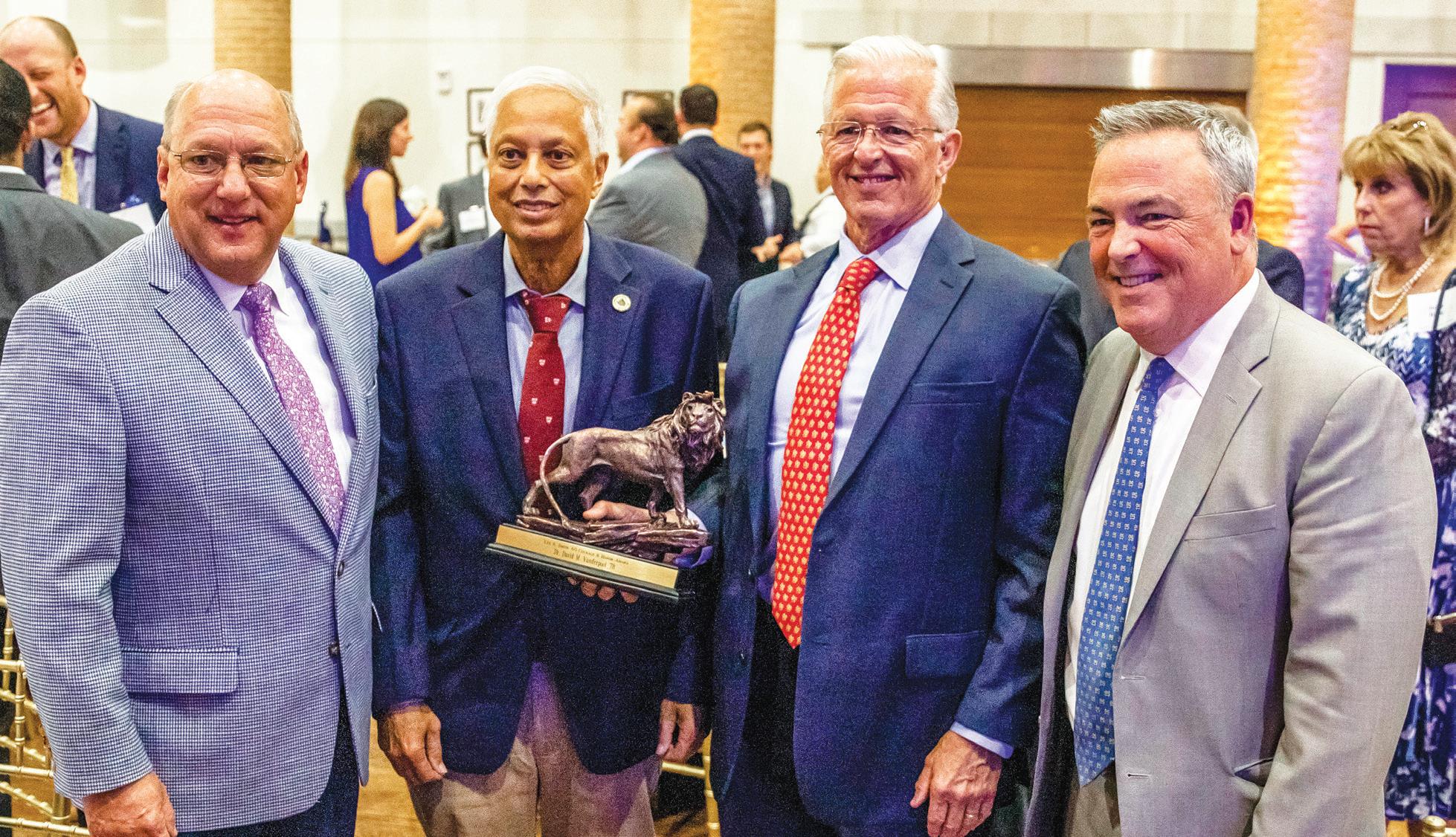

The first recipient of this award was Dr. David Vanderpool ‘78, an alum who dedicated his life to humanitarian aid when he founded his company LiveBeyond. Not only was he able to receive the award, but Vanderpool was also able to connect with Upper School students during a special Upper School assembly.
This year’s recipient of the award is Matt Osborne ‘90, whose mission is to inspire men to change the world in a positive way.
“WE’RE ALWAYS LOOKING FOR NEW ACTIVITIES: WE DONT WANT THE PROGRAM TO BE RINSE AND REPEAT.”
- Jack Mallick ‘14
“Osborne has committed his life to working in public service with the CIA, and he combats human trafficking,” Mallick said. “He also helps educate young men on how to respect women and how to have healthy conversations.”
This mission was addressed when Osborne came and spoke to marksmen during special after-school assemblies. Because of his work and his close connection to the school, he will be in town for Alumni Weekend to receive this award.
Ultimately, the purpose of this Alumni Weekend is for alumni to reconnect, but the event also provides current students the opportunity to hear from alumni and to see the example they are setting in the world.
“We want our boys to make the world a better place,” Mallick said. “We wanted to honor people who have spent their lives and dedicated their personal lives to that craft.”
ALUMNI WEEKEND SCHEDULE
Thursday, April 18
Alumni Golf Tournament hosted at Cowboys Golf Club. The event is open to both faculty and the returning alumni.
Friday, April 19
Back to School Day Alumni will return for Chapel, special alumni panel discussions, the Golden Lions Luncheon and classes with faculty.
Spring Alumni Dinner This year’s dinner, hosted by the Alumni Association will host and honor several distinguished alumni and faculty and people retiring this year that have impacted the school community greatly. These include:
Steve Winn ’64
Distinguished Alumnus Award
Matt Osborne ’90
Lee S. Smith ’65 Courage & Honor Award
Tom Walker III ’73
Alumni Service Medal
Ross Crawford ’12
Young Alumni Service Citation
David Baker
40 Years of Service
Marietta Johnson
50 Years of Service
Saturday, April 20
Campus Family Cookout Alumni and their guests are invited to campus for lunch, campus tours, interactive demonstrations in the Makerspace, activities for kids and other fun events for those on campus.
Class Reunion Dinner A must-visit event for alumni, alumni reconnect with their classmates and catch up with old friends.
celebrated, visit smtexas.org

“Oh, I’m everywhere.”
Jason Leneau Assitant Head of Upper School

“Sometimes I get a tardy just to feel something.”
Neil Yepuri Junior

“Talent can actually beat hard work when hard work refuses to work hard.”
Wyatt Loehr Junior
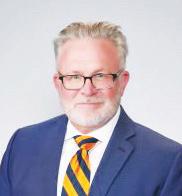
“What if Zach Olyan became the President of the United States?”
Scott Hunt Photography Instructor Overheard 10600 at
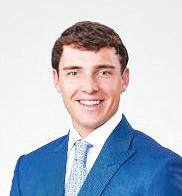
“50% of the time, it works every time.”
Jimmy Francis Senior
L ife | R e M a R ke R Friday, April 19, 2024 | P age 17
information on Class Reunions that are being
ALL SMILES Scott Jolly (Assistant Headmaster for External Affairs, left), Lee Smith ‘65 (left middle), Dr. David Vanderpool (right middle), and David Dini (Headmaster, right) smile while celebrating Vanderpool recieving the Lee Smith ‘65 Courage & Honor Award.
For
HITTING THE LINKS Alumni play in the Alumni Golf Tournament.
PHOTOS / COURTESY DAVE CARDEN
PHOTO / COURTESY DAVE CARDEN
Peculiar pets bring campus companionship
Around the school, animals are an essential part of campus life. Science instructor Ryan Brewer’s snake, Kobe, and the fish in the McDermott-Green Science Building’s student study area augment the learning experience.
 By Matthew Hofmann and Christian Warner
By Matthew Hofmann and Christian Warner
In the stressful science building with students yelling and studying, a natural peace can be found swimming in circles. Three aquaria sit beside a noisy hub for students, housing fish species from far corners of the world.
Director of Environmental Studies Dan Northcut ‘81 manages most of the life centers on campus like the greenhouse and fish tanks. Because the school brings a company in to clean the tanks, he simply oversees the well-being of the fish, which includes checking the surface of the water to ensure that the pumps are oxygenating.
“I feed them three times a week, and then a company comes every other week to do cleaning, changing filters, maintaining the chemical balances and so forth,” Northcut said.
The fish tanks were first built in 2002, only a few years after the environmental science program started. A family donated several fish tanks to the school, so the department decided to put them to use.
“We always struggled with trying to get something out in that lobby area that was interesting,” Northcut said. “We (decided that) we could set up these tanks as different ecosystems. And for a long time before the renovation of the building… we had four aquaria (of which) two were saltwater and two were freshwater.”
After the renovation, one tank was lost, containing the Texas native fish. Currently, the three tanks hold saltwater and freshwater fish. The two outside tanks hold the saltwater fish, and the middle tank holds the
freshwater fish. They feature species from the tropical saltwater regions to the rocky reefs.
“We don’t want to put more stress on the environments,” Northcut said. “So we try and get them from places like the Dallas North Aquarium where they can source them more locally from people who are breeding them for the aquarium. The species themselves are from lots of places: the cichlids are all South American and Central American, and the reef fish are all tropical fish.”
Northcut hopes that the fish impacts not just the aesthetic of the science lounge but also the mood of anyone who walks by.
“Having an aquarium and having fish is kind of calming,” Northcut said. “It’s nice to have an aspect of nature inside.”
Down the hall from the fish tanks and inside a classroom, another reptile is in a tank, but rather than swimming, it slithers. Biology instructor Ryan Brewer is the caretaker of the school’s snake, a relatively new addition to campus.
While Brewer is the current owner of the snake, he has not always been the primary caretaker. Originally purchased in 2019, the snake’s original owner was Dr. Bonnie Flint, a former Science Instructor.
The snake was a core part of Flint’s classroom experience and was something that all the students loved. Under her ownership, the snake actually had a different name—Bartlebee. However, in 2021, Flint left the school, leaving the snake’s future uncertain.
But Brewer decided to step up and move the large tank into the back of his classroom, giving the snake a new home and, with his students’ help, his new
Faculty members show off cooking talent in club
By William Kozoman
A starter can get a batch of sourdough going, but it can also do so much more. For Head of Middle School Dean Clayman, history teacher Michele Santosuosso and Director of Academic Success Julie Pechersky, that’s exactly how they began pursuing their passion in cooking together. Over the course of this school year, the three have worked together to try new recipes while also leaving a noticeable mark on the campus.
Their journey into cooking began with an attempt to make sourdough bread. It proved to be quite difficult for the three, but it also allowed them to bond together.
“It’s a somewhat intensive endeavor,” Clayman said. “We started baking every weekend, and then we realized that we were baking far more than our families could eat at home. So we decided, ‘Hey, what if we each bake something over the weekend and then bring what we have baked to school at the beginning?’”
As the three of them began making more and more food, they began sharing their work on the campus. It quickly became a hit.
“People enjoy having some things for snack on a regular Monday,” Clayman said. “We call it CHEW, which stands for the Carbohydrate Exchange Window. On Sunday evening, we send out a CHEW text to everybody to let them know what we’ll be bringing; we’ve kind of evolved to having a different theme each week.”
Clayman’s weekly texts for the latest CHEW themes are often filled with puns and clever wording to add an extra level of spice. Santosuosso has become a big fan of it, as have other faculty members who look forward to a new message every week.
“Mr. Clayman is a genius,” Santosuosso said. “And he comes up with the most amazing puns. Mr. Hunter always has some sort of comment; he always has something to say.”
Santosuosso, beyond working in CHEW, also spon-
name—Kobe.
“My second year, the sixth graders were trying to come up with names, but then we settled on Kobe, which is the same name now,” Brewer said. “Its full name is Kobe Duncan Garnett because all three of those basketball players joined the Hall of Fame at the same time.”
Kobe, a melanistic corn snake, is part of the genus Pantherophis and belongs to a family of snakes that also includes the common rat snakes found across the south and east of the United States.
Kobe has become an extremely valuable member of the classroom, with the students running into the class and going to his large glass tank in the back of the class before even putting their stuff down.
“Before they even greet me, my sixth graders go back and look at Kobe,” Brewer said. “Just checking to see what he’s doing, which is usually nothing. But they are always asking, ‘Oh, what is Kobe doing?’ and things like that.”
Not only have the students enjoyed the presence their reptilian friend brings to the classroom, but teachers and parents alike have also visited Brewer’s science classroom for the sole purpose of seeing the snake.
But ultimately, the biggest impact is seen in the lives of the students. Kobe’s presence in the classroom has brought a source of joy to the kids.
“Kobe is just good fun to have in the classroom and they are just always wondering what he is doing,” Brewer said. “The sixth graders just love him.”
sors the Elevated Cooking Club for students. She looks forward to her two groups potentially cooperating in the future.
“Since Elevated is my club, that would be great,” Santosuosso said. “We have teachers involved in this; Mrs. Perchersky is always one, and Mr. Clayman is always one.”
As the group looks forward to the future, they hope to expand even more and continue to explore their love of cooking.
“I guess the only thing I would add is it has become readily apparent to me how food can be a vehicle to connect people,” Clayman said. “And as much as I enjoy seeing people look forward to consuming some of the things that we’ve baked, it’s spending the time chatting together which I most enjoy, and it was an unexpected benefit of starting a sourdough starter that the thing that it did mostly was connect with my colleagues more so than ever and I’m very much grateful for that.”
GO FISH The fish tanks are a familiar sight for many students who study in the McDermott-Green study area.
P age 18 | Friday, April 19, 2024 R e M a R ke R | L ife
PHOTO / COURTESY DAVE CARDEN
Rock band captures spotlight
Fueled by their individual talent and shared passion for rock music, the group views their performances this year as only the beginning of its musical journey, setting its sights on greater goals for the years to come.
By Kevin Ho and Kayden Zhong
The band’s instruments gleam beneath a spotlight as students and faculty members stream into Decherd Auditorium. The atmosphere buzzes with curious anticipation. Once the usual announcements are made, the bright ceiling lights dim over the audience and Smurb (rock band) strides onto the stage, stationing themselves at their instruments.
Wyatt Loehr sits at the drumset. Calvin Yates and Deven Aurora steady their guitars. George Hoverman and Jackson Williams hold their mics. As the drums set the rhythm and the bass guitar’s deep energetic chords ring through the hall, the performance kicks off.
Smurb's origin was sparked by the collective pursuit of musical interests. Inspiration struck junior vocalist George Hoverman in the spring of last school year. As a long-time member of the choir, he was part of a select group that represented the choir at the annual Independent School Association of the Southwest (ISAS) Arts Festival. There, along with classmates, he enjoyed performances from students all across the southwest, but one especially stood out to him.
“One of the subsections was a rock band, and I thought, ‘why doesn’t St. Mark’s have one of those?’” Hoverman said. “We have so many talented kids, so we could totally do that. So last year myself, Wyatt Loehr, Aadi Khasgiwala '23 and Calvin Yates met a week before school ended and just were like, ‘let’s play a song,’ and it was so much fun.”
Afterward, the band made a group chat and looked to continue with the practices. However, with Khasgiwala’s departure, they needed to find another guitarist to fill his shoes. Fortunately, this issue was quickly resolved: freshman Deven Aurora promptly stepped up to the position.
Aurora grew up loving the guitar. When he was younger, his father, a big rock fan himself, often played concert albums at home from bands like AC/DC, and Aurora regularly danced across the living room to the music.
“When I heard the guitar player, I would think, ‘Whoa, that guy is amazing,’” Aurora said. “I started playing the guitar when I was 6 or 7, but I didn’t take practice very seriously until I was ten. I tried the trumpet briefly, but I wasn’t very good at it, so I decided to stick with the guitar.”
Guided by the musical style of artists like Tim Henson of Polyphia and Tosin Abasi of Animals as Leaders, Aurora experimented with new techniques as well as music composition.
“The guitar is a relatively new instrument, so there are a lot of new techniques that are still being pioneered,” Aurora said. “I’ve learned how to play the guitar like a piano with two hands–playing chords on one hand and lead lines with the other."
Aurora also learned how to play more Hip-Hop and EDM songs as well. Learning these guitar songs has been something that Aurora grew to love and appreciate.
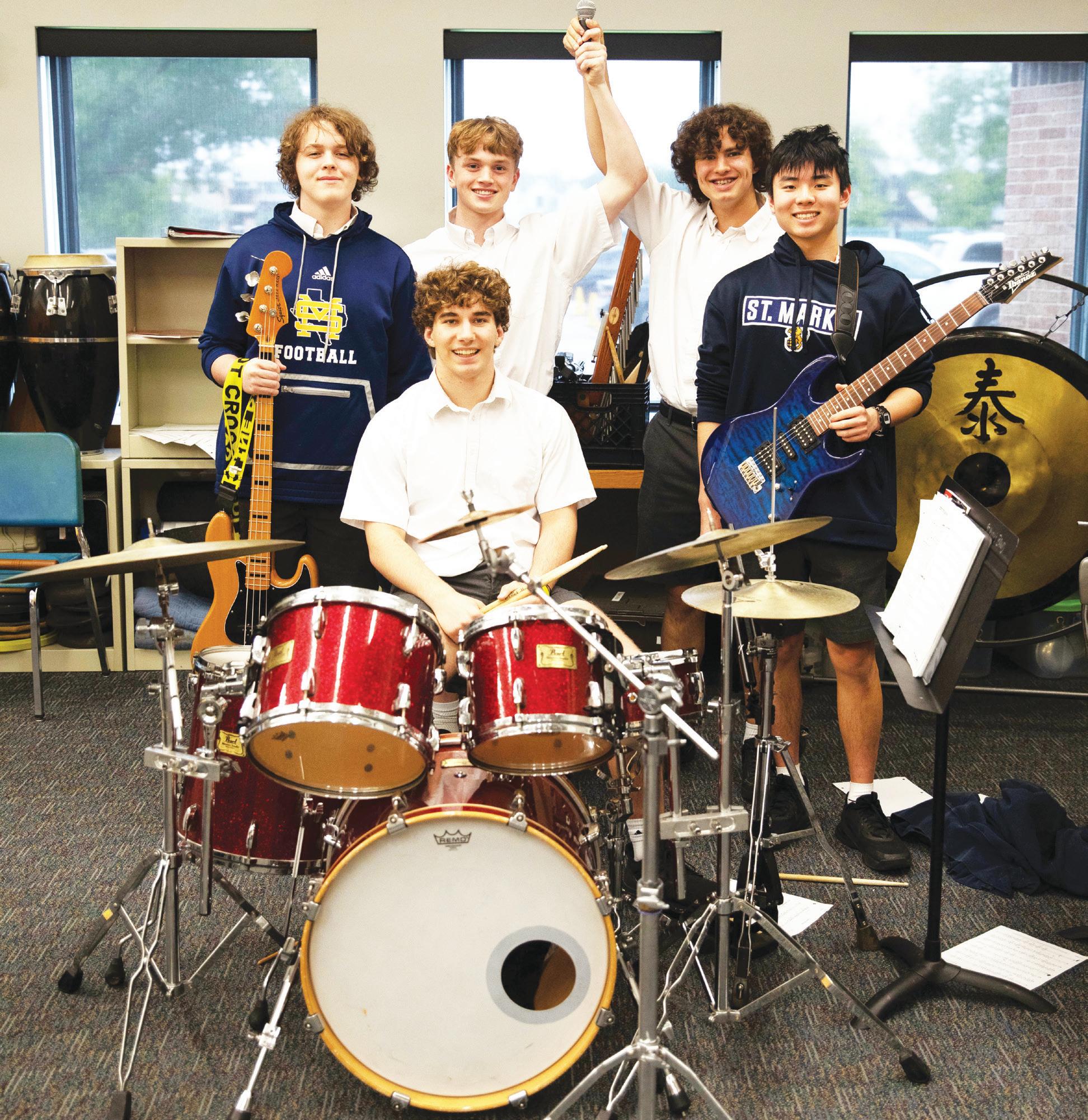
ment, sparked by the help of former Band Director Tim Hicks. He doesn’t regret his decision, and his involvement with Rock Band is no different.
“My favorite part about this band is the way we can bring people from different grades together and then perform for them,” Yates said. “We have a performance at ISAS, and hopefully we can get people together from other schools to come out and support us. It brings joy.”
Usually, any band’s backbone is the drums. During a performance, all other instruments are fine details that flourish upon the drummer’s steady rhythmic foundation — this is junior Wyatt Loehr’s job as the drums specialist.

Similar to Yates, Loehr primarily expresses his gratitude for Hicks’ mentorship, which also began at the onset of Loehr’s musical career as a band member.
Loehr said. “Before it would always be people singing over a YouTube track or the guitar or piano. I think live music is something that not a lot of high schools get to have, so it’s a unique experience.”
As practices went on, Hoverman and the rest of the band realized that there was a limit to how much they could do with only one vocalist. Hov-
“I THINK MR. HICKS WAS PROBABLY MY BIGGEST INFLUENCE BECAUSE HE TAUGHT ME THAT IT'S BETTER TO BE LOUD AND WRONG THAN QUIET AND RIGHT.”
-Wyatt Loehr
“There are two things that I especially like about playing guitar. One, it gives me an outlet. School is stressful, and when I’m angry, I can sit down and play guitar for hours. Secondly, outside of St. Mark’s, the guitar provides me with talking points when I’m talking to people, and it gives me a community.”
Like other traditional rock bands, Aurora’s role as the lead guitarist requires support for his melodies — in every performance, they’re accompanied by junior Yates’s bass guitar.
Joining the school as a band member in Middle School, Yates took a musical path, branching out from his prior experience as a pianist. This new journey with the bass guitar is one of fulfill-
“Mr. Hicks was probably my biggest influence because he taught me that it’s better to be loud and wrong than quiet and right,” Loehr said. “That helped me a lot when I had to have a leadership role that I have now in the band, Blues Club and Rock Band.”
Loehr believes that their performance during the Upper School assembly showcased their collective talent and served as a significant milestone in the band’s development. Prior, the group would regularly perform at Coffeehouse, and although they received much acclaim at the event, Loehr still looked to expand.
Coffeehouses were repetitive to him, so with the addition of a rock band to the school, he feels that there is now a new special flair to the mix.
“I think more people have been excited for Coffeehouses now that there’s a more serious, live music aspect compared to what it was for a while,”
erman knew his voice wouldn’t last long enough for him to sing at Coffeehouses, and without a backing vocalist some of the songs the rock band were playing just didn’t sound as good. So, he pulled in fellow chorist junior Jackson Williams.
“One day, he told me, ‘Hey, go to a practice sometime,’” Williams said. “So then I sang with them, and now we have two singers in the rock band.”
In the future, Loehr hopes to expand the band’s roster and continue to add school-wide events for next school year, as well as performances beyond the school community. In addition, he envisions the group’s legacy as a place for leisure and creativity.
“I’m hoping that Rock Band sticks around when I go to college,” Loehr said. “Right now it’s all juniors and then Deven, who’s a freshman, so hopefully it sticks. The band definitely helped me make some friends, and it’s helped me find a place to be.”
L ife | R e M a R ke R Friday, April 19, 2024 | P age 19
JAM SESSION Rock band members junior Calvin Yates (top left), junior George Hoverman (top left center), junior Jackson Williams (top right center), freshman Deven Aurora (top right) and junior Wyatt Loehr (bottom) pose after an energetic afternoon of practicing together for future performances.
PHOTO / TIGER YANG
Deven Aurora Freshman
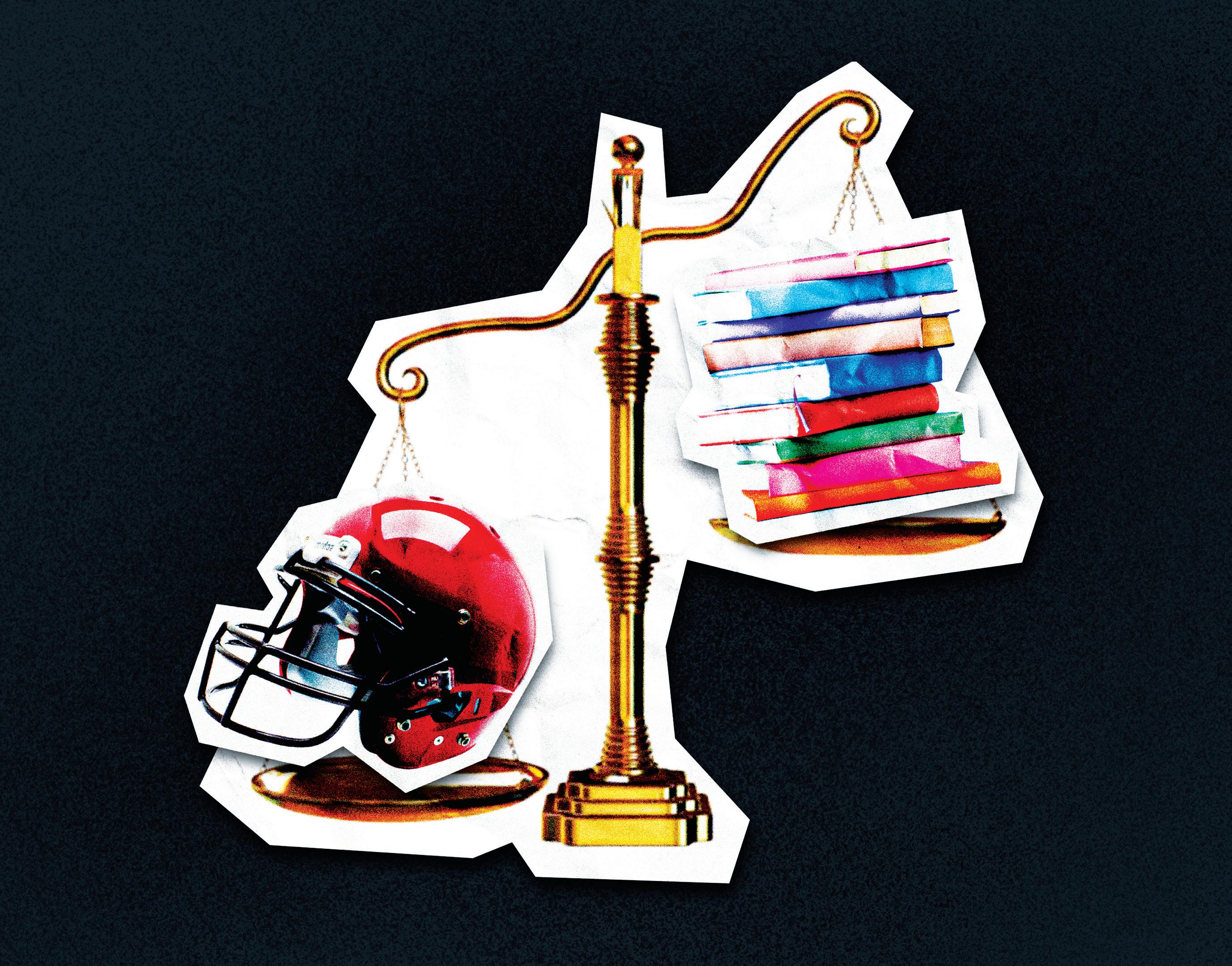
Navigating the challenges of educating the “whole boy”
Students have to juggle schoolwork, extracirrculars, sports and fine arts, while still trying to save time for family and friends.
He places first in track.
He achieves all A’s.
He has founded clubs.
He has played in Carnegie Hall.
He is — the whole boy.
The concept of educating the “whole boy” draws inspiration from the Renaissance period, specifically the ideal of the Renaissance Man, who is adept in the arts, sciences and anything else that piqued his interest. This educational standard, rather nebulously, encourages student growth across a number of fields ranging from athletics to fine arts and foreign language — aiming to cater to every aspect of the aptly-called “whole” boy.
While this approach holds merit, especially within the context of the wider world, its implementation leaves much to be desired.
In an ideal world, time wouldn’t be a constraint, allowing students to seamlessly balance hours dedicated to foreign languages, studying, athletics, fine arts and a myriad of clubs and extracurricular activities, all while getting adequate sleep to maintain their health. But like the Vitruvian man, this schedule often only exists as a theoretical concept rather than a practical reality.
In the practical world, everything has a trade-off. Time spent studying is time that could have
been spent exercising or networking or sleeping. This concept is known as opportunity cost and severely limits the extent to which the “whole boy” can be achieved.
Within the real world, the idea of the “whole boy” is rendered impossible by the frequent demands of daily schedules. Each choice made to enhance one area of development invariably impacts another, creating a constant balancing act for students.
Beyond the logistical challenges, the school itself inadvertently sets barriers for students. One of the most glaring issues is the frequent scheduling conflicts among various extracurriculars such as robotics, athletics, fine arts, journalism and regular schoolwork, which often overlap and compete for students’ time. During the Independent Schools Association of the Southwest (ISAS) fine arts festival, varsity games were held, thus putting pressure on students to either play or attend the fine arts festival. Considering the festival only takes place for three days, it could be possible to schedule games outside this period.
Additionally, during spring break, many students were discouraged from travelling with family to attend to both academic and athletic events. While these activities are incredibly important

to growing into a well-rounded man, the school should help facilitate time for students to rest and spend time with family. Better communication between students, coaches, teachers and administrators regarding important events could better avoid making these scheduling conflicts and allow breaks to be more of a true break and offer respite from the rigorous workload.
The school’s commendable efforts to educate the “whole boy” could be further enhanced with some minor policy tweaks that allow students greater freedom to pursue their interests. Still, it’s important to acknowledge that a certain degree of pressure is not only inevitable but also beneficial. This level of challenge serves as an important experience, helping students to prioritize their commitments and manage their time effectively. These are crucial skills that will serve them well beyond their school years and into adulthood. While in college, students often have to choose between studying or pursuing extracurriculars. By refining the balance between reducing unnecessary burdens and maintaining constructive stress, the school can better prepare students to navigate the complexities of life with resilience and adaptability.
Page 20 R e M a R ke R Friday, April 19, 2024 Student Newspaper of St. Mark’s School of Texas 10600 Preston Road Dallas, TX 75230 214-346-8000 EDITORIAL BOARD Editor-in-Chief Zack Goforth Managing Editors Nolan Marcus, Grayson Redmond Digital Editor Ben Adams Editorial Director Aaron Augustine Focus Editors Linyang Lee, Dawson Yao Photo Editor Zachary Bashour Design Director Noah Cathey SECTION EDITORS Issues Arjun Poi Hilton Sampson Academics Oliver Peck Joseph Sun Life Matthew Hofmann Akash Manickam Sports Lawrence Gardner Neil Yepuri Assistant Digital Editor Will Clifford Head Writers Vikram Singh Eric Yi Staff Tejas Allada, Weston Chance, Joshua Goforth, Chris Guffey, Kevin Ho, Michael Jimenez, Rohan Kakkar, Ronit Kongara, William Kozoman, Winston Lin, Doan Nguyen, Christian Warner, Andrew Ye, Kayden Zhong Adviser Jenny Dial Creech Headmaster David Dini Audience The ReMarker is intended for the students, faculty, staff and alumni community of St. Mark’s School of Texas. Press run is 4,000 copies, with more than 2,600 of those mailed out to alumni, courtesy of the school’s offices of External Affairs, Development and Alumni divisions. Opinions and Editorials Editorials represent the views of the Editorial Board and are not necessarily those of the Board of Trustees, administration, faculty or staff. All personal opinion columns, bylined with the writer’s name and photo, represent the views of that writer only and not necessarily those of the ReMarker, Board of Trustees, administration, faculty or staff. Online www.smremarker.com Instagram: @remarkernewspaper Reader Involvement The ReMarker encourages reader input through guest columns and story ideas. Contact the appropriate editor for suggestions. Letters to the Editor Letters to the editor are welcome and encouraged. They must be typed, signed and not exceed 300 words. Submissions are not accepted. Membership The ReMarker maintains membership in the Columbia Scholastic Press Association, New York City, NY; National Scholastic Press Association, Minneapolis, MN; and the Interscholastic League Press Conference, Austin.
PHOTO ILLUSTRATION /
GOFORTH
FINDING BALANCE Students often face challenges to balancing school work, extracirrculars and fine arts, which inhibit the pursuit of the “whole” boy ideal.
JOSHUA
Embracing simple joys and successes
Finding wonder: embracing the beauty of curiosity
 Dawson Yao Focus Editor
Dawson Yao Focus Editor
A couple of months ago, my sister approached me, asking for help to a math question she was having trouble with at the time. Being the (doubtfully) good brother that I am, I accepted, eager to draw upon my supposed well of knowledge to assist, and was prepared to offer an lengthy explanation to her problem.
But in my haste, I rushed my process, and instead directly spit out the answer. And almost as quickly as she had entered my room, my sister left, content with the bare-bones number from our brief conversation.
It was almost as if she just wanted the answer.
It was almost as if she couldn’t care less about nuanced explanation.
It was almost as if there was no wonder: no drive to learn about the fundamental components that made the answer possible.
There was, however, a drive to get her grade up.
As our system currently stands, there’s quite obviously a necessity to solely focus on the numbers. All students, including myself, have done things by the book, flipping through SparkNotes and slideshows alike to reach that illustrious A. And what consequentially becomes lost from people like my sister, myself, and others, is that sense of wonder.
That sense of wonder that comes from a true appreciation of the things that allow things to be.
That sense of wonder that can come from admiring a detailed literary analysis, an airtight sports play, or the magnificent expanse of the Pecos wilderness.
That sense of wonder that comes from appreciating beauty.
In today’s competitive environment, our schedules are jam packed - we’ve left no room for anything else. Everything is done with the intention of efficiency, and with the desire and a goal for external goods and satisfaction.
PERSONAL COLUMN
Appreciating life beyond cosmic milestones

I think it’s pretty fitting that my time here started with a partial solar eclipse in sixth grade and ended with a total one just before graduating.
Back when I was in sixth grade, I always thought this was an indicator of my future success. I was going to be the star (sorry) tennis player, perfect grades and everything in between.
Now, I wouldn’t say that expectation has disappeared, but rather it just changed. Instead of pursuing the “perfect” route (get good grades, go to a good college and make a lot of money), I’ve realized success comes internally.
My sixth grade year, when I thought of becoming a prodigious tennis player, was the time I first picked up a baseball. Within a year, I put down the tennis racket for good.
Life has a funny way of subverting even the most perfectly laid plans — and since life can’t follow a play, success can’t either.
Recognizing this has reframed my definition of success; instead of relying on external markers (grades, money, prestige, etc.) I’ve come to value the internal satisfaction that comes from pursuing hobbies and interests I actually care about.
Success is living in the moment: the time I spend playing MLB the Show with my younger brother, finding new albums on Spotify, and yes, even the late nights in the journalism suite racing against deadline.
It's easy to, wait scratch that, it's really easy to get caught up in the rat race. But as I look towards my first year in college, I realize that, while these externalities matter, they are only a very small picture of a significantly wider puzzle.
Now looking back, it isn’t the huge, short cosmic events that color my time here. The sun rises and sets every day, and the little things stay the same. And really — that’s just the way I like it.


Sport Attendance
Attendance at home games has significantly fallen from the winter sports.
Beam Signing

With the new athletic center nearing completion, the seniors' signing of the last beam was a nice touch.
Senior Traditions
From lunch with the Dinis to senior assassin, the class of '24 is going out with a bang.
Self-coached: an unconventional path back to the soccer field
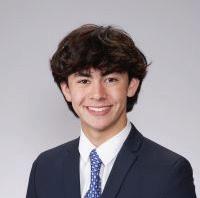 Oliver Peck Academics Editor
Oliver Peck Academics Editor
I thought I was done with club soccer when I quit after eighth grade. With schoolwork piling up as I entered high school and my hesitance around continuing to play competitive soccer, it just didn’t seem worth it. My love for the sport began to fade, and my ninth and 10th-grade soccer seasons didn’t feel very special.
But at the end of my sophomore year, I was approached by then-junior Ben Adams who, wanting to get away from the pressure of club soccer himself, had this crazy idea to start his own soccer team for fun. It seemed kind of insane, but, hoping to improve my skills, I accepted the offer.
Everything from creating the jerseys to organizing the practices was led by a bunch of high school kids. Thanks to Ben’s sweet-talking, we managed to get into one of the most compet-
itive leagues in the state. By the first practice in the grueling summer heat on Silcox Field, it already felt way different from other clubs I had played for. Coach Martin, the head coach of St. Mark’s Soccer at the time, had agreed to coach the club, so there was an immediate friendly atmosphere on arrival. The competitive stress of club soccer that I was expecting wasn’t there. Most of us didn’t even know each other, but we all had something in common – we all wanted to have fun.
In our first game of the season, nobody seemed worried about the result. Of course, we wanted to win, but everyone was more focused on simply enjoying the game. We still competed fiercely and won, but had fun as we did it.
Due to some outside circumstances, Martin couldn’t coach the team after August, so after


the first couple games, we were left with no leadership. We had entered for the Plano Labor Day Tournament, so with nobody to coach, we looked towards the tactics of none other than Ben Adams himself. It was ridiculous. With a parent sitting on our bench just so we were eligible to play, our new coach, “Gaffer Ben” as we called him, would sub himself in and out of the game, playing and making changes whenever he was on the sideline. None of us had any expectations, and we were competing against some of the best teams from around the state. Completely fueled by the comedy of the whole situation, we narrowly scraped through the group stage and somehow reached the finals on the third day of the tournament. Though we lost, the amusement that came from it was more than enough.
E ditorials | r E M ark E r Friday, April 19, 2024 | P ag E 21
COMMENTARY
Report
Card
PECOS WONDER Wonder reigns free admist the open Pecos landscape.
PHOTO / AARON AUGUSTINE
LIGHTS OUT Students gather to view solar eclipse on the football field.
PHOTO / COURTESY DAVE CARDEN
Aaron Augustine Editorials Director
Hip-hop head to head
With more and more new music coming out each month, here are two of the most impactful and popular hip-hop albums in 2024 thus far.

 By Vikram Singh
By Vikram Singh
Although Yeat’s “2093” marks his fourth studio album, it feels less like an album and more like a movie soundtrack. With a carefully crafted soundscape and mysterious ad-libs, this album is meant to be a transformative experience as opposed to a casual listen of a few tracks. With production coming mainly from the likes of Synthetic and other members of Yeat’s newly formed label “Lyfestylecorporation,” each track feels like a roller-coaster of moods.
Take the second track of the album “Power Trip” for example: the song starts off with a set of melodic keys repeating the same few notes with two layers of Yeat’s voice harmonizing with one another. Then seemingly out of nowhere, but somehow, still in a smooth manner, the mood of the track becomes much darker. A deep growling bass and a violin that seemingly fluctuates from playing in and out of key dominate the instrumental whilst Yeat’s vocals take center stage. Following the bass and the violin, the drums fill in the rest of the instrumental. This makes up almost the entire track until the last forty-five seconds, where the instrumental suddenly switches to a beautiful soundscape featuring large and harmonized chords, birds chirping in the background and background vocals from Childish Gambino.
This track is just one example of not only the impressive soundscape and concept this album takes on, but also the versatility of Yeat and his ability to cultivate new sounds as he sets himself apart from others in the industry and establishes his place as the artist leading this generation’s new sound.
Moreover, this album showcases features from some of the largest artists in the industry, with Drake, Future, and Childish Gambino all making their own cameos. Upon its initial release, the track “Breathe” was the most popular track off the album; recently, however, the track “If We Being Real” has been gaining popularity, reaching over a million streams a day in recent weeks.
If you are looking for a complete piece of music and a transformative experience with a scenic and rich soundscape, Yeat’s “2093” is the perfect choice.
By Vikram Singh
Metro Boomin and Future’s “WE DON’T TRUST YOU” is truly an authentic classic from one of the most acclaimed hip-hop duos in the last decade.
Releasing his first album in over a year, Future teams up with legendary hiphop producer Metro Boomin to deliver the quintessential trap album.
Future’s lyrics and eerie vocals perfectly convey the main message of the album while blending perfectly with Metro’s timeless production. Along with beautiful production and having a full concept, the line-up of features on this album is of all-star caliber. With features from Playboi Carti, The Weeknd, Travis Scott, and Kendrick Lamar, these artists provide a more dynamic piece to each track they are featured on, with each artist providing their own memorable verses and adlibs.
My personal favorite track on this album is “Ain’t No Love” due to it’s high-quality production reminiscent of some of Future’s older work from his 2015 album “DS2” such as “Blood On the Money,” which both feature production from legendary hip-hop producer Zaytoven. The classical grand piano combined with Zaytoven’s signature bell work together to create a new yet strikingly familiar and timeless sound.
The most notable song on this album, however, is certainly “Like That,” the sixth track on the album. Featuring production from Metro Boomin’s own interpolation of an early 2000’s hip-hop classic “Everlasting Bass” by Rodney O and Joe Cooley, Kendrick Lamar’s energetic flow and delivery on his verses as well as the shots he takes at the other two major hip-hop artists Drake and J. Cole have made this song one the most popular on the album.
Although this album is a classic piece of hip-hop, some tracks on the album seem slightly mundane after listening more than once. Some tracks also seem like they drag on for too long, which certainly ruins the replay value of certain tracks.
If you are looking for a classic Future album with familiar trap production, look no further than "WE DON’T TRUST YOU".
L ife | R e M a R ke R Friday, April 19, 2024 | P age 22 REVIEWS
9.5/10 8/10 WE DON’T TRUST YOU FUTURE AND METRO BOOMIN Classic Trap 2093 YEAT A Dystopian Haven Release date: Feb 16, 2024 Yeat AVG monthly listeners: 20,735,489 Album total streams: 799,248,115 Data from Spotify, Billboard, KWorb, collected April 13, 2024 Release date: March 22, 2024 Future & Metro Boomin combined AVG monthly listeners: 124,736,320 Album total streams: 324,310,000 (first week) ALBUM COMPARISON BY THE NUMBERS
Breaking barriers in business
Fred Perpall has had a remarkable rise to success, leading multiple billion dollar organizations such as Beck and the United States Golf Association. His commitment and dedication have not only influenced those around him but those around the nation.
By Lawrence Gardner
The first CEO of Beck without the family name. The first African American United States Golf Association president.
A pioneering leader.
Board of directors at Fedex, Starwood Property Trust, Dallas Medical Resource and Triumph Bancorp. Distinguished member of the Dallas citizens council.
An involved leader.
A man of strong faith. A father and a husband.
A loyal leader.
Fred Perpall has made his mark as a leader. But, his leadership development didn’t begin at the helm of a billion dollar company or as the face of the United States Golf Association.
“I worked in the kitchen of a cafeteria,” Perpall said. “By serving and looking after tourists, it becomes pretty ingrained that you have to be attentive to the needs of others.”
With his serve-first mindset, Perpall jumped into the world of architecture, joining the construction company Beck. Holding on to his childhood lessons, Perpall was able to work himself through the ranks and establish himself as a leader. While his perseverance and discipline took him far, his biggest break came from the guidance from a special mentor.
“Peter Beck helped me see a life for myself that I couldn’t,” Perpall said. “After 14 years of competing hard, working hard, doing it with a high standard and a high level of integrity and being open to being mentored; I was appointed in my late 30s as CEO of Beck.”
As the CEO, Perpall has worked on and developed numerous projects. One relationship he holds close is with the school. Beck and Perpall have built numerous buildings on campus including the Winn Science Center, Centennial Hall and the upcoming athletic complex.
“Because we have worked with St. Marks for so long, we feel very close,” Perpall said. “Our chairman spent time there, and everyone at Beck highly values this relationship. Many of our team members reside in close proximity to the school, further solidifying our bond over the years of collaboration.”
In his time as the CEO, Perpall continued to develop his leadership. Throughout the ups and downs, Perpall has discovered the key ingredient for success: Compassion.
“I think leadership is always about other people,” Perpall said. “My leadership style is about concern, carrying passion for other people’s outcome. If I help them get where they want to go, in return I always find that I end up going where I want to go.”
But, Perpall didn’t always go where he wanted to go, sometimes he went where he needed to go. For him, the next destination was a place where he noticed a lack of diversity: The United States Golf Association. Perpall decided to be the change.
“The USGA journey was indeed a lengthy and challenging one,” Perpall said. “It involves significant investment in the game, dedicated service as a board member and undertaking demanding committee assignments.”
While Perpall was fully committed to the USGA and continuously put his best foot forward, the ulti-

mate decision lay in the hands of his peers.
“I believe they placed their trust in me due to my unwavering passion for the game, extensive efforts to grow its reach and finally my commitment to helping others thrive in the game,” Perpall said.
Through his role as president of the USGA, Perpall aims to not only motivate participants within the golf community but also to reach out and inspire individuals who may not feel a strong connection to the sport.
“As the first Black president of the USGA, I hope that when young kids that look like me study the game of golf, they see someone who looks like their dad or their uncle,” Perpall said. “I want them to see themselves in a game that is so important in the United States.”
Perpall continues to be a pioneer in the game of golf, tackling not just racial issues, but another vital aspect of inclusion as well.
“It’s pricey,” Perpall said. “I believe the cost of golf keeps a lot of regular Americans out of it. I would like all kids to have the opportunity to interact with golf regardless of their economic situation. Just because we come from different places doesn’t mean we cannot thrive and excel together.”
While the effort and time required to excel in the role of president may appear daunting at first glance, for Perpall, it is anything but that.
“My dedication to golf stems from a genuine love for the sport, making the hard work feel natural and easy,” Perpall said.
As Perpall has continued to achieve remarkable success and make a national impact, the mindset he had back in that kitchen cafeteria has never left.
“Greatness really is your capacity to serve,” Perpall said. “If you can keep a good disposition, be grateful for the good fortune you vied and give some of that back to other people through service, then you’re going to have a great life.”
NOTABLE BECK PROECTS UNDER PERPALL:
Track team puts together another record-breaking performance
By Rohan Kakkar
The track team collectively broke more than 51 personal records (PRs) and won the Bradley V. Urschel (BVU) track meet on April 6. This event was started in 1997 by St. Mark’s and named after Bradley V. Urschel ‘79, who excelled as an athlete during his time here. However, the event has not occurred since 2019 due to COVID complications and construction conflicts for the past few years, but it finally restarted this year at Hockaday.
Led by Head Track & Field Coach John Turek, the track team dominated the competition and produced a staggering amount of PRs. This meet is one of few each season hosted by the school, so Turek and Hocka-
day Head Track & Field Coach La’Boris Bean working extremely hard to prepare for all elements of the event to ensure a successful meet.
“I literally spent eight hours on Friday setting up for Saturday,” Turek said. “And, (Coach Bean) and I still had to set up throughout the day on Saturday.”
As one of the last meets before SPC Championships, and the team’s performance helped bolster spirits and confidence heading into the championships on May 2 through May 3.
“Saturday was a big boost for us,” Turek said. “We’re training really hard right now, and we’re not peaking at all. We’re training for all the events because with our schedule, there’s only one meet that matters, and that is SPC.”
While SPC may be the only meet that matters to the team in terms of standings, the BVU meet holds a much more significant meaning in the school’s history. Urschel was a stellar three-sport athlete in football, basketball and track & field and eventually pursued football and track at Princeton. However, a terrible traffic accident left him paralyzed, but despite that, he continued to work hard every day and positively impact the St. Mark’s community.
“We became very good friends after his accident, and I decided a way to honor (Urschel) was to name the event after him,” Turek said. “It was our 24th year because we missed four years, and it is very important to us.”
S port S | r e M arker Friday, April 19, 2024 | p age 23
PHOTO / COURTESY FRED PERPALL PIONEER Perpall is the first African American USGA president.
upscale shopping center in Atlanta anchors the Buckhead district.
in Fort Worth, the arena hosts events ranging from concerts to sporting and community events.
medical center in North Carolina will be home to the Sanger Heart & Vascular Institute.
Phipps Plaza This
Dickies Arena Located
Atrium Health This
The growth of unique sports
Students at school are constantly finding new avenues to showcase their athletic prowess. The two most recent surges in popularity have come in rock climbing and pickleball, two vastly different activities. Although these pursuits are very different in nature, students around campus are able to find enjoyment in both of them.
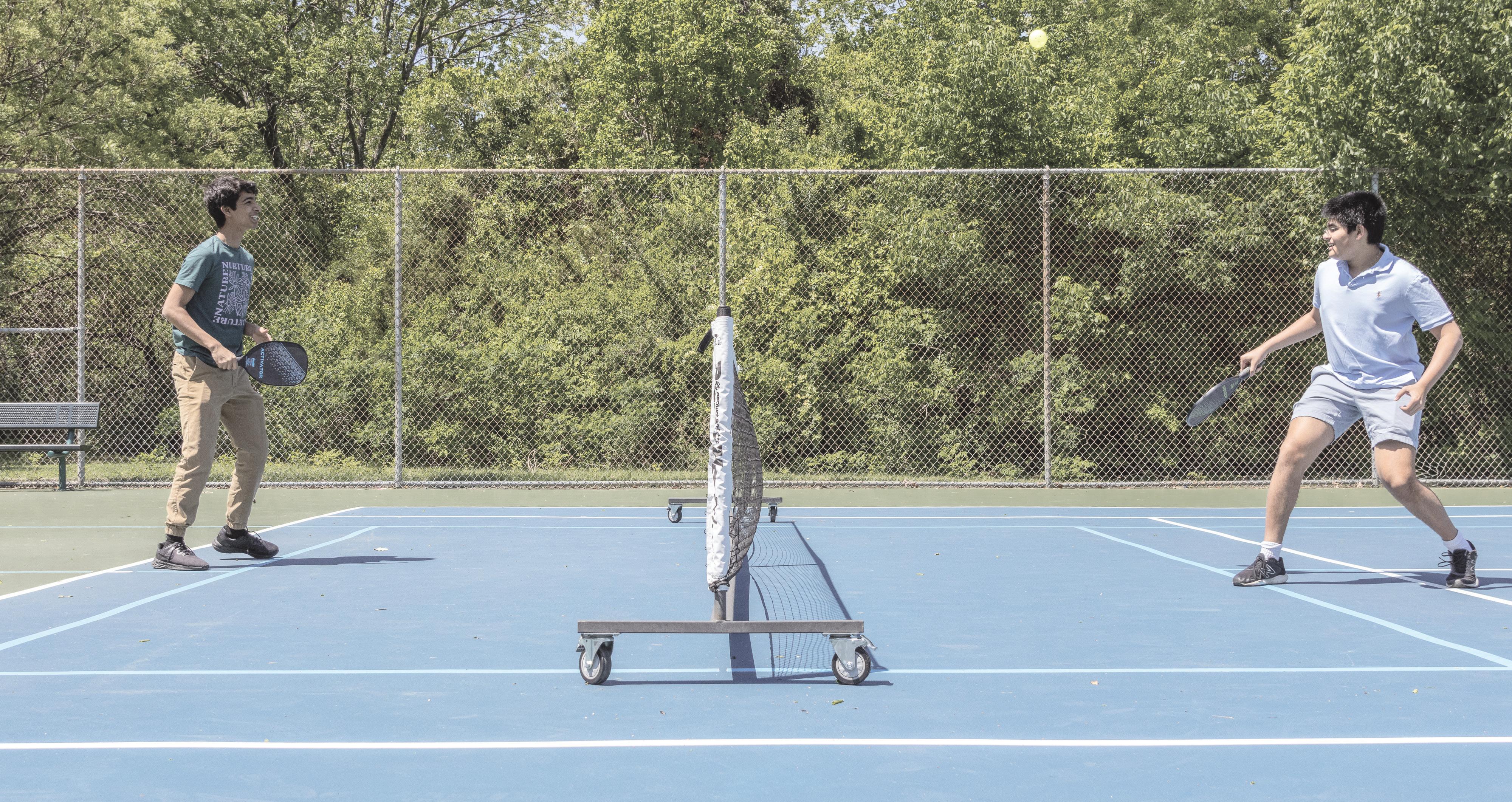 By Lawrence Gardner and Michael Jimenez
By Lawrence Gardner and Michael Jimenez
One-hundred-sixteen years of age, together on the court.
60- year old Amy teamed up with 32- year old Josh.
40 feet across from them are 17 year old juniors Teddy Fleiss and Zachary Yang.
It’s game point. Fleiss fires up a serve, but Amy returns it with a unique smoothness. Yang sprints and fires the ball back. The ball lands right on the corner as Josh attempts to hit it but misses.
Game.
The four come together, shake hands and say their goodbyes. This wasn’t their first time playing together and definitely won’t be their last.
Amy went home to talk to her son who was now a sophomore in college.
Josh went home to spend time with his wife and kids.
Fleiss and Yang went home to start their homework and get ready for the school week ahead.
Three different generations. Three different lifestyles. Three different backgrounds.
One bond over the simple game of pickleball.
For Junior Teddy Fleiss, that is what is special about the game. It brings people together.
“Pickleball is an easy sport,” said Fleiss. “It is not a very strenuous activity. It doesn’t matter how old or young you are, you can still play the game and have fun doing it.”
From his time on the tennis courts, Fleiss was able to pick the game up easily. Wanting to share his love for the game, he reached out to those around him, unaware they had also been drawn in by this unique sport.
“I was at the court with some friends I had invited and as we were leaving we saw one of our friends come with his family,” Fleiss said. “ Once we saw him, we begin to realize how many other kids at St. Mark’s enjoyed pickleball.”
In order to connect with those who shared his passion for the game, Fleiss decided to make a group chat.
“Now we could communicate with each other and play whenever anyone was free,” Fleiss said. “It was a good idea because playing with just three friends every time, if one friend can’t make it then you can’t play. In a big group chat it’s easy to get a group of four together at any time.”
One of the kids in the group chat was junior Zachary Yang. His pickleball journey began when the rest of his life was put on hold.
“I started playing over COVID,” Yang said. “There wasn’t a lot to do at the time. My mom liked to play tennis, so we just started playing as a family.”
The game of pickleball is growing at an exponential rate. It was named the fastest growing sport in America with a 223 percent increase of involvement since 2020. Yang is seeing the growth first hand through his neighborhood parks.
“It is basically impossible to make a reservation date the day of, especially on the weekends,” Yang said. “You really have to plan it in advance.”
McKay’s dominant sophomore season
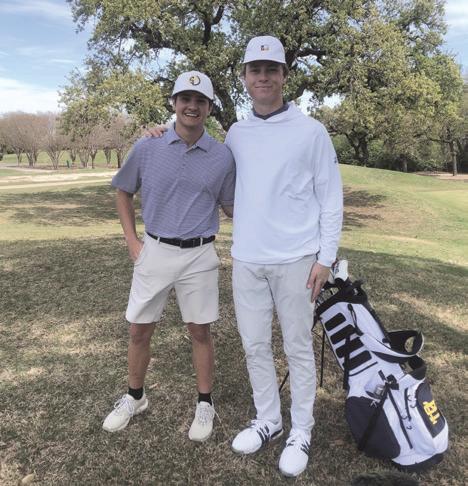
The golf team’s season is off to a strong start, following their consistent success over the past few years.
However, this year, they have found a new leader in their ranks. Sophomore Duff McKay, a nationally ranked golfer, has become a standout player for the Lions this season, with his scores improving on his already-strong appearances last year as a freshman.
However, sometimes they forget, but it always works out. At times, simply showing up opens the door for new friendships that would not have occurred otherwise.
“That’s how we met Amy,” Fleiss said. “Her friends hadn’t shown up and she asked us to play. We had a lot of fun and now whenever we see her we try to play a couple games together.”
Often at the park, Fleiss and his friends will run into other schools. While in the past Fleiss would have turned the other way, now he sees it as an opportunity.
“It’s a great way to make friends,” Fleiss said. “Sometimes we see Hockaday or Highland Park and have some school against school matches. It can get competitive but it’s always a lot of fun.”
While the game has its competitive moments, it's the relaxed atmosphere that tends to attract players. For junior Mateu Parker, an All-American decathlete, this game offers the perfect escape from the stress of his work on the track.
“Every time I play pickleball, I don’t have to think about what I have going on with school and sports,” Parker said. “I can really just enjoy and spend time with my friends. It distracts me from what’s going on.”
Interest in pickleball is continuing to grow, and the development of the game is rapidly advancing. Fleiss is optimistic about pickleball's future and the trajectory it is headed on.
“All the courts around University Park are being switched from tennis courts to pickleball courts,” Fleiss said. “The game caters to a much larger audience and I see it expanding even further.”
McKay ’s strong work ethic, which has powered him to wins and strong rounds in tournaments both for the Lions and outside of school sports, has made the difference for the team this year.
The team will continue to look to him as they gear up for an SPC title challenge this spring.
McKay's High Scores
-5 under par (67)
Tournament: Hawks Creek Invitational
Even (72)
Tournament: Jesuit Invitational
P age 24 | Friday, April 19, 2024 R e M a R ke R | S P o R t S
PHOTO / COURTESY GREG GUILER
IN THE BAG McKay poses with senior and captain Hudson Brown.
PHOTO / WINSTON LIN
IN THE KITCHEN Juniors Neil Yepuri and Arjun Poi rally with one another at Netherlands Park, which is only a five-minute drive from the school.
 By Neil Yepuri
By Neil Yepuri
Rock climbers like to keep it simple. While many sports involve complex strategies and mechanics to ensure an entire team’s success, rock climbing is different.
In that sport, it’s just the climber and the wall. Binary, balanced and natural. Climbing is a natural skill, after all. Human hands and bodies, at least on some level, are built for it.
Nowadays, rock climbing is widely treated as a hobby; gyms around the country exist for experienced climbers and newcomers alike.
But for junior Andrew Jin, climbing is much, much more.
After hearing about the sport from family friend and alumni Darren Xu ’22, Jin decided to try it out at a summer camp.
“When I learned that (Xu) was climbing, I thought, ‘OK, maybe I could do that’,” Jin said. “ I was going to the Hockaday summer camp at the time, and they offered climbing as something we could do.”
Jin’s willingness to try climbing for the first time instantly paid off.
“I remember the first time I went there, I first-tried a 5.9 grade route (usually an intermediate route)” Jin said. “I was 11 back then, and I thought ‘Huh, this is pretty cool’. So, I did it again next summer.”
Jin’s light and limber frame helped him grow quickly into the sport. Within a year of that fateful first attempt, he had joined a climbing team at the now-closed Summit Dallas climbing gym.
“The next step up from recreational climbing is a regional gym team, like Team Summit,” Jin said. “They’re just gym-specific, and the skill-base is slightly higher. Normally, you’d see some pretty young kids taught by rock climbers in their early twenties.”
Jin’s stint at the regional level didn’t last long, though. He was progressing so quickly that within six months, he was able to join Team Texas, a nationally competitive rock climbing team. Teams like Team Texas practice in gyms over a wide area, and they often feature rigorous conditioning to improve their climbers’ skills.
This leap into the climbing world and climb to the top of it took a toll on Jin’s schedule. He went from being a recreational climber to devoting four hours a week to Team Summit. Then, when he joined Team Texas, he started practicing three hours a day, five days a week, constantly trying to improve his craft.
“Looking back on it, I don’t know how I found the time to (practice that much)” Jin said. “I was just climbing so much. I got my homework done, and then I went climbing. I didn’t really care that my body was doing strenuous training, because I figured ‘you know what, I’ll be fine’.”
During his time at Team Texas, Jin worked through struggles with his time management and his physical
health – especially in relation to the sport. The only thing that didn’t change was Jin’s commitment to climbing.
“Team Texas requires that level of participation as a nationally competitive organization,” Jin said. “I was climbing so much despite my joints hurting a lot. When I was climbing, I didn’t feel it. However, when I came down, I couldn’t even hold pencils anymore.”
Due to his increasing school workload, coupled with his deteriorating finger health, Jin decided to take a step back from the team. Although this move helped heal his fingers, Jin still wanted nothing more than to be in the gym and climbing.
“The coaches were all really supportive of it, but I felt from a financial standpoint, it might have been a liability, because you have to pay to be on the team,” Jin said. “Also, from a health perspective, having Team Texas as an option meant that I just couldn’t stop myself from climbing. Even after I left the team, I’d go to a climbing gym and tell myself ‘Ok, I’m not gonna hurt my fingers’, and then I’d hurt something else.”
That constant desire to go climb has captivated Jin for the last six years of his life. For him, each wall and each designed course presents a new challenge to conquer.
“It’s weird to describe it to someone who doesn’t climb, because it sounds like an addiction,” Jin said. “For me, there’s something special about being with yourself and seeing what you can do on the wall.”
Jin derives pleasure and inspiration from the idea of this solitary competition, with him pitted against the wall in a constant struggle.
“There’s something about the atmosphere – the smell of chalk, putting on the climbing shoes, the people cheering you on,” Jin said. “But, more deeply, for me, it’s like every time I go climbing is another test of who and what I am at that moment.”
Once on the wall, Jin is completely focused and keyed in on his goal of reaching the top, willing to ignore any other circumstances to edge closer to that achievement.
“It’s almost like I’m in a flow state, but also comprehending and fully lucid,” Jin said. “It makes all pain bearable, because reaching the top of that wall is just so fulfilling.
Even after Jin left Team Texas, he still goes multiple times a week to the climbing gym to continue improving his skills and have some fun.
“I don’t try to look for things that will be painful and hurt my fingers, but I look for fun routes that I know are going to be hard,” Jin said. “When I go to climb, I look for what’s at the edge of my capability and try to see if I’m there yet.”
Although he’s no longer in competition, Jin foresees a long-lasting presence of climbing in his life wherever he is.
“I think (climbing) is going to be a lifelong experience and a lifelong pursuit of mine,” Jin said. “It’s something that I can always return to, no matter how much time I spend away from it.”
Student jobs in athletics provide experience
By Michael Jimenez
Whether it be out on the field during a football game or inside the gym for basketball, you’ve most likely seen one of your friends working the scoreboard or the chains. These small jobs that are often overlooked are something the athletic department has offered to high school students for years and are a great way to get involved with the athletic community.
“We have student announcers for our football and baseball games as well as basketball scorebooks and the chain crew,” associate athletic director Josh Friesen said.
Although most students prefer watching games from the stands, working one of these jobs is an easy way to get involved with the teams as well as earning money.
“Usually, the game is an hour and a half, and the boys are getting paid $25 a game,” Friesen said. “You get to watch some of your friends and help the school at the same time.”
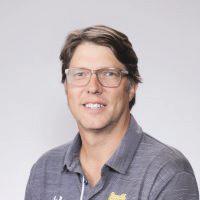 Josh Friesen Assistant Athletic Director
Josh Friesen Assistant Athletic Director
While working the chains or the scorebook may seem unappealing, there is also an opportunity for students to explore their interests by being able to use the PA system at home football and baseball games.
“We have had a fair number of guys that have gotten real world experience and have gone on to become broadcast journalists,” Friesen said. “We had a guy that was working for ESPN, a guy who was announcing minor league baseball games and another guy who became a sports anchor for a news station.”
Smaller jobs for sporting events have also landed numerous students an opportunity to work other sports related jobs over the summer.
“I’ve written letters of recommendation for guys that were looking for a summer job,” Friesen said. “Working these jobs has given an adult the ability to vouch for their ability to do basic jobs.”
Another passion that has gained popularity among the student body is sports videography. For some it’s merely a hobby done on a volunteer basis, but there is also an opportunity to earn money through the athletic department for shooting games.
“Guys have come in to talk to Mr. Lissemore and have said hey, I’d like to offer this service,” Friesen said. From there they negotiate a fee and once it’s done, they send over an invoice and present their product and they get paid more than $25.”
As more high school students are searching for summer jobs and extra ways to make money, working a game for the school is an easy way to earn money and open doors in the future.
“If you’re going to watch a game and support your classmates, you might as well be getting paid to do it and be right in the middle of it,” Friesen said.
S P o R t S | R e M a R ke R Friday, April 19, 2024 | P age 25
MOVING UP Junior Andrew Jin scales a wall at his local climbing gym. PHOTO / COURTESY ANDREW JIN
Watching sports at school: a bonding experience
 Neil Yepuri Sports Editor
Neil Yepuri Sports Editor
Three separate laptop screens, each with a different game loaded up.
Two noise warnings, both received, both unintetionally ignored.
One homogenous group, huddled around, watching in excitement and fear.
The time of day is irrelevant; the only times that matter are counting up, slowly, to 90 minutes, or down to zero.
Maybe it’s a waste of time.
I should probably have done my schoolwork.
But, that’s the magic of sports.
The 2022 FIFA World Cup was an anomaly for many reasons; however, its timing was the most significant.
Because of the summer heat in the host country, Qatar, the tournament was set to be played during the months of November and December.
What this scheduling change meant for fans in America was constant world-class soccer during the day. I’d be lying if I said I didn’t partake in a couple of watches in the journalism room, in a lounge around campus or even in a classroom — with teacher permission, of course.
But, the effect of that tournament, and that desire to watch, was palpable. People who I didn’t know, people who hadn’t shown any interest in soccer in the past, were suddenly diehard fans with knowledge of all the players. I still see those results today — that environment was so captivating that these people are still interested in the game.
And, as March Madness’s yearly excitement rolled through the nation, I saw this phenomenon again. When a nation, a state, a city, or a school are so captivated by a spectacle that enthralling, it’s hard not to watch.
Each time an event like this happens, I can imagine more than a few students violate the acceptable-use policy stated in Lion Tracks. But, every time, the connections that students are able to make across grades, interests and activities are strong.
You don’t have to play a sport or know an insane amount of niche information about it to be able to enjoy it. All you have to do is sit and watch.
I’ll never forget the times I sat with my friends or any assortment of other Marksmen, watching a team play, and enjoying the game in front of us. It didn’t matter who they were or their level of experience.
And while I’m not advocating for any violation of policy — do your schoolwork on campus, especially during those precious free periods — I think the bond formed between a group of people while watching a game is unique.
Why?
Because the game brought them together.

Sports highlights help us quickly see the best moments in a game. The art behind creating these, sports videography, is growing faster than ever, and students are quickly following along. Junior Sam Light details his experiences joining this trend.
By neil yepuri
and Andrew Ye
Film and sports are two premier forms of entertainment in their own right, especially in the digital age.
But, when they come together, their artistic potential is multiplied. The ability of a good videographer to capture the magic of sports through strong editing, storytelling and filming is unmatched.
And, in the day of the highlight tape, with more eyes on sports than ever before, being able to present sporting events in an appealing way is more valuable than ever.
Junior Sam Light’s growing career in this industry is a testament to this fact, but he never intended for it to become this big of a deal. Initially, he was just looking to do something with his time during the COVID break.
“I would just sit around and play Xbox, and I was bored and wanted to pick up a hobby,” Light said. “I was thinking about what I liked; I had always liked movies and I had always liked sports.”
So, in just seventh grade, Light picked up a camera. He started filming small tournaments at first, doing anything he could to film more often and ultimately, get his name out there.
“There were players that I’d meet at high school tournaments I’d go to,” Light said. “It was a lot of networking and getting to know people. It started with a St. Mark’s tournament in 2021, when our team was really good — we had Harrison (Ingram ’21).”
And, Light’s progression was rapid. Within a year, Light’s schedule was packed, as his work ethic and drive to succeed began to reward him.
“I was actually filming a lot more in
my eighth grade and freshman years — I was probably filming two, three times a week, every week,” Light said. “I was really hungry for experience and jobs — not even for the money.”
But, as Light entered high school, he was forced to rein in his filming availability, as the step up was proving a tough challenge. So, he had to adjust.
“As freshman year hit me, I had to dial (videography) down and find a medium between doing what I love and doing the work I have to do,” Light said. “Recently, I’ve actually found a really good compromise with that through filming a lot for athletes at St. Mark’s, because it’s a lot easier. And, it’s a good way to represent the school.”
However, Light still found time to engage in his videographic projects and make them special. In the fall of his freshman year, Light got in contact with a five-star receiver with the South Oak Cliff football team and ended up filming practices and games for the team and their social media.
“I got to know all the coaching staff, and eventually they wanted to hire me and pay me to film the team’s games,” Light said. “The money wasn’t bad, but honestly, I did it because the team spirit was something I really wanted to capture. That team ended up being the first time South Oak Cliff football won a UIL championship.”
And, although Light’s taken a step back in more recent years, he still sees himself having a strong future in videography.
“I definitely see myself continuing with this throughout high school for sure, and I think I’ll major in film in college,” Light said. “Overall, I feel like I’ve just done so many things and gone so many places that I would have never imagined when I was in eighth grade.” Light emphasizes the importance
of exposure, experience, and learning from professionals within the videographic space.
“I slowly learned that it doesn’t take one YouTube video, one book, or one article,” Light said. “It really takes going out and getting real world experience. Other videographers and photographers who had been doing this for a lot longer than me were also really helpful.”
For Light, one of those mentors was found on campus in Sal Hussain ’23.
“Sal helped me a lot — he reached out to me after one of my first edits for St. Mark’s basketball, when I was in eighth grade and he was a sophomore,” Light said. “He’s always been there for me; every time I post a video, I text it to him and he gives me feedback on it.”
Hussain began his videography journey when he was 12, and initially, just like Light, his work solely revolved around his interest in building up a visually appealing portfolio. Eventually, his work was picked up by those around him and soon spread throughout the entire school.
“It’s just something that I’ve really loved for a long time,” Hussain said. “I like to think that my film and videography has just given me the chance to celebrate other people’s accomplishments and really special moments both in and out of school.”
To Hussain, sports videography isn’t an activity that sticks to rules or rigid guidelines. Instead, it’s a way to capture the moment, whatever it may be.
“I filmed during the SPC season, and whether or not we win, we’re just having a really good time and capturing really fun moments,” Hussain said. “It’s a reminder that videography is a shared experience, and to me, that’s what photography and video is all about.”
FLASHING LIGHTS Junior Sam Light regularly attends high school basketball tournaments to film for players and teams.
P age 26 | Friday, April 19, 2024 R e M a R ke R | S P o R t S COMMENTARY
Videography highlights photographer talent
PHOTO / COURTESY SAM LIGHT
A young man’s game
Making the varsity team in any sport is an impressive feat that many dream of at all ages. To do it in two sports is even rarer. Freshman Harman Pope has done all of it and more — and he's only 14.

 ABy Rohan Kakkar
ABy Rohan Kakkar
s a 14-year-old athlete entering high school sports, making the varsity team for his school may seem to be a far-fetched dream. While more tenured athletes have years of experience and physical growth under their belts, the new freshmen and underclassmen are inherently in an unfavorable position when it comes to placement on a team.
And yet, freshman Harman Pope has achieved that feat in two sports - track and field and cross country.
The gap between both of these sports at the middle and high school levels is significant. Races are longer, and the competition is faster. Pope’s placement on the varsity team meant that he had to make adjustments on the fly as he entered high school.
“Upper School track is a lot different than Middle School track,” Pope said. “The training is much harder and you’re running more mileage. When you’re on varsity, you get what you could expect it to be.”
After settling in on the team, Pope was also able to form strong relationships with seniors on the team to help improve team chemistry and gain insight for later in high school.
“I've gotten to know (seniors) Parker Steinbrueck, Raja Mehendale, Clark Cooper and Asa McCaleb,” Pope said. “I talk to them every day, and they make the sport so much more enjoyable.”
While others may be nervous about being the youngest member of the team, Pope is confident in his abilities and knows his coaches placed him on varsity for a reason. He enjoys surrounding himself
with older members of the team who are faster than him because they help him improve his skills and set goals to work towards.
Aside from having influential team members, head cross country coach and assistant head track coach Ryan Hershner has also helped inspire Pope to become a better runner. Pope’s relationship with Hershener formed a bond that will only strengthen with time, an important part of developing a good team.
“I think when a coach puts you on varsity, and you make it known to them that you’re serious about the sport, it kind of releases some tension,” Pope said. “It can help you build a relationship with the coach as well. Coach Hershner ran in college, and he knows one of my goals is to run in college, so he knows how to get there and that is super helpful.”
While a multitude of factors are considered for a freshman’s placement on the team, Hershner believes that a freshman’s ability to ‘run free’ is a big part of the question. Unlike older and more experienced runners, freshmen typically are not as concerned about being in the top of their league, allowing them to fully immerse themselves in the sport without fear of failure.
“Sometimes some people lose faith in their abilities over the years, but as freshmen, they’re pretty pure,” Hershner said. “Just having that free mindset is something that I wish could stay with everybody throughout their high school tenure.”
Another benefit of having freshmen on varsity is the opportunity to teach them leadership skills at a young age in high school. These qualities are then de-
veloped within athletes throughout their high school career to create strong leaders and potential captains during their senior seasons.
It can be difficult to move straight from eighth grade to competing against kids that may have years more experience than them, but having good leadership in place to help set an example for any freshmen helps to aid that process.
“There’s a big difference in the speed of play, and having somebody older than you to take you under their wing is enormous in terms of what it can do for the future of the younger kid,” Hershner said. “Like I said, that kind of carefree, ‘I’m going to do what I can do attitude, because I don’t know any better, and if you have a senior leader that can help hone that in (yet) direct him in times of need that can help them learn how to play the game more effectively. As you get older, the game comes more naturally to you, but as a freshman, you may not know the ins and outs like a senior might.”
For the cross country team specifically, Hershner believes that Pope has great potential and already displays many of the skills that make up a good runner.
“Harman competes, and being competitive is step one,” Hershner said. “He gives off that presence on race day, which is what has helped catapult him to varsity. A lot of that is being coachable, having that desire to be the best that you can be and not letting anybody else mess you up.”
Water polo grows through Olympic Development program
By Weston Chance
Young athletes around the world dream of having the incredibly rare opportunity to don their nation’s colors and compete in global competitions. But for some Lions, this goal has already become a reality through the USA Water Polo Olympic Development Program (ODP).
The ODP consists of the whole scouting system where coaches decide who is selected to play on various state, regional and national teams as well as who competes in yearly international tournaments. The ODP offers events to a wide range of ages and also provides players with a platform to showcase their talents to colleges.
“Besides playing in club tournaments, the ODP is the other big thing that provides exposure as a water polo player,” sophomore and ODP participant Andrew Zhang said.
The ODP has become increasingly popular around the nation - in Dallas, many club coaches are involved with the program. Because of this, almost every water polo player on campus has participated in the ODP to some level.
“It’s completely different from school water polo because it's basically like a bunch of super teams,” Zhang said. “We have all the best players in Texas on one team, and we’re playing against all the other best players on the other teams.”
The whole feel of the ODP differs greatly from that
of school leagues, not only because of the sheer talent of the players, but also because of the spotlight the ODP provides. “There’s always coaches watching. There’s college scouts everywhere writing down notes. Everyone’s filming everything,” Zhang said. “I think it’s fun because usually water polo doesn’t get that kind of coverage, but with the development program, there’s fans watching and the stakes are a lot higher, so it’s definitely a fun experience.”
This setting forces players to learn how to perform to their best abilities despite the added pressure of constant evaluation.
“There’s definitely some stress to it, but I think it’s valuable for us to have to deal with those nerves,” Zhang said.
MASTER APPRENTICE Freshman Harman Pope poses for a picture with his coach, Ryan Hershner.
PHOTO / COURTESY HARMAN POPE
S port S | r e M arker Friday, April 19, 2024 | p age 27
ROADRUNNER Pope runs in the 1600-meter race at the Greenhill Open Track Meet on April 13.
PHOTO / COURTESY HARMAN POPE

Community enjoys total solar eclipse
On Monday, April 8, community members joined the world in basking in the astronomically-rare solar eclipse. Led by teachers in the science department, students, faculty, alumni and parents enjoyed the midday darkness. For more coverage on the solar eclipse, visit smremarker.com
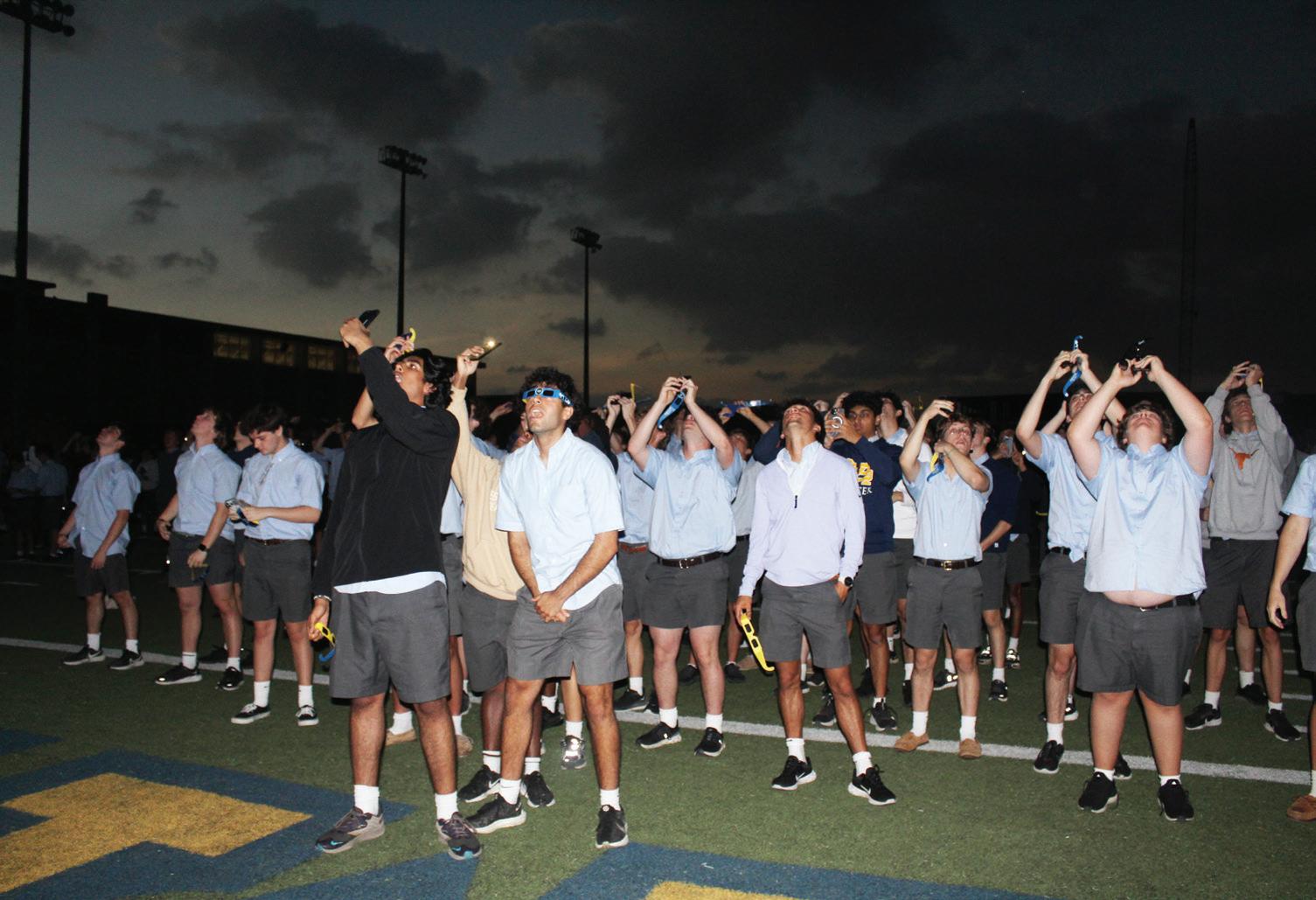
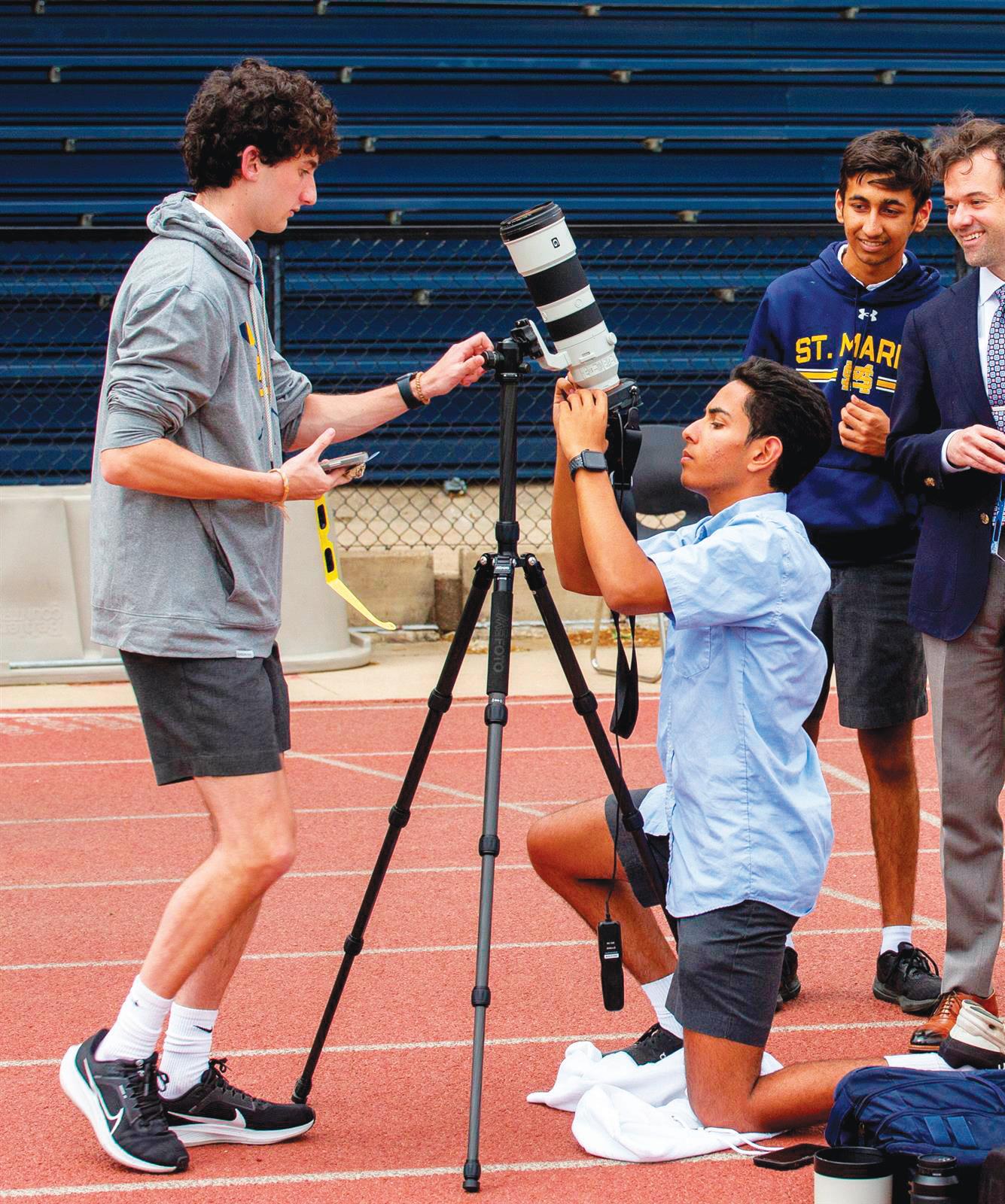


RECYCLE ME
ReMarker St. Mark S School of texaS 10600 PreSton road dallaS tx 75230 P age 28 | Friday, April 19, 2024 R e M a R ke R | B ack P age
TOTALITY For four minutes 1 o’clock hour, community members on Ruff Field and in Hunt Family Stadium watched the moon totality block the light of the sun.
1 3 2
FROM START TO FINISH 1 - The class of 2024 takes in the total darkness from the south end of Hunt Family Stadium. 2 - Junior Matthew Freeman (left) and senior Preston Ghafar (right) prepare to safely and clearly capture the point where the moon fully covers the sun. 3 - Sophomore Andrew Zhang looks at the eclipse through schoolpurchase eclipse viewing glasses. 4 - In attempt to enjoy the once-in-a-lifetime totality, a group of fifth graders lay on Bailey Field.
4
PHOTOS / WINSTON LIN, NOAH CATHEY
PHOTO / WINSTON LIN

ReMarker • • • • • • I'LL BE THERE FOR YOU The ReMarker seniors enjoy one last late deadline night. PHOTO / WINSTON LIN
Time’s up
 Grayson Redmond Managing Editor
Grayson Redmond Managing Editor
What’s the global currency? The Dollar? The Euro? Bitcoin? Newsflash economists, it’s not money at all. It’s time. After all, there’s a reason why the phrase “spend time” is used so often.
I’ve read a lot of these columns in the past few days, and I’ve found that Seniors’ usual clichéd observation is this: the moment it finally sinks in that this is Senior year, the very last go around, is the moment they step into the Great Hall at the Christmas Party.
Now don’t get me wrong, this was certainly a special experience for me, and one I’ve been looking forward to since my Senior Buddy carried me on his shoulders back in 2012. But instead of getting hit by a tidal wave of realization that the end was nigh, I walked towards the gargantuan Christmas tree with a goofy smile plastered across my face and joy in my heart that I had plenty of time left with a great group of guys.
Then, in the twinkling of an eye, I was walking down the hall in the College Counseling wing last week when I passed a whiteboard reading “50 days until Commencement!!!”
Immediately, I had that feeling most Seniors get in December: the gutwrenching realization that Father Time had me right where he wanted me.
Later that night, I started flipping through an old journal I used back in kindergarten. Near the middle, I stumbled across a page entitled “Life Goals,” where I had two simple ideas written down: “Play in the MLB” and “Invent something cool.”
Pink Floyd wrote the following lyrics: “And then one day you find 10 years have got behind you. No one told you when to run. You missed the starting gun.” And in that moment, I realized I certainly missed that gun.
You see, in my 12 years at 10600 Preston Road, the only things I invented were excuses to procrastinate my English paper, and I’m no closer to making the MLB than I was back in my t-ball days. So my time here was a complete failure then, right?
Well, not exactly. When I think of St. Mark’s, I think of the many small victories strewn about my 12-year path. I think about joyously shouting “WordMasters!” with my fourth-grade classmates every time a word we’d learned came up in conversation. I think about my favorite unit in Dr. Steg’s Humanities class, in which I learned all about my favorite jazz musicians. I think about our baseball team beating Bishop Lynch and their small army of coaches earlier this season, armed with nothing more than our team manager Sharang Vyas and a dream. In the bigger picture, a mountain of small wins can stack even higher than one large one.
So, dear Marksman, my parting wish is that you dream big! Be the next Harrison Ingram! Be the next Tommy Lee Jones! Be the next Steve Miller! Draw in crowds. Speak eloquently. Curl in that free kick. Be the next name listed in the “Notable Alumni” section of the St. Mark’s Wikipedia page.
But even if you fall short, even if you’re only remembered as another name etched into the wooden walls of Graduate Hall, even if you’re just another Grayson Redmond, I promise you’ll still turn out alright.
CHECKING BACK IN
I left to go to Highland Park, where I’ve continued my lacrosse career playing varsity my Junior and Senior year and won a state championship last season. I miss the campus’ beauty the most, especially the picturesque view of the quad in the morning after I got dropped off. I plan on attending Texas Christian University next year, following in my brother’s (Christian Shadle ‘21) footsteps. I’m going to study business.
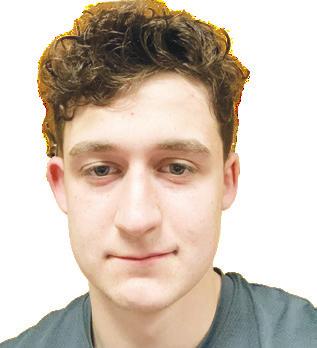
Peyton Militello
LEFT AFTER NINTH GRADE

Alex Shadle
I’m at Phillips Academy Andover right now. I’ve mostly just been playing and practicing hockey outside of school. Most hockey players repeat a grade when they come here, so I’m still technically a junior. I’m still deciding if I’m going to try to go to college for hockey or just school.

Given many former members of the Class of 2024 have already moved on from 10600 Preston Road, we got in touch with a few of them to see what they’ve been up to and inquire about their plans for the future.
LEFT AFTER EIGHTH GRADE

August Mahler
LEFT
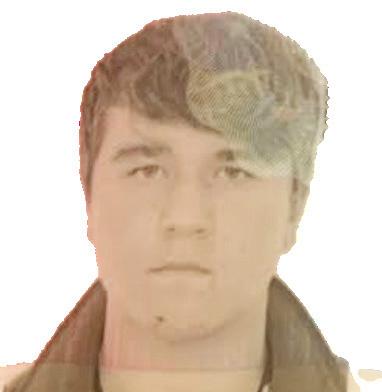
Andrew Flaskas
I came to St. Mark’s in the first grade and now I go to Westlake Academy, which is significantly closer to home. I miss the community the most, especially the friends I made, because we all really grew up together. At Westlake, I played football, basketball and golf, and I also participate in Jack and Jill and the Black Students Connection Club that discusses issues in the community and how to solve them. I plan on attending Rice University next year.
Since leaving, I’ve started a nonprofit called the Children’s Cancer Fund Teen Board which sets up toy drives and other events for children in the hospital battling cancer. I also played varsity baseball at Hillcrest and Parish and played every summer also. I miss all the friends, teachers and coaches I grew close with during my time here. I’m still undecided on college, but I’ll study business, most likely at Indiana.
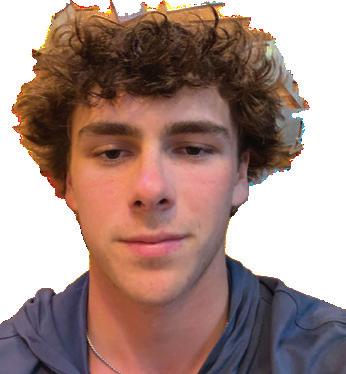


I’m coolin’.
After leaving St. Mark’s, I went to a Christian school in Tyler, Texas for a year. Then, I skipped a grade, going from sixth to eighth, and went to a boarding school in Switzerland for a year and a half. Then COVID happened, so I came back home. I went back to the school in Tyler for a year, then I went to Highland Park for sophomore through senior year. Currently, I go to the University College Dublin in Ireland, where I’m studying computer science and math.
Right now, I go to Lake Highlands and play for the soccer team there. In the fall, I plan to attend either UT Austin or Oregon where I’ll study pre-law. My favorite memories of St. Mark’s are really the simple things, like playing soccer at recess with the boys.

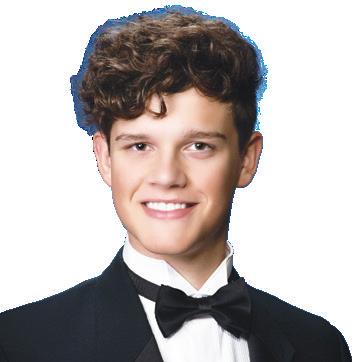
After leaving St. Mark’s, I stuck around Dallas for fifth grade and then went to Davidson Academy in Nevada sixth grade through freshman year. For sophomore year, I moved back to Dallas and enrolled at Alcuin, where I am right now. Even though my time at St. Mark’s was pretty short, I really enjoyed it. It was super academically challenging, and the small community we had was really nice. For college, I’m going to study math or physics at Notre Dame.
AROUND THE QUAD
Q: What’s your favorite memory from your time here?
“Probably the Greenhill basketball game from this past year where we came back to win in overtime. Seeing the whole community come together was really cool.”
Lucas Blumenthal 12-year Marksman
“Soccer season. All the bus trips, the ups, the downs, the conditioning no one liked, pregame meetings, funny Martin quotes, Latino music, just everything. It was like a family.”
Tyler Tang Eight-year Marksman
“Definitely when we went as a grade and rented out a movie theater. As we were devouring popcorn and joking with guys across rows, I felt our class had become a lot more connected.”
Thomas Whitehurst Nine-year Marksman
“I really enjoyed completing the leadership loops in Middle School. They really helped me shift my perspective and realize how important it was to care for those around me.”
Adam Kappelman Eight-year Marksman

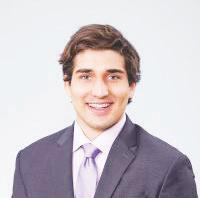 Felix Ruda
Grant Flowers
Felix Ruda
Grant Flowers
AFTER FIFTH GRADE LEFT AFTER TENTH GRADE LEFT AFTER FOURTH GRADE LEFT AFTER EIGHTH GRADE
Maddox Morris
LEFT AFTER FOURTH GRADE
Ben Foster
P age 2 | Friday, April 19, 2024 R e M a R ke R | S ENIOR S ECTION COMMENTARY
LEFT AFTER NINTH GRADE
Senior Section
Dynamic duos
All across campus there are perfect pairs who have experienced everything under the sun. From sports to debate and even fine arts, these duos have done it all.
Jimmy Francis and Benjamin Erwin
Grayson Redmond: Can y'all tell our readers how you first became friends?
Jimmy Francis: Well, we apparently went to school together when we were little, but neither of us have any recollection of it.
Benjamin Erwin: There's supposedly photo evidence of it, but we've never seen it.
JF: Yeah. Then, in eighth grade, (Assistant Head of Middle School Jason) Lange told me there was this new student I needed to look out for because he was shy, and that was Berwin. To be honest, I really didn't like him at first, but I tried to be a good person and eventually learned to love him. We've hit it off since then.
GR: You two obviously have a very close relationship on the football field being quarterback and center, describe that for me.
JF: I feel very comfortable knowing that, when I have to go under center, it's usually him and that he'll usually try his best to protect me.
BE: I take out all the bad guys. If they try to hurt either of us, I'll take care of them.
GR: In a zombie apocalypse, which one of you is dying first?
JF: Probably me. I'd sacrifice myself to make sure he's okay.
BE: That's just false. Jimmy is dying first, but it's just because he's weaker.
JF: I'm an Eagle Scout. What are
you? What are your skills?
BE: Grayson, you're not asking very good questions...
GR: Not only are you two athletic specimens, but you're also thespians who spend a lot of time in the theater between acting and improv. Tell me about that.
JF: I like making things up. I'm real good at thinking on my feet and making the best out of every situation, and you can see that on the football field and in the black box.
BE: I'm a very multifaceted guy. Much like Grayson's nose, I like to throw a curve in there from time to time. You know, mix it up a little. Be a little different.
GR: Man, this isn't about me.
Sid Bidare and Anish Guddati
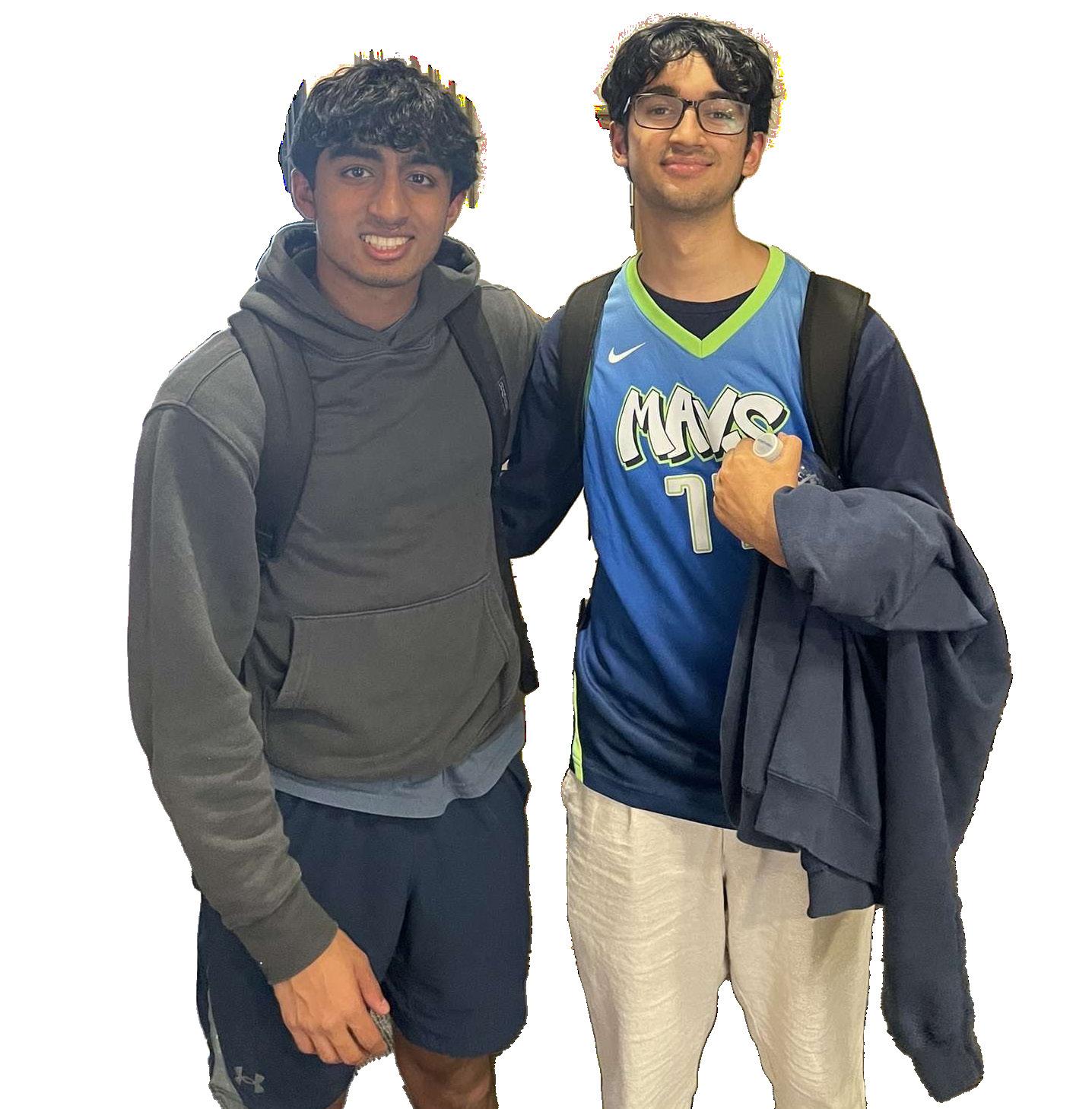
Ben Adams: How did you two first meet?
Anish Guddati: We met in freshman debate class. I first partnered with someone else, but then me and Sid partnered once, and it was love at first sight.
Sid Bidare: Agreed
BA: What makes you a great debate duo?
SB: Most other people only partner for one year in debate, but we’re kind of unique in that we’ve been together for three and a half years. We have a better sense of each other’s strength and weaknesses.
AG: Yeah, together we were ranked as a a top three team in the country at one time, and then we had a little bit of a fall off, but we’ll be back.
SB: We’re about to have our last tournament, it’s like MJ’s last dance.
John Ma and Alex Soliz
Nolan Marcus: When did you become friends?
John Ma: We met in the fifth grade, I don’t really remember the moment or how exactly we became friends, it just happened.
NM: Who is better at videogames?
JM: Alex only has Rocket League, so it's definitely me, I'm better at Fortnite, Fifa, Call of Duty and Fall Guys. Alex is a one trick pony.
Alex Soliz: Nuh uh.
JM: What else do you have?
AS: Apex Legends.
JM: You have at most 10 hours of gameplay.
AS: But I'm still better, and what about Clash Royale, Word Scapes, Pickle Peat, Rodeo Stampede and either way my ability in Rocket League completely outclasses you in any
other game.
JM: Half those games don't count but whatever next question.
NM: Who was the better captain?
AS: Me, easy. John was always so grumpy.
JM: That's too much of a generalization. I would say we both served very different roles for the team.
AS: Yeah, you were the bossy one.
JM: I mean yeah, sometimes. I was just bossy when I needed to be. Alex was the common man, the people's champion. Like Andrew Jackson.
NM: What was your favorite soccer memory together?
JM: Junior year against Awty. There was a ton of camaraderie not only among the team but
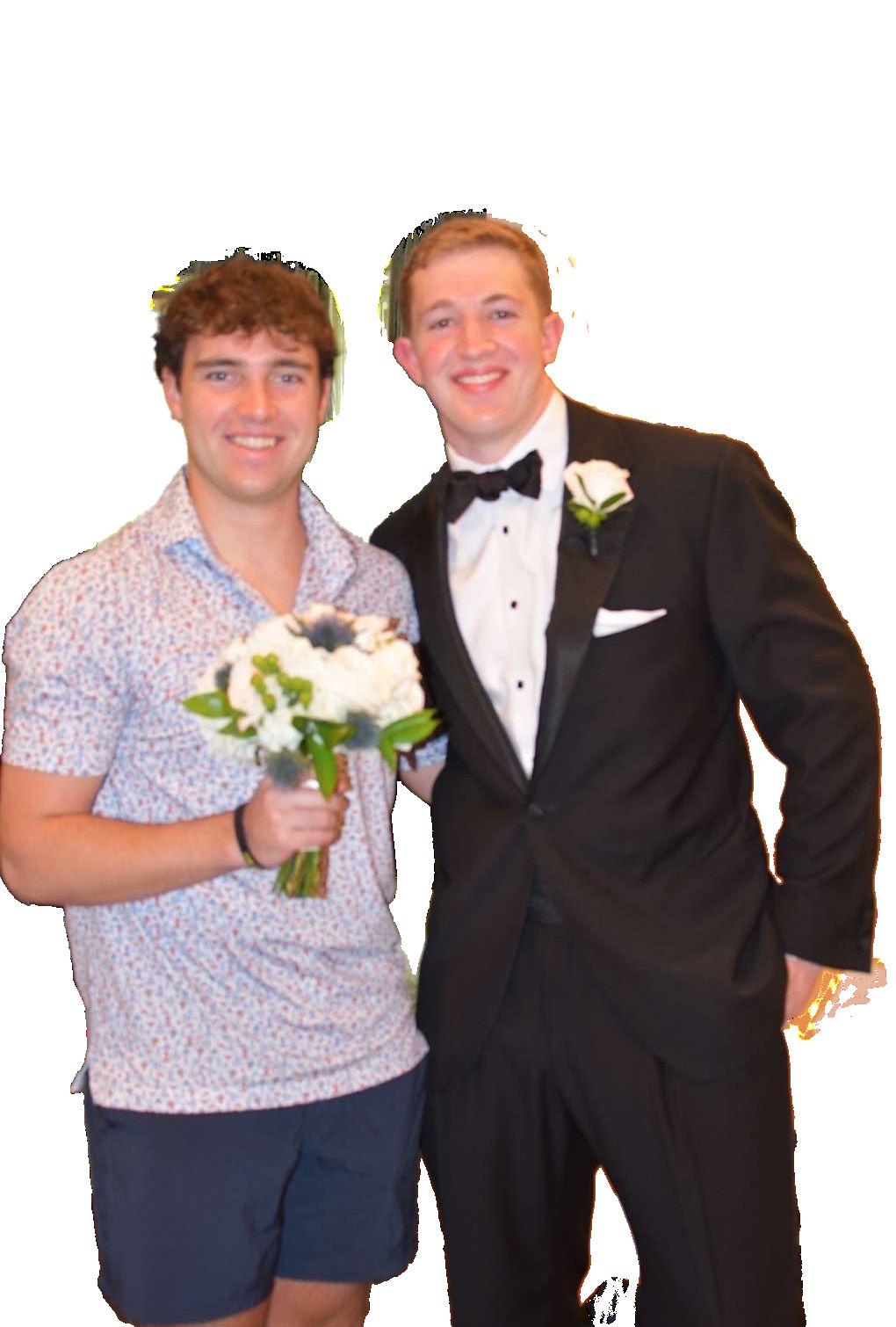
BA: Who’s the better Fortnite player?
AG: Me for sure, we did a build battle and I beat him 3-0.
SB: No, no, first of all it was 2-1. But second of all, one time I literally pickaxed this dude.
AG: I was trolling you bro.
SB: Anish you’re literally an aim assist merchant.
BA: What is your favorite memory as a duo?
SB: You can redact stuff right?
BA: Yes…
SB: In Michigan we [redacted].
BA: You’ve had a lot of classes together over the years. Who favorite teachers to antagonize?
SB: We really love to antagonize Ms. Pool, hopefully we can get three strikes soon.
AG: Chemistry with Mr. Owens was also really fun. We were
with the whole community. We showed a lot of resilience being down and coming back and the fans never wavered in their support. So when we came out of that game winners, it was an amazing feeling.
AS: Mine isn't with John but my favorite memory was scoring my first goal against TCA (Texas Christian Acadamy) or TVS (Trinity Valley School) in 2021. It was an awesome moment to score my first ever varisty goal.
NM: If you were a fortnite character what would you be?
JM: Alex is Peely with a suit because he's classy while very goofy.
AS: John is Bow Bros because his Xbox gamertag used to be massive dumpling.
lab partners and one time Sid dropped the crucible…
SB: One time Anish cracked the magnesium strip and the test tube started exploding!
BA: Since you will most likely be attending Dartmouth together next year, what are y’all looking forward to?
SB: Let’s just say we have some tomfoolery planned. Anything to add, Anish?
AG: Nope, sounds about right.
 FANCY Seniors Jimmy Francis (left) and Benjamin Erwin (right) all dressed up for a night on the town.
FANCY Seniors Jimmy Francis (left) and Benjamin Erwin (right) all dressed up for a night on the town.
S ENIOR S ECTION | R e M a R ke R Friday, April 19, 2024 | P age 3
PHOTO / COURTESY JOHN MA
CAMARADERIE Seniors John Ma (left) and Alex Soliz (right) celebrate a big win against rival school Trinity Valley 4-1 improving their
4 years debating together DEBATE DOMINATION 5 2 the duo's peak national ranking Debate Academic All-Americans Senior Section
BEST PALS Seniors Anish Guddati (left) and Sid Bidare (right) celebrate after a successful debate tournament.
The Journey
A journey that began on Aug. 17, 2012 is coming to an end. Here are some snapshots from the last 12 years. RUN
On the last day of 2022-2023 school year, the class of 2024 puts on their blue shirt for the first time, cementing their role as the leaders of the community.
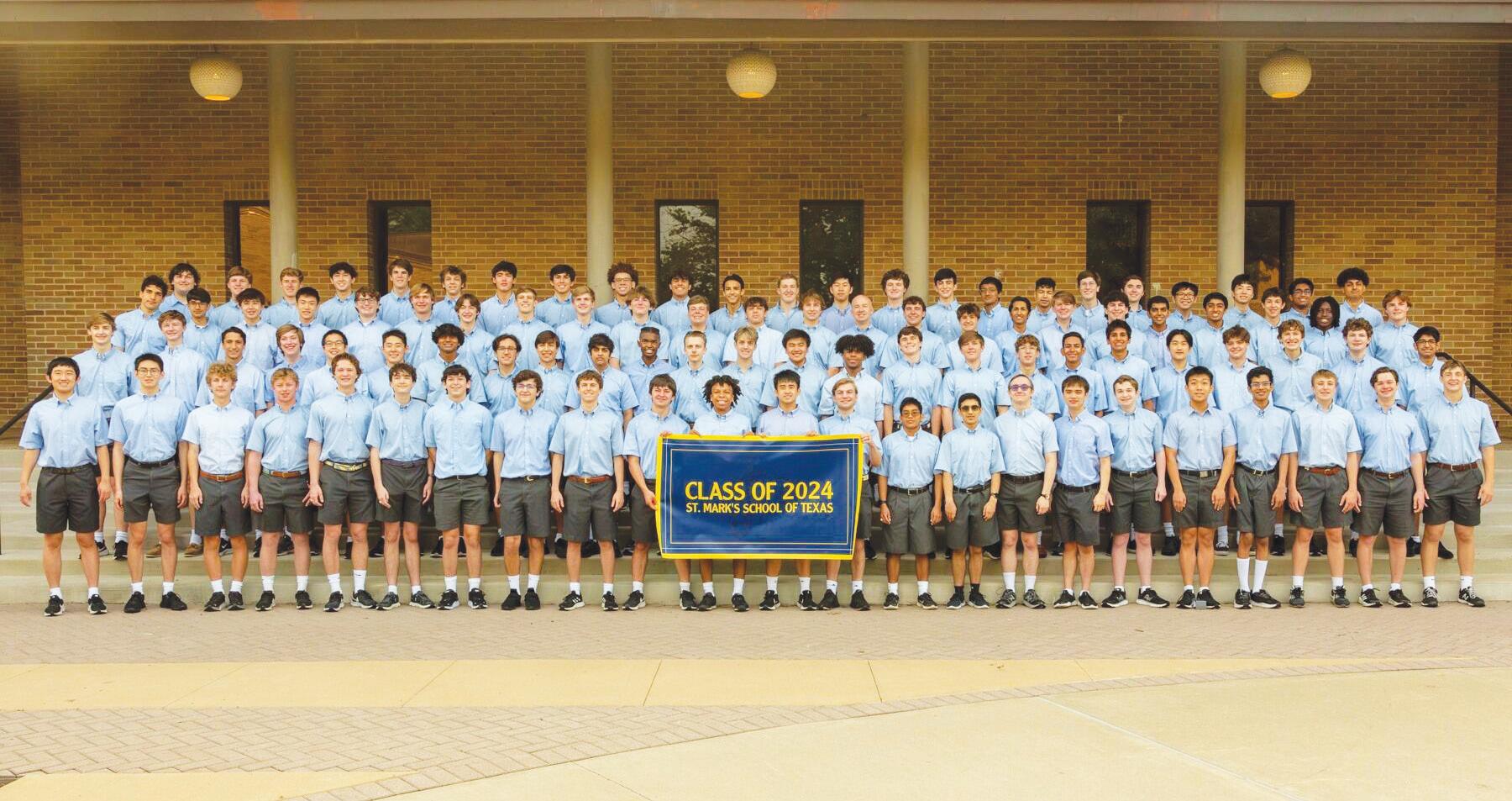
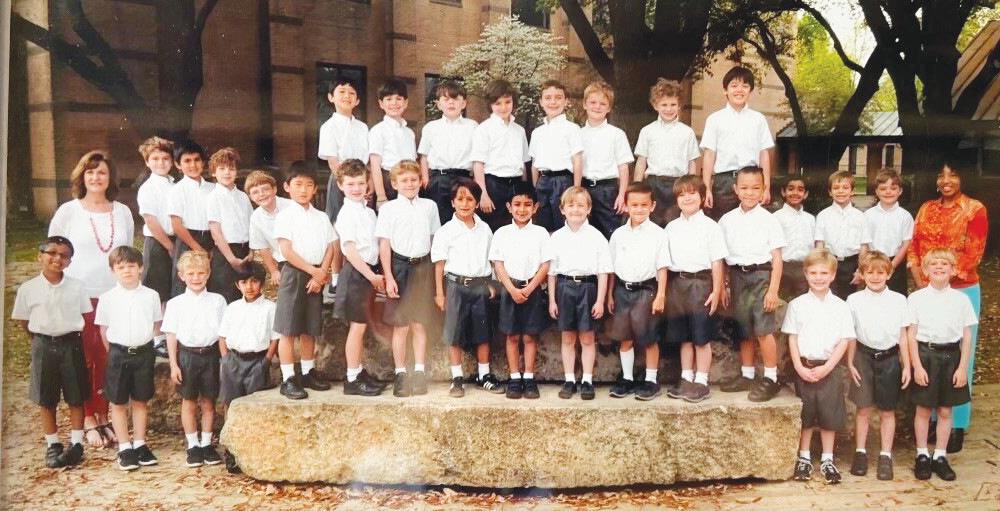
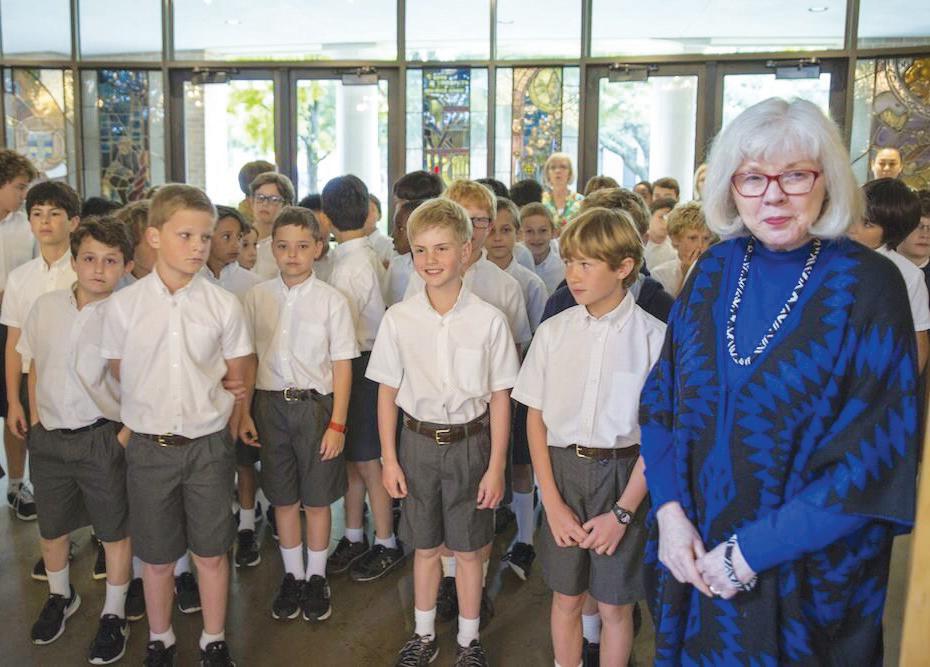


Page 4 R e M a R ke R Friday, April 19, 2023
IT BACK
FIRST OF MANY 32 boys embark on their Path to Manhood on their first day at the school with first grade teachers Kay Carrio (far left) and Valencia Yarbrough (far right).
TEAMWORK MAKES THE DREAM WORK A group of Lower School Marksmen team up to compete in a local basketball league.
SNACKS AND SMILES A group of boys (and a family friend) spend an early morning before school at McDonald’s Week in support of Austin Street Shelter.
TAKING THE NEXT STEP Led in by legendary former Head of Lower School Barbara York (right), the class of 2024 prepares to officially enter into Middle School in Step-Up Chapel.
Compilation by Noah Cathey photos / courtesy development office and seniors
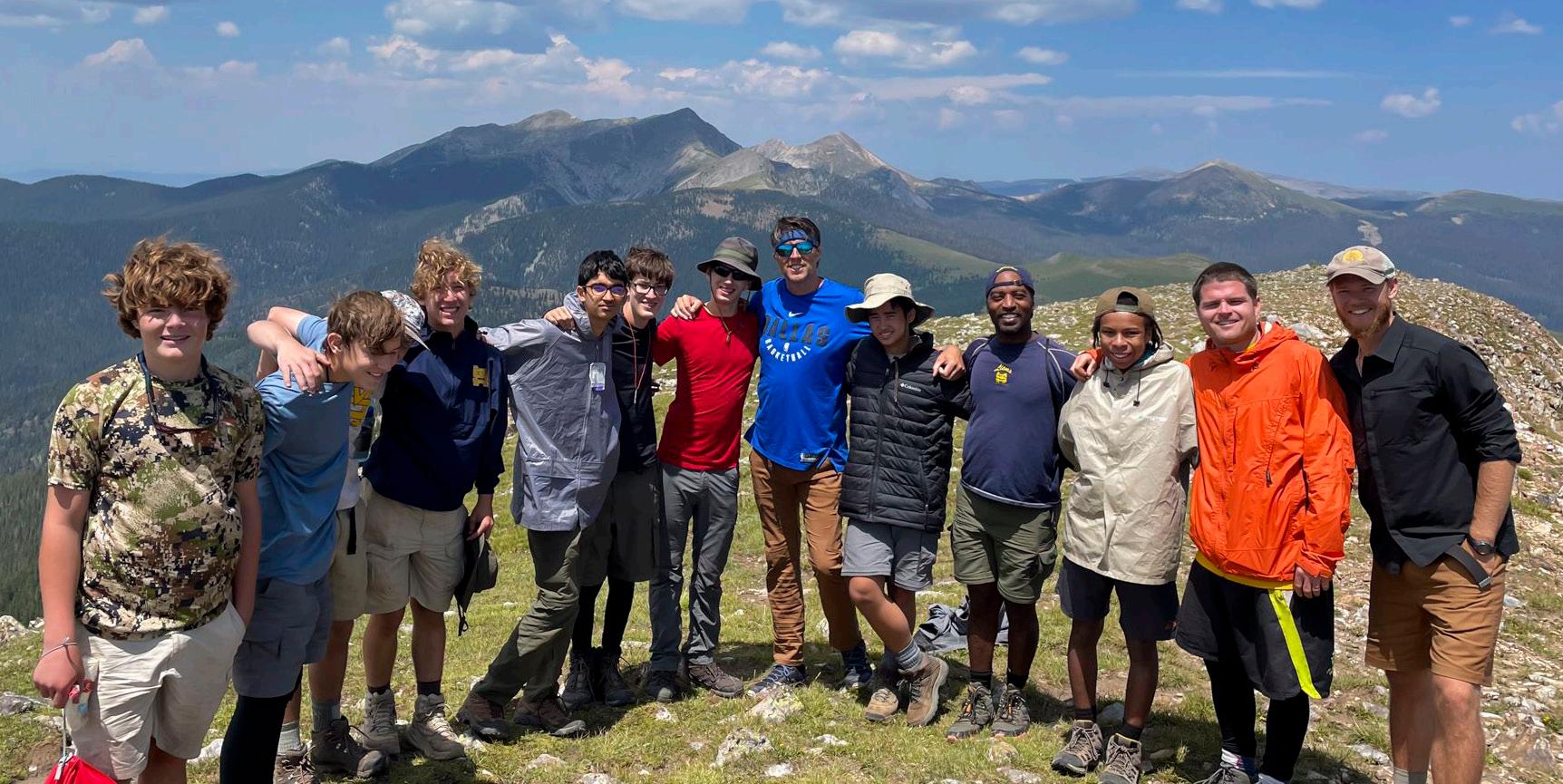
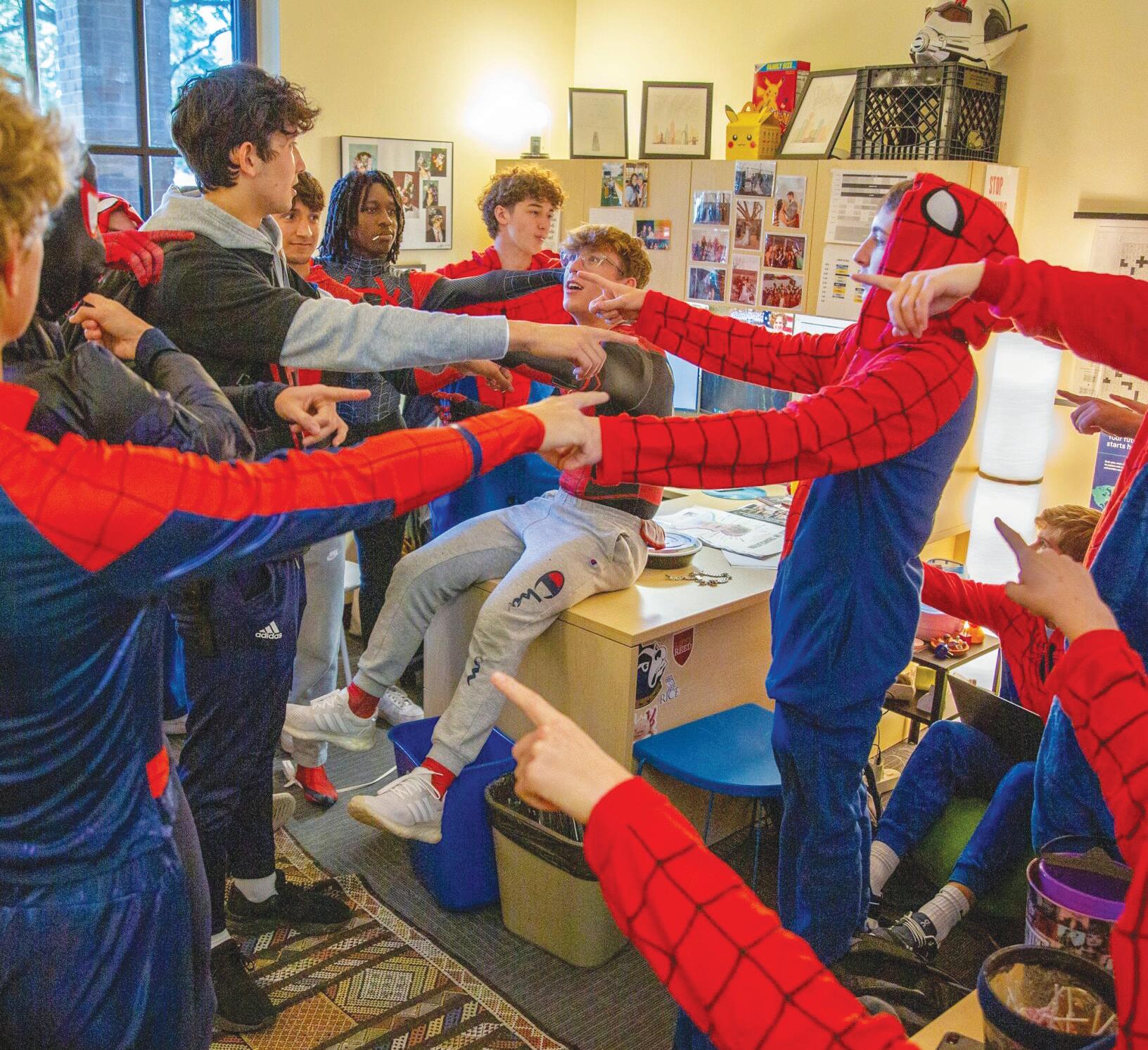
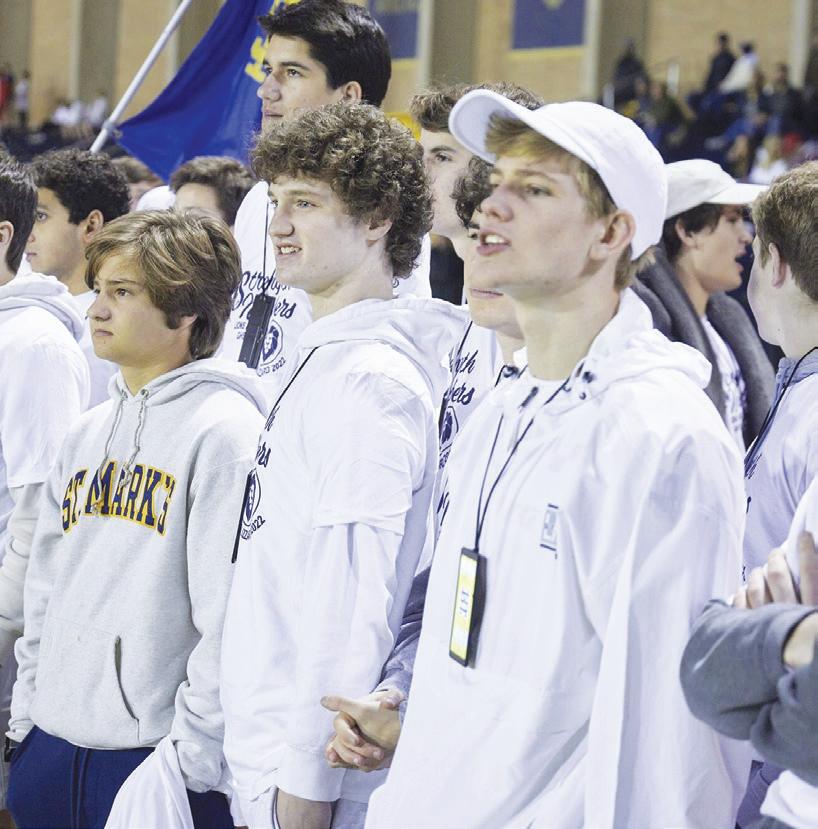




S ENIOR S ECTION | R e M a R ke R Friday, April 19, 2023 | P age 5 IT ALL COMES FULL CIRCLE
12-year
Marksmen (from L to R) Joseph Day, Grayson Redmond, Lucas Blumenthal and Ryland Ellis carry their first grade buddies on thier shoulders into the All-School Christmas party.
RETURN TO THE WILD After the hiatus forced by the COVID-19 Pandemic, the class of 2024 takes part in a delayed Pecos Wilderness Trip during the summer before sophomore year.
YOU CAN’T DO THAT! (From L to R) Hudson Brown, Alex Barrett and Joseph Day taunt opponents in the 2022 Winter Fan Blizzard soccer win against Greenhill.
FUN AND GAMES During the grade’s 2022 Space Jam-themed McDonald’s Week, Mitchell Galardi (above on left, withpaddle) takes on an eighth grade challenger on AllDay Day. Seniors (left) recreate the iconic SpiderMan meme on Halloween in 2023.
ICONIC. Nine members of the class of 2024 and one lucky sophomore (above) revive the Spurs Tradition for the 2023 Football Season. The five seniors on the Lions basketball team (left) pose for a BeReal during their presentation in the class’ record-breaking senior auction.


What lies ahead?
As the class of 2024 prepares to leave 10600 Preston Road, some beloved teachers offer predictions on what some of their favorite students will venture into after graduation.
P.E. TEACHER ADAM KAPPELMAN BY MARION GLORIOSO-KIRBY
U pon graduation from St. Mark's, Adam will more than likely get lost on his way to the University of Texas at Austin, only to be found by some unidentified government agency that will think he has some type of information because he looks like he knows something they don't. And he very well might. He is a master of disguise and a master of accents. He'll likely change his identity several times, utilizing his Russian accent, his Indian accent and the myriad of other characters he has tried to put on during my acting class.
After doing all sorts of crazy things and never revealing any information, his mother will find him, and she will make sure that he gets to Austin.
Adam will be quite successful in college, although he will likely change his major to something along the lines of Physical Education so he can learn to walk upright and stay physically balanced. College will allow this talented performer
to become more physically present and aware.
He will use this knowledge gained in college to teach other young people how to walk, jump and swim without falling down. He will start a career as a P.E. teacher, helping kids further develop their physical abilities.
Finally, in a poignant full circle moment, Adam will proceed to work for the same unidentified government agency he was abducted by on his way to college to develop programming. With Adam's leadership, they will launch curriculums in public schools that will help educate children who have struggled with bumping and running into things.
The notoriety that he will gain from such a successful program will launch him into a career of public service. He will be a trusted political adviser to the federal government in matters of education.

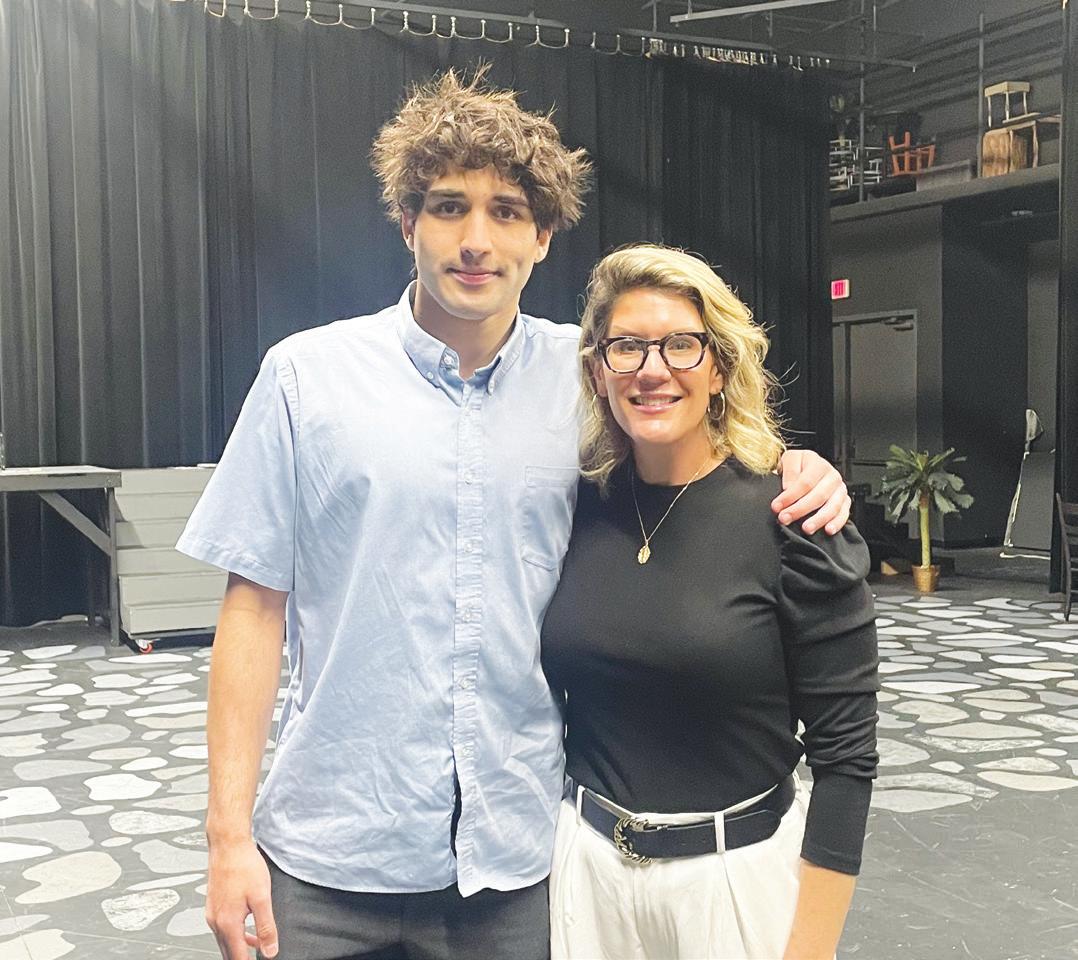
AMBASSADOR JORDAN FELDMAN BY DAVID FISHER
Where’s Jordan Feldman going to be in the next 10 to 20 years? Jordan’s the ultimate “people person,” so I imagine that whatever he ends up doing, it’s going to involve meeting and greeting, public relations, handshaking, back-slapping and – of course – cocktail partying. But don’t get me wrong! These won’t involve vacuous amusements or idle entertainment. Jordan’s the sort of guy who’ll be spokesperson for the State Department, our ambassador to the United Nations or the executive of a major K-Street lobbying outfit. I’m thinking Jordan’s interest in politics and foreign affairs won’t take him too far from
SPORTS AGENT SHARANG VYAS BY CORINDO MARTIN
I first met Sharang when he showed up late his freshman year. He missed the first week of school because he was in transit from California to Texas.
Everything was remote when I first met him, so I got to see him looking as sleepy as he does now with that wig he was sporting at that time through the screen. Since then, he’s been in my advisory, I’ve coached him on both JV and Varsity soccer and he’s been in my AB Calculus class.
Sharang has definitely been an interesting student, but when he applies himself, he is great.
I’ve actually got his future planned out: first off, I see him gainfully employed in the future. He has intimate knowledge of the training room, so I can see why he wants to study exercise science.
He will study exercise physiology until he has to
do anatomy and kinesiology, and then he’ll realize that he’s better off going in a different direction, so he’ll stay in sports medicine long enough to finish with an undergraduate degree in physical education or communications.
He will then go and get a masters, I think he’ll receive his MBA, and instead of studying sports medicine, he will become a sports agent.
He’ll be very good at representing others. If there’s someone who can tell a story, a yarn where style is more important than substance, it’s my man Sharang. That’s what I foresee.
He’ll become a sports agent, and he’ll handle the multi-million — by that time multi-billion — dollar contracts for some of our biggest future sports figures, such as Reed Sussman.

Washington, D.C. But his deep-rooted decency, sterling sense of justice and moral compass will ensure he navigates those waters responsibly, and always with the intent to be a positive impact on the world around him.
I’ll miss seeing Jordan in the halls at St. Mark’s – and not just because he’s routinely complimented me on my choice of snug-fit jeans. But I’ll look forward to meeting with him somewhere back East where we’ll hobnob with great and good, reminisce about the good old days in Preston Hollow … and I’ll still get told how well those Levi’s suit me!

PRESIDENT MITCHELL GALARDI BY MICHELE SANTOSUOSSO
My fellow Americans, today I stand before you; I am humbled that you have chosen me to lead our country for the 5th time," Galardi says to the crowd of his beloved citizenry.
Wait. I know what you are thinking: American presidents can only get elected for two terms, so how did President Galardi get a fifth term? Well, let’s go back to the beginning.
After graduating from St. Mark’s School of Texas, Mitchell attended West Point. Mitchell graduated top of his class with a major in Middle Eastern Studies and a minor in Arabic. Before he graduated, Mitchell studied abroad in Beirut. With his natural allure, charming sense of humor and occasional off-color joke, Mitchell managed to catch the attention of the Iranian President, Ebrahim Raisi. Well, after a delicious kosher meal, and a close call with one of Mitchell’s jokes: If I owned a nuke, I would name it Dr. W. Because it’s
a W. M.d, Raisi hesitated but burst out laughing and offered Mitchell permanent residence in Iran. Politely declining, Mitchell knew he needed to graduate but promised to return.
After graduation, Mitchell headed north to complete his education with a PhD from Harvard. Keeping his promise to the Iranian President, Dr. Galardi booked his next visit, and just in time as tensions were heating between America and Iran over Iranian nuclear capability. Locked and loaded with a plethora of nuclear jokes, Mitchell calmed the tensions and was hailed hero of the century.
After four extremely successful Presidential terms, America can’t get enough of Dr. Mitchell Galardi and vote him for the fifth term.
Although the Americans want a sixth term, Mitchell declines and completes his full career teaching history with his favorite teachers at St. Mark’s School of Texas.
P age 6 | Friday, April 19, 2024 R e M a R ke R | ENIOR S ECTION
PHOTO / COURTESY SHARANG VYAS
PHOTO / COURTESY MITCHELL GALARDI
PHOTO / NOAH CATHEY
Senior Section
PHOTO / COURTESY JORDAN FELDMAN
Final ReMarks
 ZACK GOFORTH Editor-in-Chief
ZACK GOFORTH Editor-in-Chief
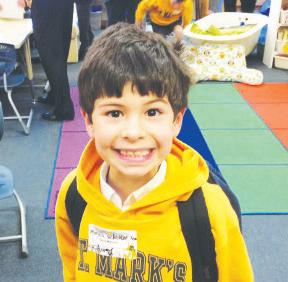 Managing Editor
Managing Editor
 Managing
Managing



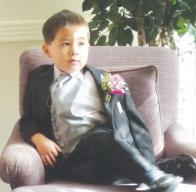
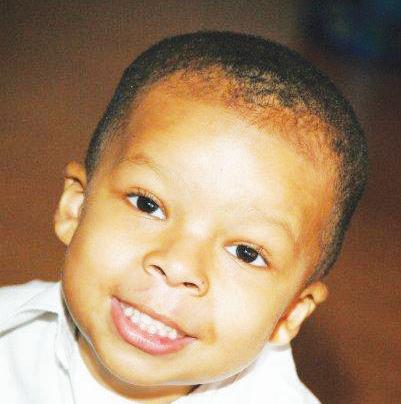 Zack Goforth
Zack Goforth
Position: Editor-in-Chief
From the staff: HEYYYY Zack. King of a rebuilding year in the ReMarker dynasty. Out of the biggest, fastest and strongest, you’re certainly the biggest. Not so fast inspector! The only records you broke this year were the number of picks thrown in the Ice Bowl and the number of awards lost to Shawnee Mission East. As the ReMarker staff’s number one goon, you always have the rookies on the edge of their seats — your ability to keep their streaks of focusing alive was truly impressive. Seriously, while you may not be able to throw a football or control your diet, you can write a good story and design a decent page. That is all. Thanks for being our fearless leadah! Make sure your response is checked by Noah before we ship the paper.
Response: Chat thanks for the kind words. When I look back on my career, I don’t think of winning awards. Instead, I think of all the inside jokes Jenny made us take out of the original versions of these and the Friday nights before work Saturday. Thank y’all for that. Noah, Ben, Nolan, Grayson, Aaron, Darwin — we might’ve had the smallest J1 class, but it was definitely the most memorable (I think it’s kind of funny, and almost a bit of foreshadowing, how Grayson and I asked Noah to “help with” our magazine project.). I guess. Looking back, I truly hope we’ve left a legacy the underclassmen can hold on to. At least I know they’ll do better in the Ice Bowl. And y’all also forgot to mention that I’m the closest a ReMarker editor has gotten to being David Goggins. Now, some of the things I asked Austin two years ago when I first had to fill out an application for the ReMarker were, “how much time does being editor-in-chief take up? Do you still get to go to football games on Friday nights and have time to study for other classes during the day?” And now I know the answer is: irrelevant.
To Hilton and next year’s staff, and anyone that may come after, know that you gotta do what you gotta do — the time will pass anyways, regardless of whether you decide to spend it cranking out pages or getting side tracked talking with seven dudes you’ve grown close with over a newspaper. But please, every once in a while, go for the latter.
Nolan Marcus
Position: Managing Editor
From the staff: 12 Years. One school. One man. This remark isn’t like the others. Is it possible to write a lead without a question? Apparently not. This is addressed to Fraser…uhh…
Nolan Marcus. Your goofy smile and friendly nature never fail to light up the journalism suite and will fit right in at Tufts. Wait, you’re going to Tufts? You’re playing FOOTBALL? Out of all the special teams and special plays, you are certainly a special player. Bro might be the first managing editor to not design a page, but your managerial skills more than made up for it. Without you, the past two years of the Sports section would have been completely cooked. Nolan Marcus, without your goofy and bright outlook on life, the journalism program would be a lot less enjoyable… and a lot less hungry. Good luck with your speech…
Response: Indeed special players make special plays which is why, once in a blue moon, when I did design a page it was special. It was so special that Grayson would always tell me to look at it again so I could revisit my masterpiece, (not so I would redo it). But I’m glad that even if my designing ability didn’t quite stack up to all time greats, I could always find another way to make myself useful. Also what’s a great newspaper without the sports section? Ben Adams, it was indeed the most marvelous experience becoming one of the creators of the greatest sports section of all time with you. Well, my dinner is getting cold so time to sign off. St. Mark’s Journalism this has been Fraser…(shoot I did it too), I mean Nolan Marcus, you’re welcome. Go Jumbos.
Grayson
didn’t see you at camouflage training.” The private responds, “Thank you, sir!” Speaking of puns, we’re pretty sure the ReMarker wouldn’t have any headlines without you. And we’re all appreciative of your elite and diverse music taste (that Zack stole), which makes design nights and work Saturday a little more bearable. We appreciate that you’ve truly helped keep us all in check these past few years.
Response: Gentlemen, gentlemen, gentlemen. I send my best wishes from my corner office at the Dialed In Factory. While I find myself becoming an unc more each day, the antics in the pubs suite never fail to keep me youthful and spry. Y’all might be delusional by saying I’m not group leader, since without me none of you would have eaten a meal in Boston or made it out the Tenderloin in San Francisco, but the most important trait of a great leader is humility, so y’all can have this one. While I lost two laptops to the ReMarker (one to InDesign and one to Lawrence sitting on it), I gained so many memories listening to MGMT with Aaron or watching March Madness with Will that it almost offsets. While I'm leaving St. Mark’s behind, I’ll take my unrivaled taste in style, music and comedy with me to improve the (soon to be) great state of Virginia. I’m sure my legacy here will live on though. After all, I’m the only ReMarker member in history to have his Ice Bowl jersey hanging in the rafters.
Ben Adams
Position: Digital Editor
From the staff: Bro went from scamming customers to scamming the ILPC awards committee — ladies and gentlemen, this is your online editor of the year. That award may have been the biggest highlight of your journalism career outside of making eye contact with that girl in San Francisco. We feel like you owe Jenny a check for being both your tutor and therapist. Maybe you can pay her after you’ve pawned all of the sophomore’s phones you stole at work Saturday. Speaking of phones, stop watching soccer during acting. You’re doing the play blud. Hanjoy your drink sah! Maybe it is a good thing that you haven’t done homework since last year because it gave you plenty of free time to revolutionize St. Mark’s journalism by creating the website — getting stories in twice a week and finding time to put together that lovely documentary is something to be proud of. Your sports section was also slightly above satisfactory. Your zest for life and bulletproof knees make us all very proud of the newest commitment to ReMarker University — don’t change your major. Toby, Peter and Arjun, watch out.
Response: I don’t scam, I save them money… but you guys are right that I will never forget the grey sweatpants of San Francisco. Also, I’m still willing to trade roles if anyone wants to be Chris. Seriously, the greatest J1 class in the history of St. Mark’s has been a pleasure to work with over the years — and the trips to Boston and San Fran with you guys are some of my favorite memories in my 12 years here. Jenny, I seriously have no idea where I'm going to go when I have free time now. Thank you for going above and beyond as an adviser and friend. Mr. Assistant Will Clifford, thank you for picking up my slack during my brief hiatuses; all of you underclassmen, enjoy the grind and I hope y’all can continue the pipeline to ReMarkerU.
Aaron Augustine
Position: Editorials
Spencer reincarnated. Next year, the suite is going to finally be free of chocolate chip muffin crumbs and Justice — and the staff will all finally be able to be on the same group chat. Your unique vocabulary, which has haunted pub suite visitors for years and rubbed off on Silas, will now torment the poor citizens of Shanghai. Maybe they’ll finally let you have a dating advice column there. The school might have praised your May editorial for months, but you’ll still have L rizz until you get dreads like Kai Cenat. Despite this, you’ve truly resurrected the Opinions section and were never afraid to widen our perspectives during pitch day. Thank you for fueling the staff with grimace shakes from Ohio. Maybe you’ll finally become a true sigma and get a driver’s license and an iPhone before you turn 21.
most fond memories I have looking back are in the journalism suite. While I may have been unsuccessful in converting y'all to Andriod, I'm glad we were able to actually have editorial board meetings. Well, before I leave, I think I need to clarify something -- it's really not my fault the group chats don't work, that's on y'all. Jokes aside, thank you for making the deadline slog somewhat enjoyable.
Dawson Yao
Position: Focus Editor
From the staff: Darwin Yang. Where would your math grade be without journalism class? Or maybe you’d be able to go to water polo practice. And if it weren’t for water polo, maybe you’d be able to come to work Saturday. We wrote this one first to make sure it wasn’t late. But seriously, your ability to push out a whole magazine on time is pretty miraculous. The Hollywood story was also amazing, and the firehouse centerspread is still super underrated — after all, we guess you are the only one of us who’s been nominated for National Story of the Year. Look, turns out it is possible to write something under 5,000 words — take notes.
Response: For the record, that whole situation with water polo and work saturday was almost three years ago (I’m a changed man now), but thanks to y’all and Ethan Gao, somehow I’ll never be able to live it down. In all honestly, I’m not sure how it all happened — from the production of an entire magazine to how we were able to push out so many issues (albeit really, really late). I’m not sure how we returned from Boston and San Fran without getting robbed, and I’m not sure how I would’ve done it all without Linyang. Above all else, I’m not sure how I let Ray botch my name that badly in beginning journalism, but, looking back, I really wouldn’t have it any other way.
Zachary Bashour
Position: Head Photographer
From the staff: A picture is worth a thousand words…but this ain’t a picture, so it’s not a thousand words. Zach, you have a mysterious aura and are pretty nonchalant. Thanks for being so clutch. Your pictures are pretty cool too. Response: It’s been an absolute pleasure this year. Thanks for trusting me to push the buttons when it really counts. Shoutout to Zack and Will for accompanying me on my journey to the DART Station. Lastly, a huge thank you to Jenny for being the goat 24/7. (This response was written nonchalantly).
Noah Cathey
Position: Creative Director
From the staff: MLC had a dream. He had a dream that he would one day live in a world where he could be judged by being on both the ReMarker and the yearbook and not by the content of his official St. Mark’s schedule. And boy, oh boy, did that dream come true. Noah knows…Noah definitely knows a lot about journalism. Seriously, in only four years, you’ve made a deeper mark on the St. Mark’s journalism program than the green one on your pants in Boston. You have an innate ability to do everything from design a page in 10 minutes to sing and uh… shed in the shower. The ReMarker would not be where it is today without your insight, and John Ma is lucky to have you. We all remember you being one of the only kids to score well on Ray’s infamous J1 style rules test. So we should’ve known that you’ve had the black pen all along…next year, maybe the office will finally be clean and have a volume below 100 decibels.
The Lower School Expedition... continued
 Zack Goforth Editor-in-Chief
Zack Goforth Editor-in-Chief
Did you know the Tyrannosaurus rex had the strongest bite force of any terrestrial animal that’s ever lived?
Or did you know that the T. rex in the “Jurassic World” franchise is the same one from the original 1993 “Jurassic Park”?
In Lower School, I was that kid. The type of kid to get mad at you because, “actually pterodactyls aren’t dinosaurs.”
In fact, one of my very first St. Mark’s memories is walking into Ms. Yarbrough’s class for the first time and having to ask my mom to ask if there were any dinosaur books around because I was too afraid to do it myself.
I loved dinosaurs so much that, when asked to speak at the final Lower School chapel in fourth grade, I wrote about…dinosaurs. In my speech, I said the “dinosaur dig” that is the Lower School had been both disappointing and rewarding — sometimes you dig up valuable things and sometimes you stumble across hardship and struggles — but obviously, I could only give four years of examples.
So now, after rereading that speech for the first time in eight years, I’m going to continue digging and finish it.
In fifth grade, I stumbled upon a great find, meeting new friends and gaining new freedoms.
In eighth grade, the whole world lost the momentum we had been shoveling up in the blink of an eye: COVID.
And junior year, I uncovered a gem (on Facebook marketplace): my Mustang.
But in the eight years since I walked up the Chapel steps as a fourth grader, I've made my greatest discovery on recently: never lose the kid that once was.
They say if you hang on to your inner child, you’ll stay forever young. And even though I’m only 18, I’d like to think I’ve been through a few things, school related or not, that have distanced me from him — I’m sure everyone else has to.
fit and terrible puns inspire us to be a little more corny every day. A drill sergeant says to a private, “I
Response: Well, that was a paragraph of words… in the words of Zack Goforth, please "never again." Outside of the vast amount of brainrot and terrible music I've heard while on staff, some of the
Response: I say to you today, my friends, that in spite of the difficulties and frustrations of the moment, I loved fulfilling my dream with you (that’s an MLK reference). It’s only fitting that I go last since I have final say on everything. But seriously, I’d loved every second working on St. Mark’s journalism, especially since I’ve probably spent more time working on this than all of y’all. Paul Mlakar might be the clutchest man of all time for giving me three straight schedules that had free periods aligning with newspaper classes. Zack, Grayson, Nolan, Ben, Aaron and Dawson: thanks for giving this yearbook nerd the chance to write, design and edit for the best scholastic newspaper this side of Shawnee Mission. John, thanks for sticking with me and skillfully controlling the class when I actually wanted to get some work done. This program has taken me all around this country and into the latest of nights. Hoffman 109 will forever be my home. Juniors, if you would like my chair in Jenny’s office, “Drop and Give Me 50.” I would say this is the end, but I know I’ll be getting some calls next cycle.
But turning the final pages on the first chapter of my life has allowed me to see that reflecting on the past, and even embracing a little bit of the version of yourself that saw the world in bright colors and thought everything was black and white before 1940 can help you move into the future.
Because the biggest fear in this life is not a child afraid of the dark, but a man afraid of the light. And that man only refuses to go towards it when he’s lost the part of himself that thinks it’s the Polar Express.
So no matter how old you are, run towards it. Run towards that light.
And keep digging up those bones. You might just find something special.
Redmond Position: Managing Editor From the staff: Where would we be without old man Redmond? Probably lost on the streets of San Fran and Boston — seriously, your map skills saved us from being hit with traffic cones. Bro’s literally the dad of the group…but not group leader. Your fairlife
Director From the staff: “Hi Bixby, call Quintinn.” But Among Us Augustine, before you read this, turn that goofy ahh
off. This MIGHT be
music
Will
S ENIOR S ECTION | R e M a R ke R Friday, April 19, 2024 | P age 7 COMMENTARY
BEN ADAMS Digital Editor AARON AUGUSTINE Editorial Director ZACHARY BASHOUR Head Photographer DAWSON YAO Focus Editor NOAH CATHEY Creative Director
NOLAN MARCUS
GRAYSON REDMOND
Editor
Senior Section
Closing thoughts from the ReMarker staff seniors
Ben Adams
Vardhan Agnihotri
Bennett Alger
Bennett Applbaum
Aaron Augustine
AJ Ball
Temi Balogun
Alex Barrett
Zachary Bashour
Sid Bidare
Lucas Blumenthal
Ethan Bosita
Mason Briscoe
Hudson Brown
Holden Browning
Noah Cathey
Matthew Chen
Thomas Clancy
Charlie Clark
William Clarke
Clark Cooper
Joseph Day
Alex Dobbs
Ryland Ellis
Benjamin Erwin
The Next Chapter
Northwestern UPenn
Cal Poly Middlebury NYU Shanghai
Texas A&M Baylor Houston Wisconsin
Washington Duke
Georgetown Dartmouth WashU Stanford LMU Harvard UVA
Morehouse UT Austin American UChicago UT Austin Rice
Baylor Lehigh
Texas A&M Indiana Furman HSC
Graham Estess
Jordan Feldman
Patrick Flanagan
Jimmy Francis
Mitchell Galardi
Ethan Gao
Preston Ghafar
Zack Goforth
Matthew Gomez
Griffin Goodno
Bryan Graham
Skylar Green
Anish Guddati
Warner Hartnett
Charlie Hill
Henry Hoak
Adam Kappelman
Sebastian Kiehn
Arnav Lahoti
Preston Laird
Max Levy
Baker Lipscomb
Baker Long
After spending years at 10600 Preston Road, members of the Class of 2024 have reached the end of the line here and are preparing to move on to the next stage in their lives. Here's a look at where these 97 Marksmen will be headed next year.
Wake Forest
UVA
Stanford
South Carolina
West Point
Naval Academy
Purdue
Naval Academy
WashU
North Carolina
CWRU
Purdue
Oklahoma State
Texas A&M
UTD
Dartmouth
Arizona
Ole Miss
UMiami
Yale
UT Austin
SMU
UT Austin
UC Berkeley
UCLA
CU Boulder
Texas A&M
UT Austin
Texas A&M
Claremont McKenna
Kevin Lu
Adrian Lutgen
John Ma
Caleb Maddox
Ashrit Manduva
Nolan Marcus
Asa McCaleb
Raja Mehendale
Nathan Meyer
Hayden Meyers
Winston Miller
Shantiv Monga
Kevon Mostafavipour
Amogh Naganand
Christian Neisler
Alex Nelson
CJ Ness
Zach Olyan
Alex Pan
Vivek Patel
Quina Perkison
Baxter Perry-Miller
Grayson Redmond
Columbia
WashU
Baylor
TCU
Austin College
Georgetown Tufts
Colgate
Wake Forest
Richmond
W&L
UChicago
UT Austin
Chapman
Wake Forest
St. Andrew's
UMiami
UT Austin
UC
San Diego
Purdue
CU Boulder
Pitt
Penn State
SMU
UPenn
Johns Hopkins
Texas A&M
West Point
Bucknell
UVA
Rishi Rai
Arav Rawat
Liam Seaward
Anderson Selinger
Aditya Shivaswamy
Ethan Singleton
Alex Soliz
Parker Steinbrueck
Bobby Strauss
Sohum Sukhatankar
Reed Sussman
James Sutherland
Ahsan Tahirkheli
Tyler Tang
Justin Tong
Sharang Vyas
Harry Wang
Daniel Weinstein
Miller Wendorf
Thomas Whitehurst
Nate Wilson
Ethan Xavier
Dawson Yao
Howard Zhang
John Zhao
Brown
Rice
UT Austin
Carnegie Mellon
Boston College
Johns Hopkins
Baylor
SMU
Alabama
Texas A&M
Southwestern
Harvard
Haverford
Wake Forest
Emory
Brown
NYU UConn
NYU
USC
UT Austin
Emory
Rice
Yale
UVA
UT Austin
Chapman
UT Austin
Brown
UChicago
*List subject to change. Waitlist decisions not included.
Key abbreviations:
Cal Poly: California Polytechnic State University CU Boulder: University of Colorado Boulder CWRU: Case Western Reserve University HSC: HampdenSydney College LMU: Loyola Marymount University NYU: New York University Pitt: University of Pittsburgh SMU: Southern Methodist University TCU: Texas Christian University UC Berkeley: University of California, Berkeley UChicago: The University of Chicago UCLA: University of California, Los Angeles UConn: University of Connecticut UC San Diego: University of California San Diego UMiami: University of Miami UPenn: University of Pennsylvania USC: University of Southern California UT Austin: The University of Texas at Austin UTD: The University of Texas at Dallas UVA: University of Virginia WashU: Washington University in St. Louis W&L: Washington and Lee University
TX (33) CA (11) MA (4) IL (4) PA (8) GA (3) NH (2) AL (1) RI (3) CT (2) NC (6) NY (5) VA (6) IN (4) MO (3) MD (4) DC (3) CO (2) Europe (1) FL (2) MS (1) SC (2) VT (1) WA (1) WI (1) Asia (1) OK (1) AZ (1) OH (1)
P age 8 | Friday, April 19, 2024 R e M a R ke R | S ENIOR S ECTION
Senior Section












 By Hilton Sampson, Arjun Poi and Josh Goforth
By Hilton Sampson, Arjun Poi and Josh Goforth



 By Will Clifford and kevin ho
By Will Clifford and kevin ho




 By Joseph Sun and Weston Chance
By Joseph Sun and Weston Chance



 By Eric Yi and Ronit Kongara
By Eric Yi and Ronit Kongara





 By Akash Manickam and Matthew Hofmann
By Akash Manickam and Matthew Hofmann
 Vikram Singh Head Writer
Vikram Singh Head Writer






 By Christopher Guffey
By Christopher Guffey








 By Matthew Hofmann and Christian Warner
By Matthew Hofmann and Christian Warner




 Dawson Yao Focus Editor
Dawson Yao Focus Editor




 Oliver Peck Academics Editor
Oliver Peck Academics Editor


 By Vikram Singh
By Vikram Singh

 By Lawrence Gardner and Michael Jimenez
By Lawrence Gardner and Michael Jimenez

 By Neil Yepuri
By Neil Yepuri
 Josh Friesen Assistant Athletic Director
Josh Friesen Assistant Athletic Director
 Neil Yepuri Sports Editor
Neil Yepuri Sports Editor


 ABy Rohan Kakkar
ABy Rohan Kakkar






 Grayson Redmond Managing Editor
Grayson Redmond Managing Editor











 Felix Ruda
Grant Flowers
Felix Ruda
Grant Flowers


 FANCY Seniors Jimmy Francis (left) and Benjamin Erwin (right) all dressed up for a night on the town.
FANCY Seniors Jimmy Francis (left) and Benjamin Erwin (right) all dressed up for a night on the town.


















 ZACK GOFORTH Editor-in-Chief
ZACK GOFORTH Editor-in-Chief
 Managing Editor
Managing Editor
 Managing
Managing




 Zack Goforth
Zack Goforth
 Zack Goforth Editor-in-Chief
Zack Goforth Editor-in-Chief